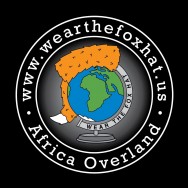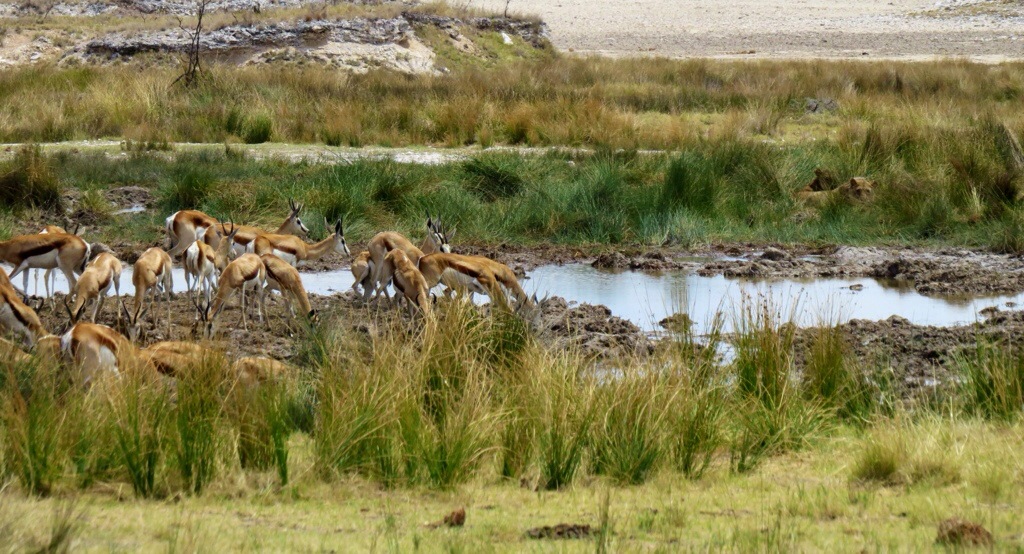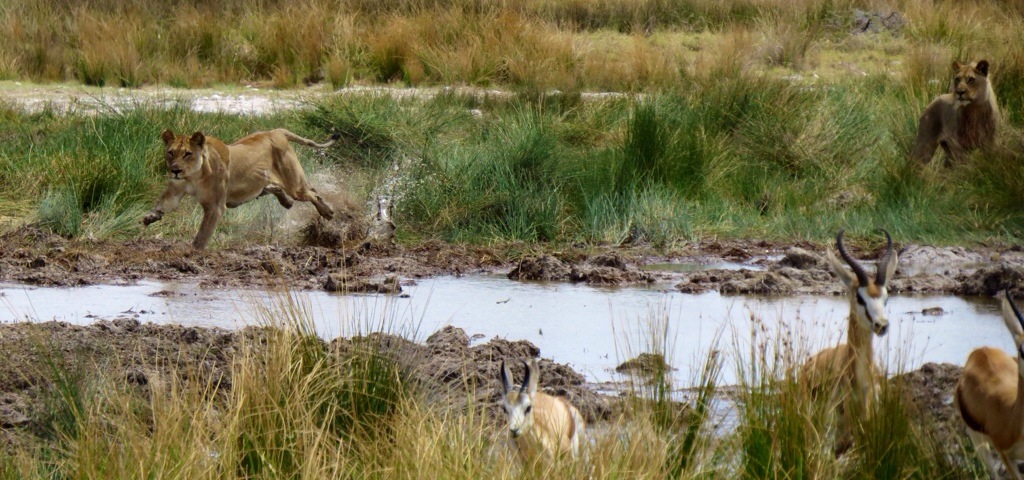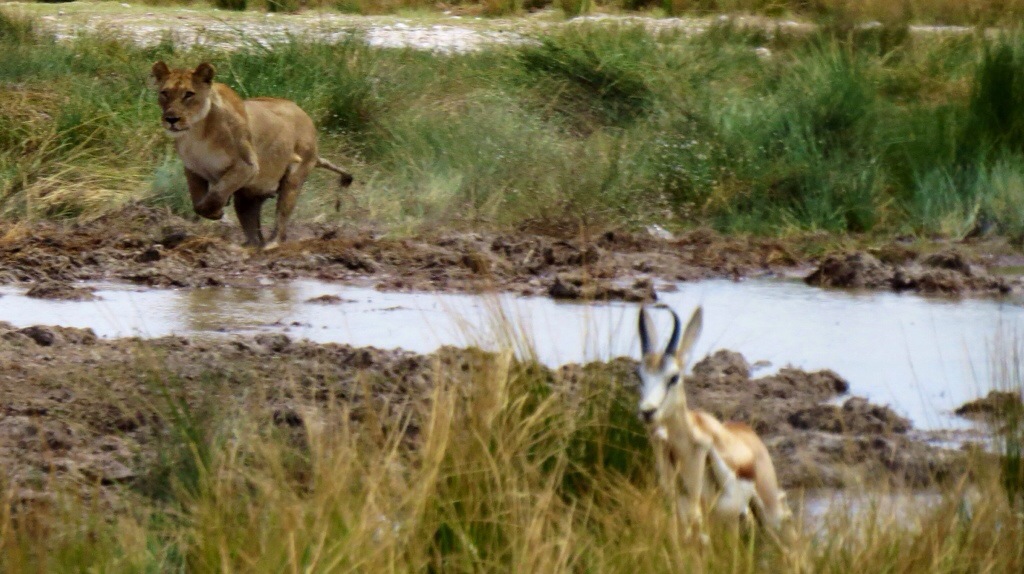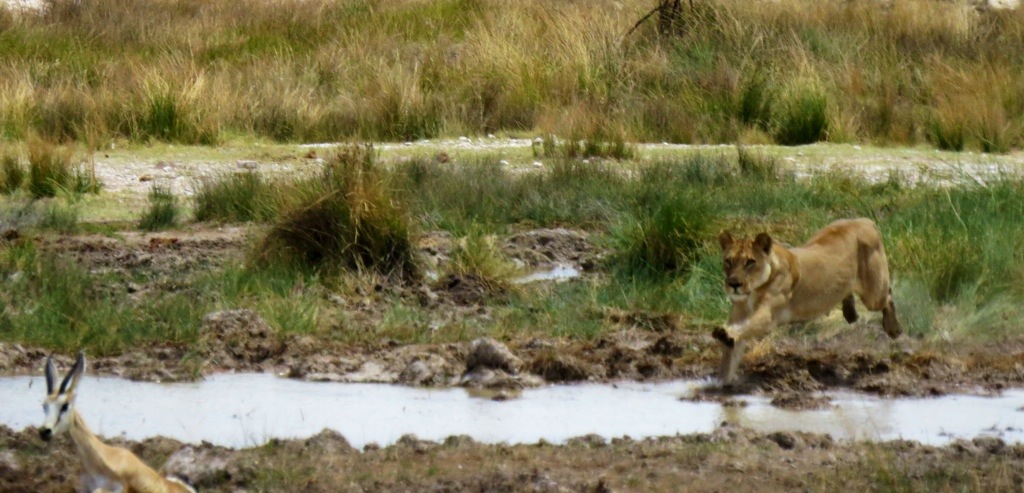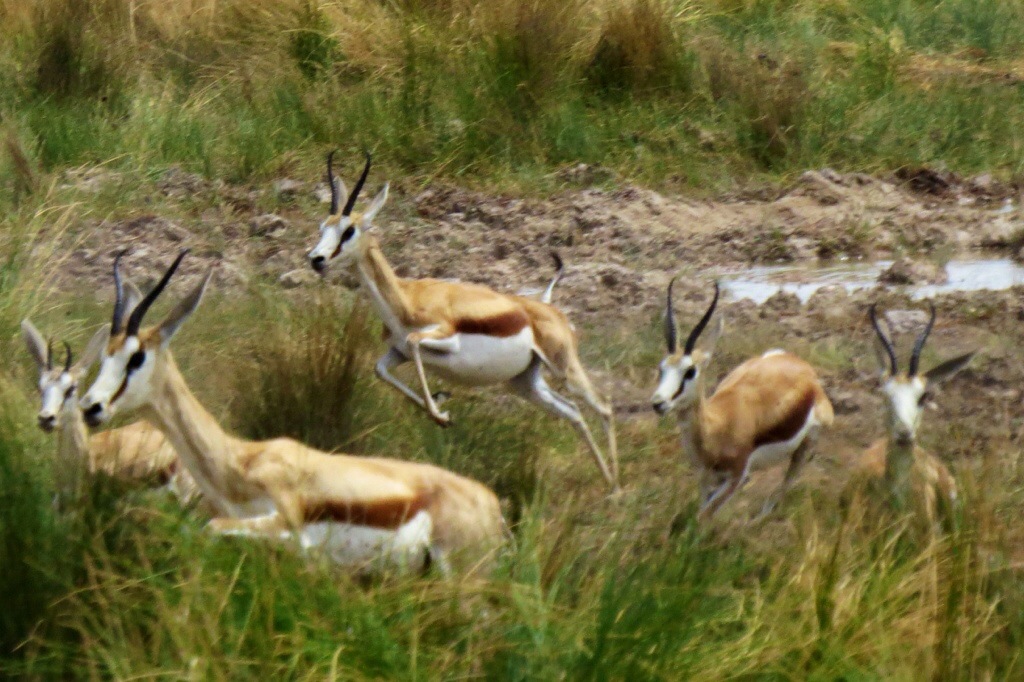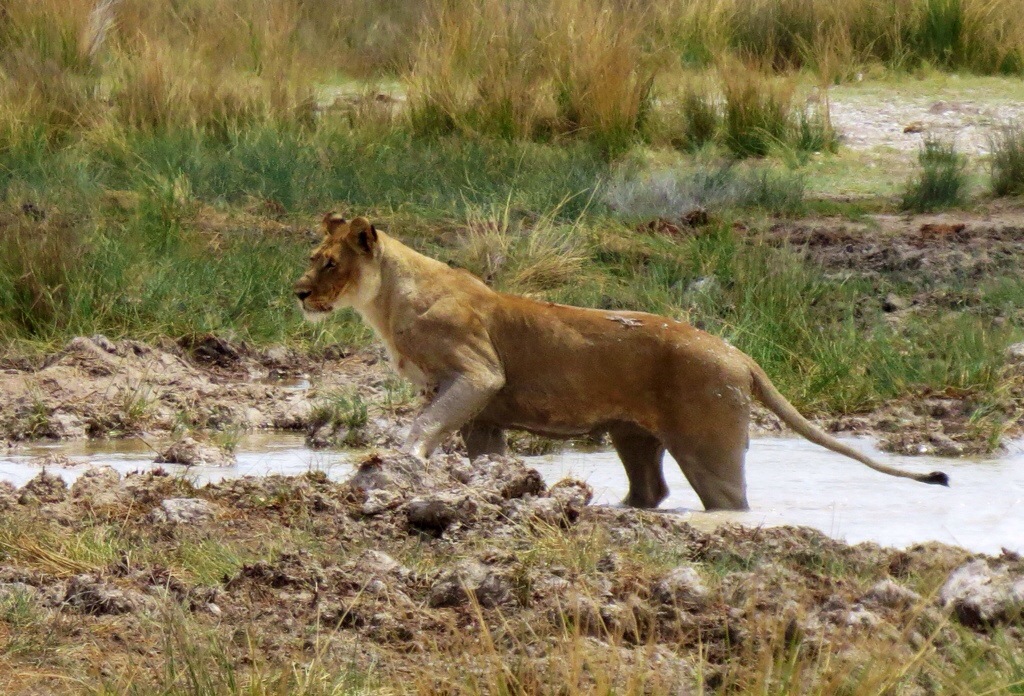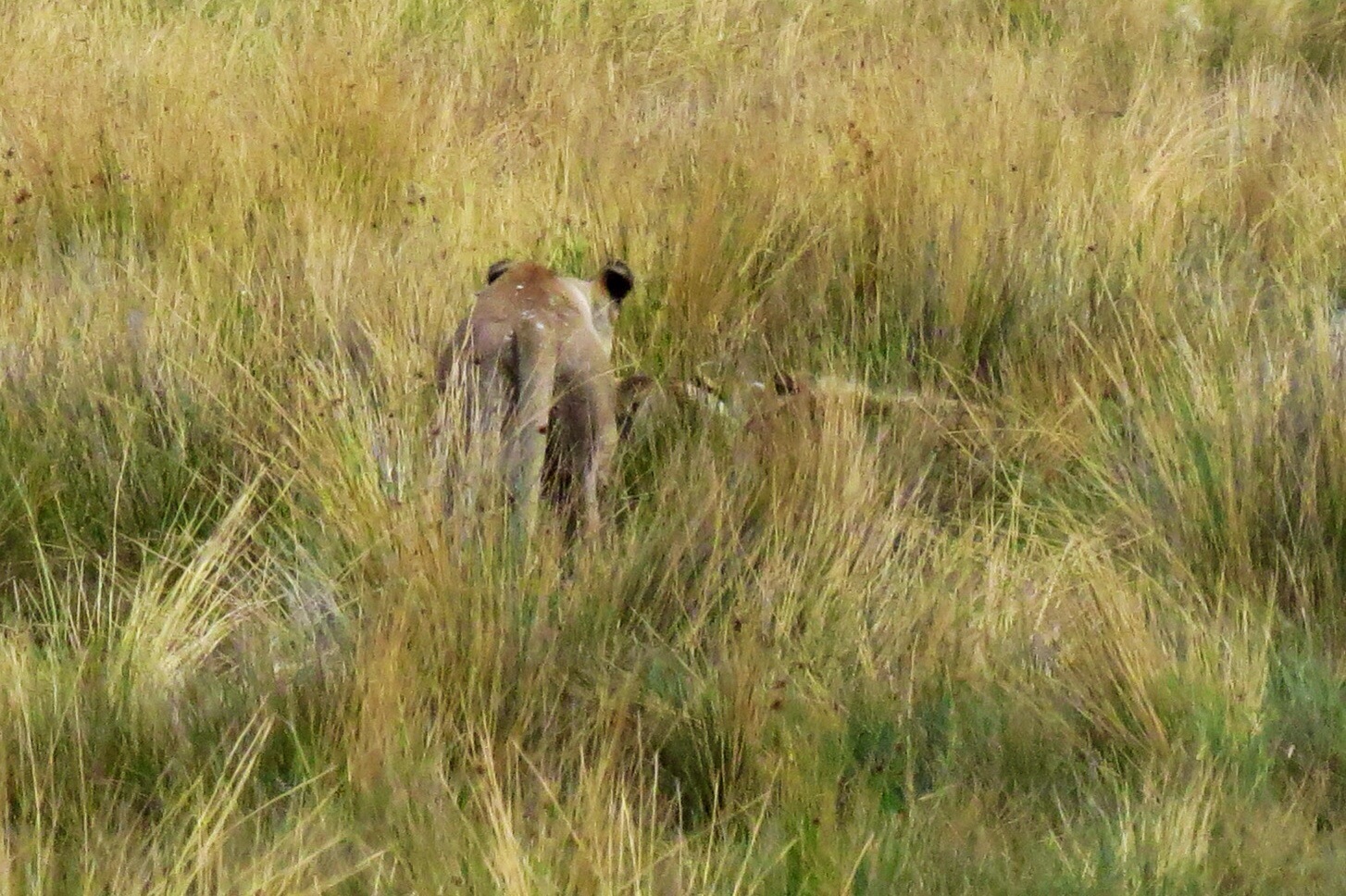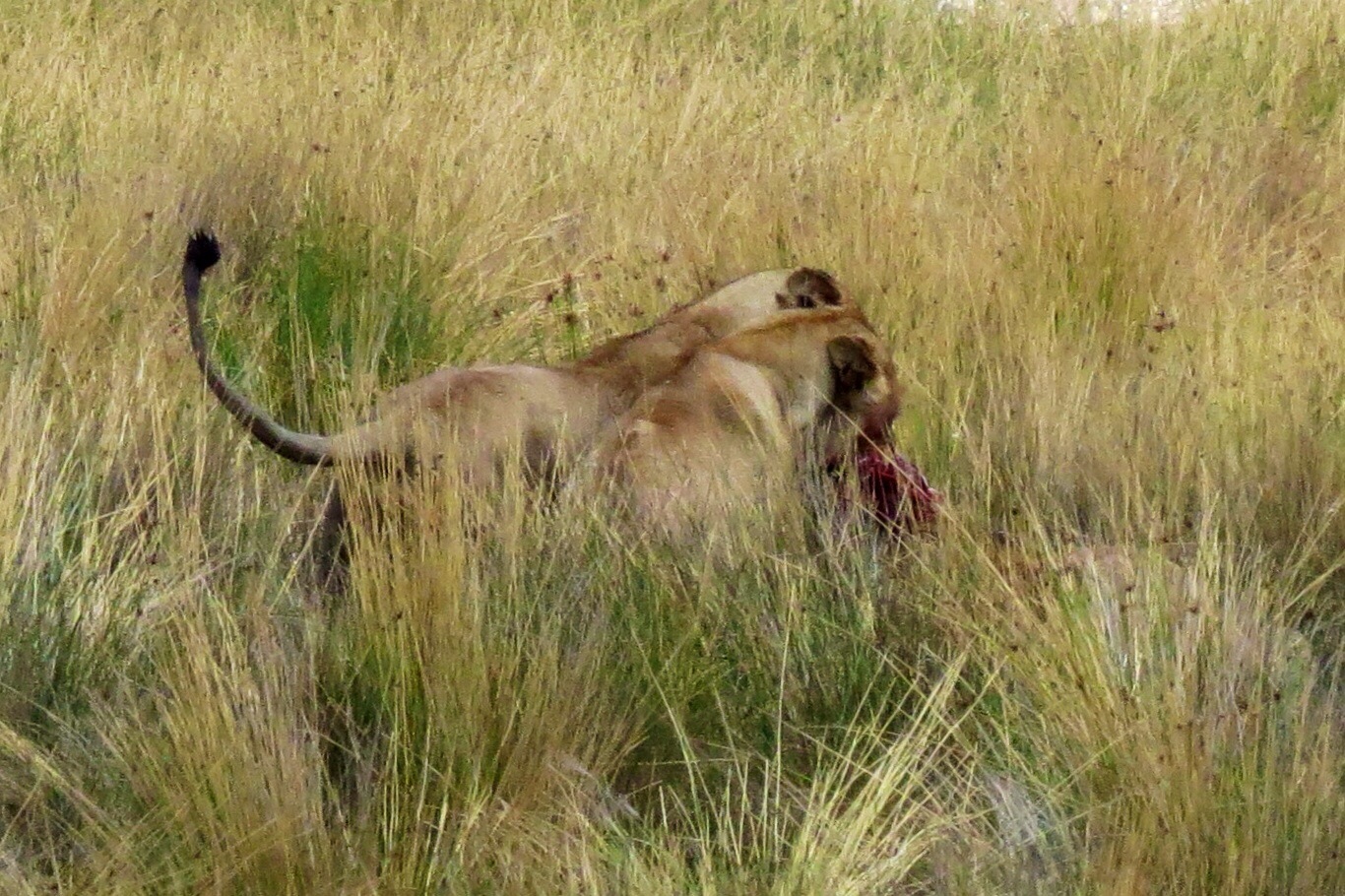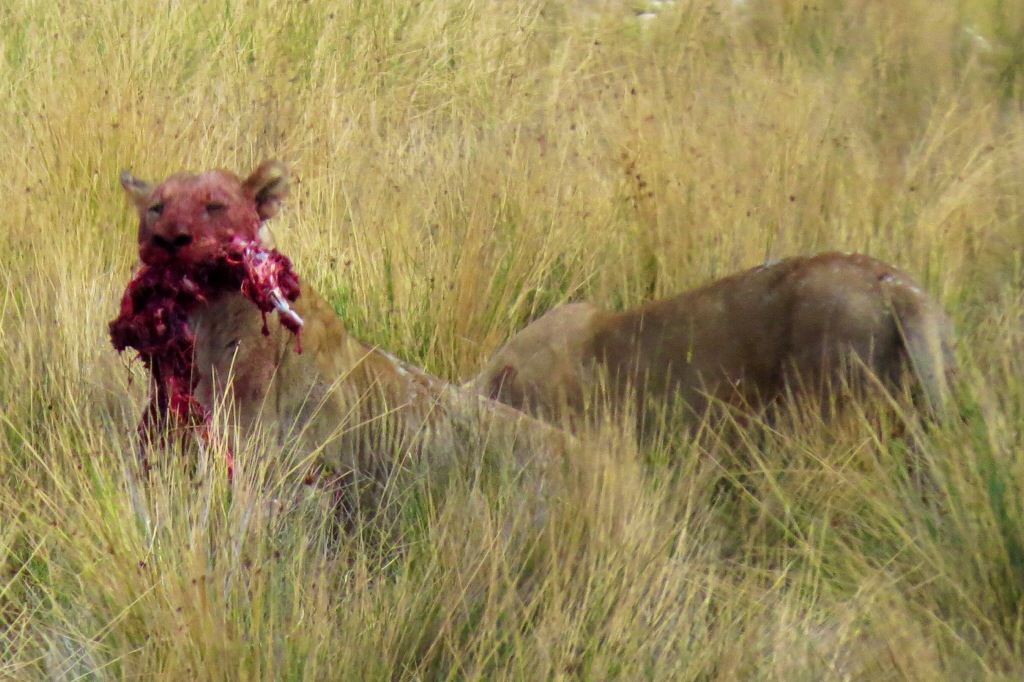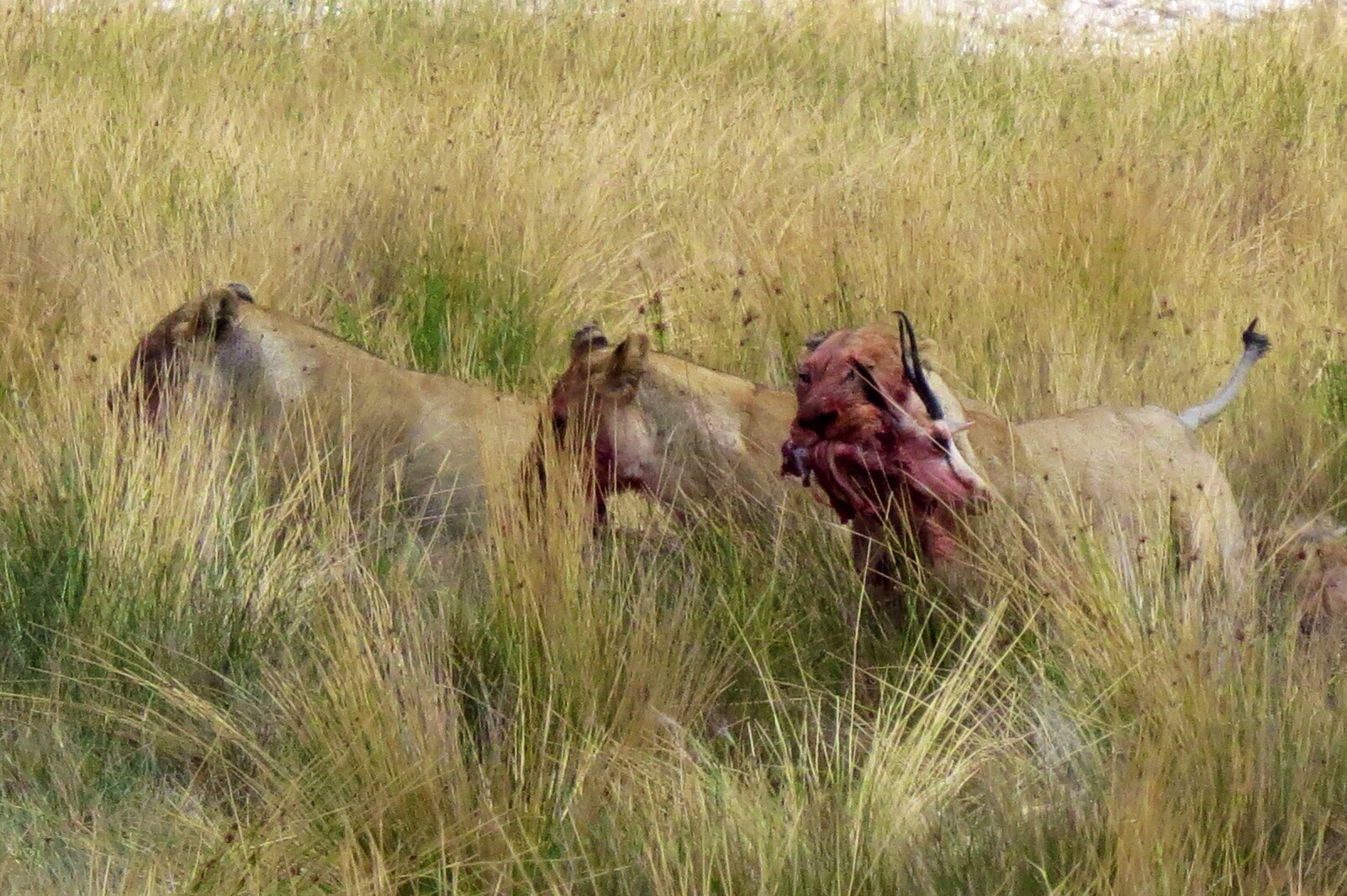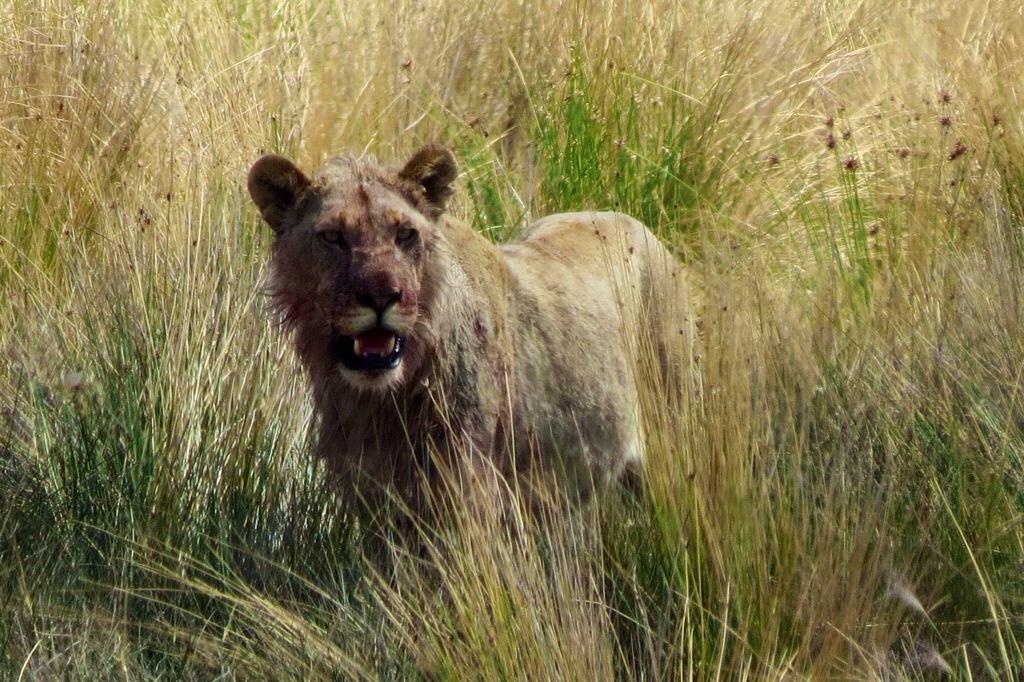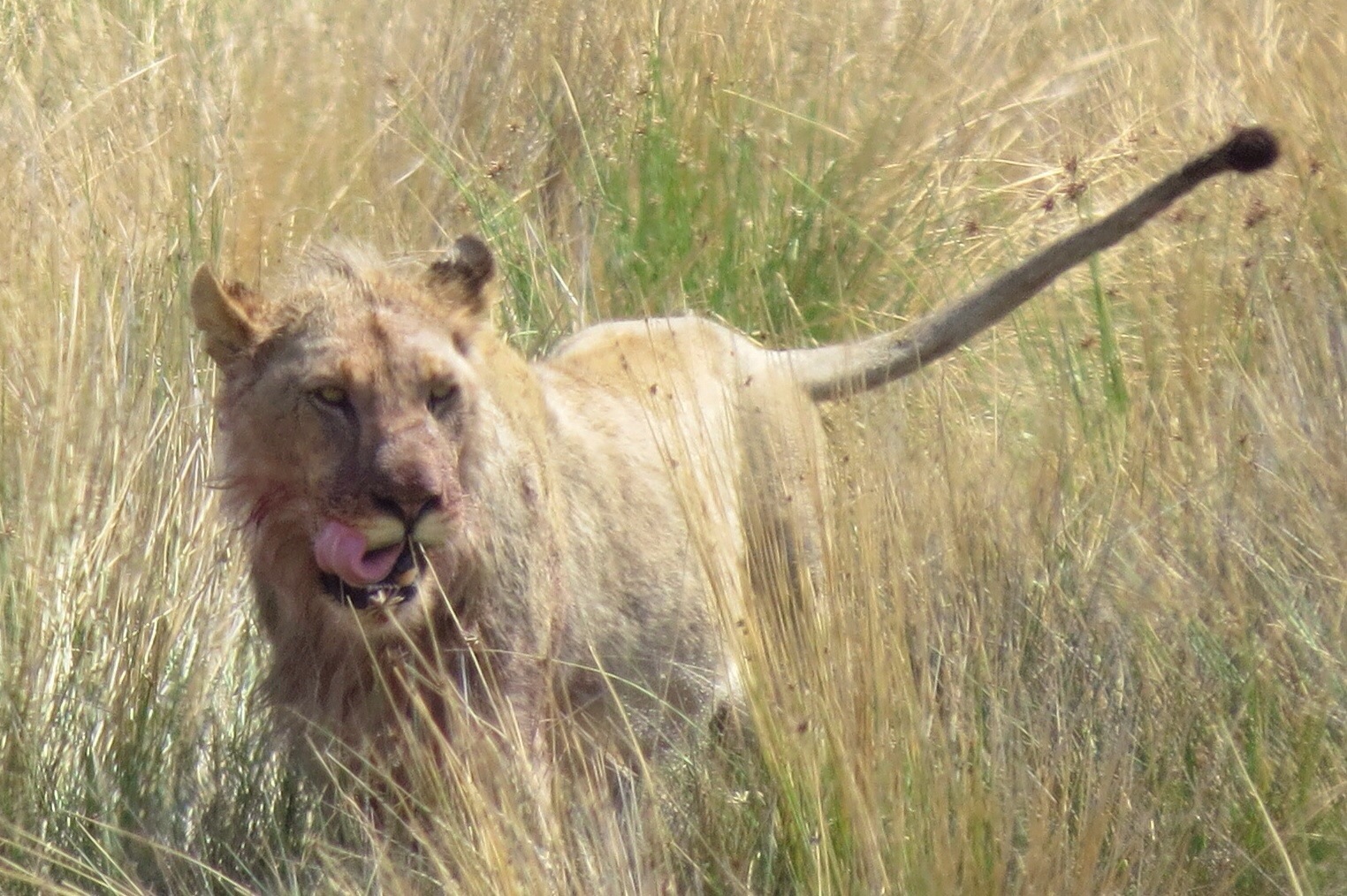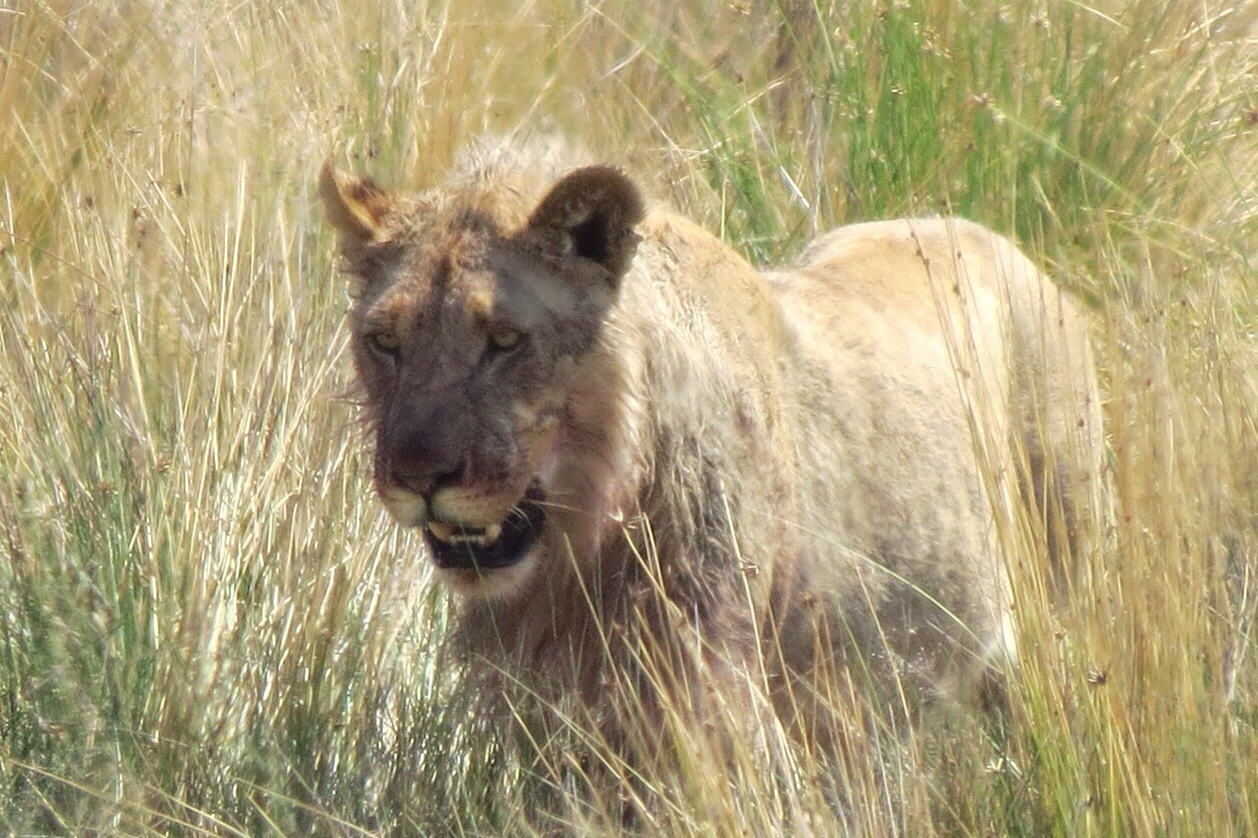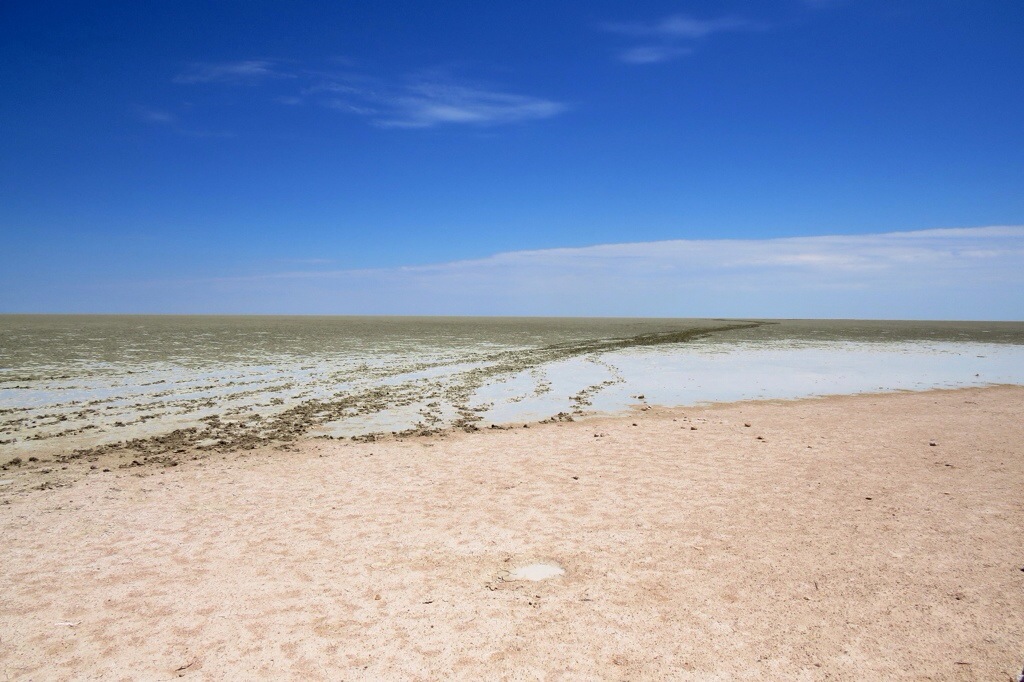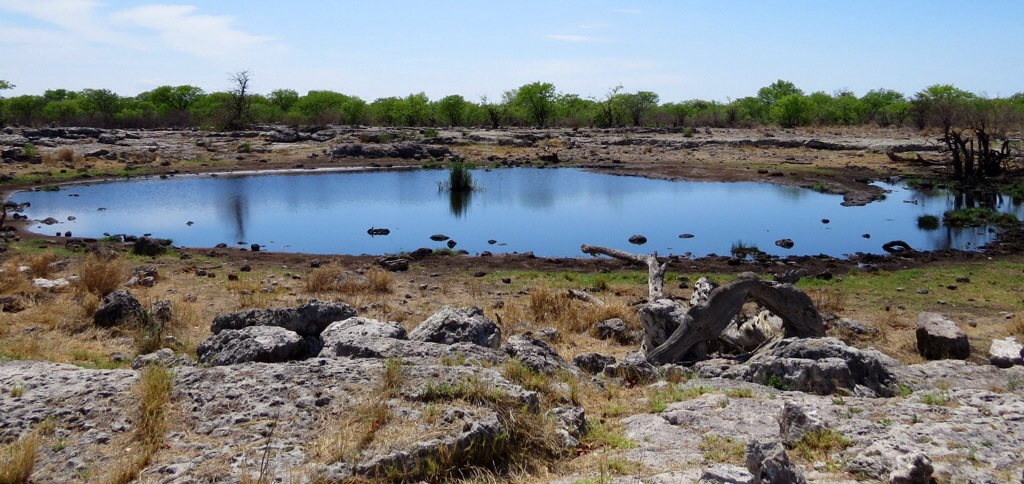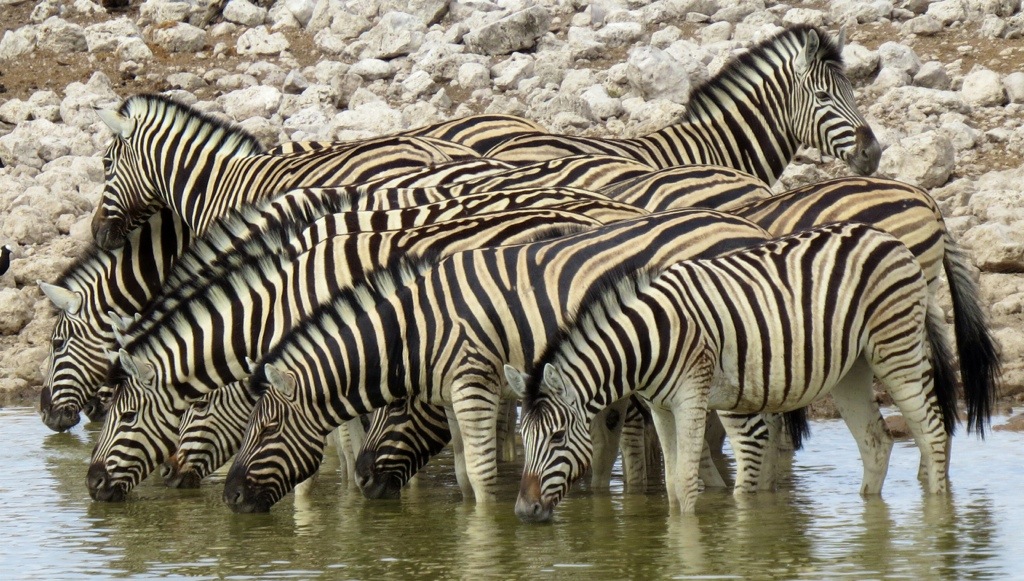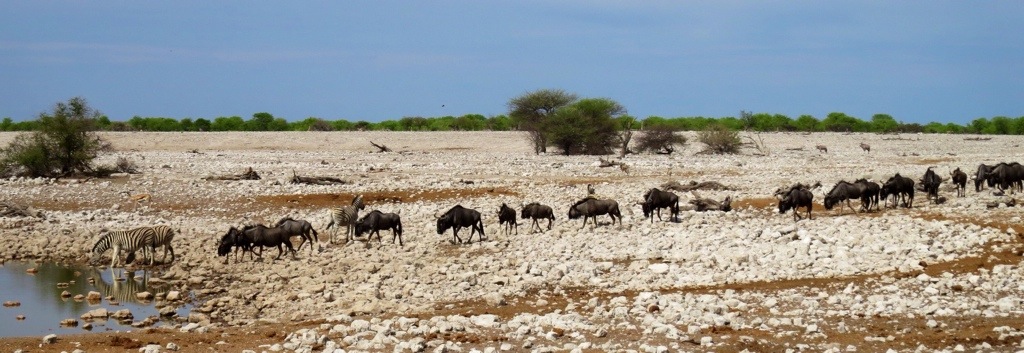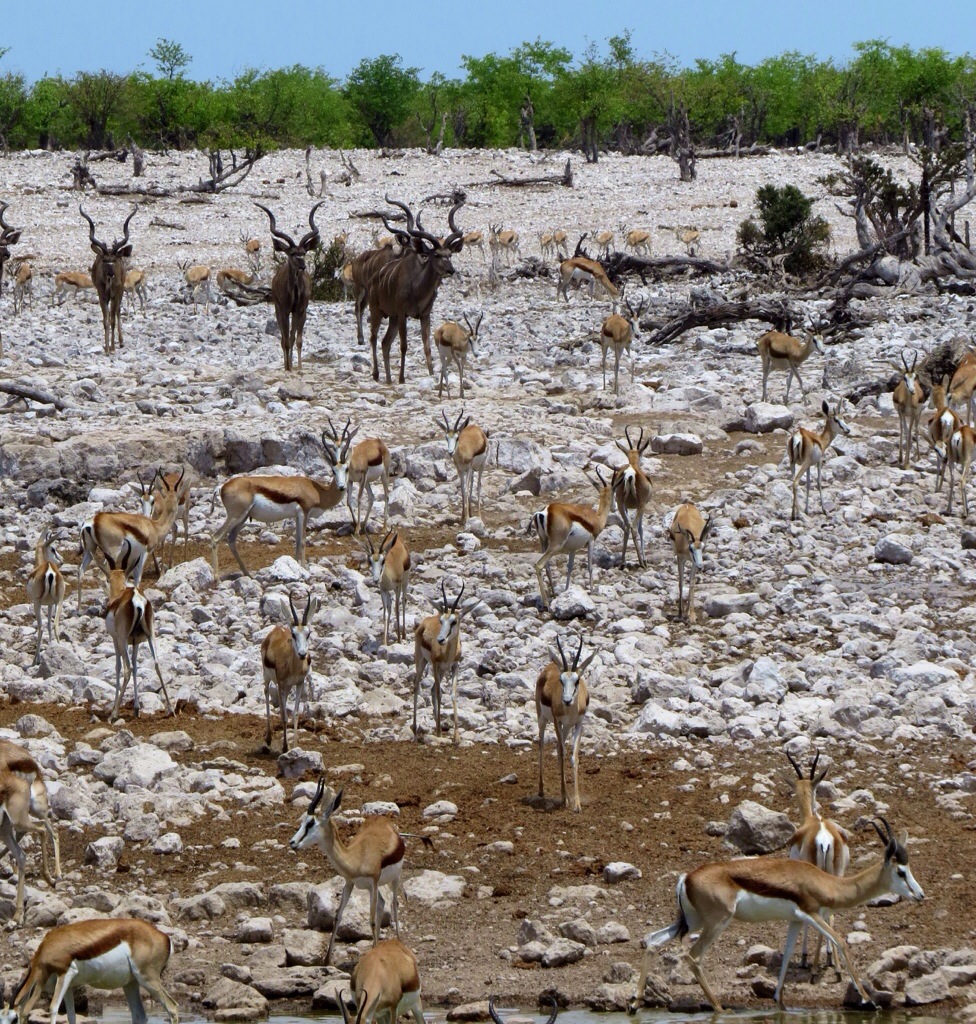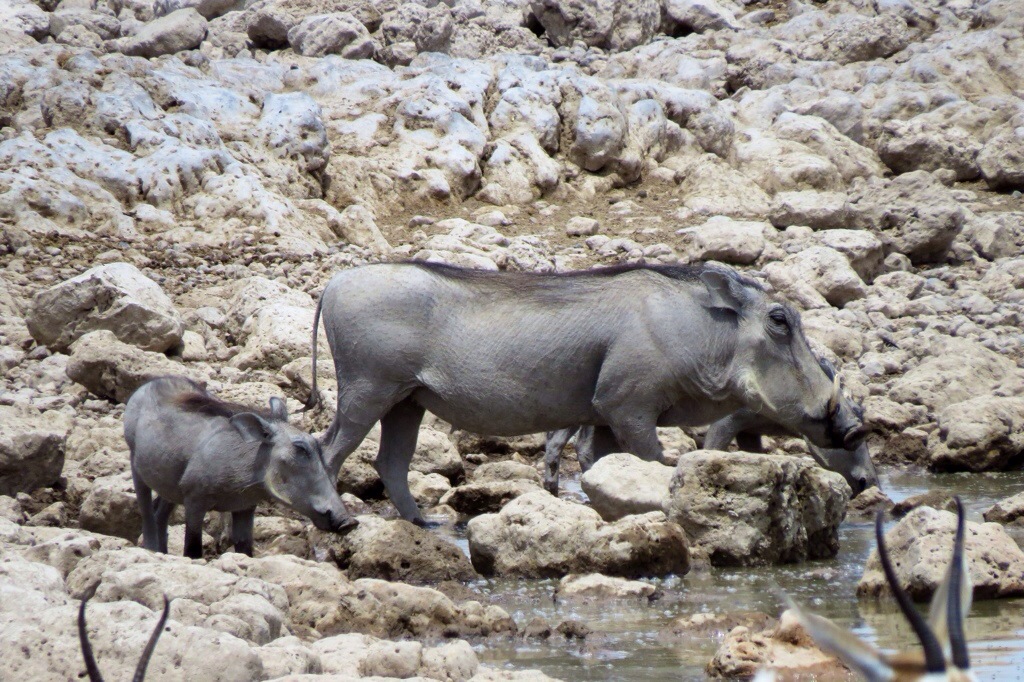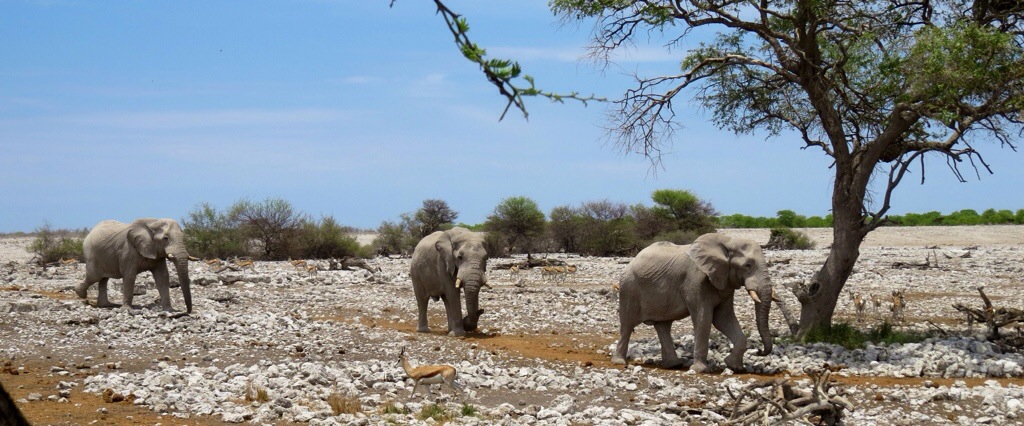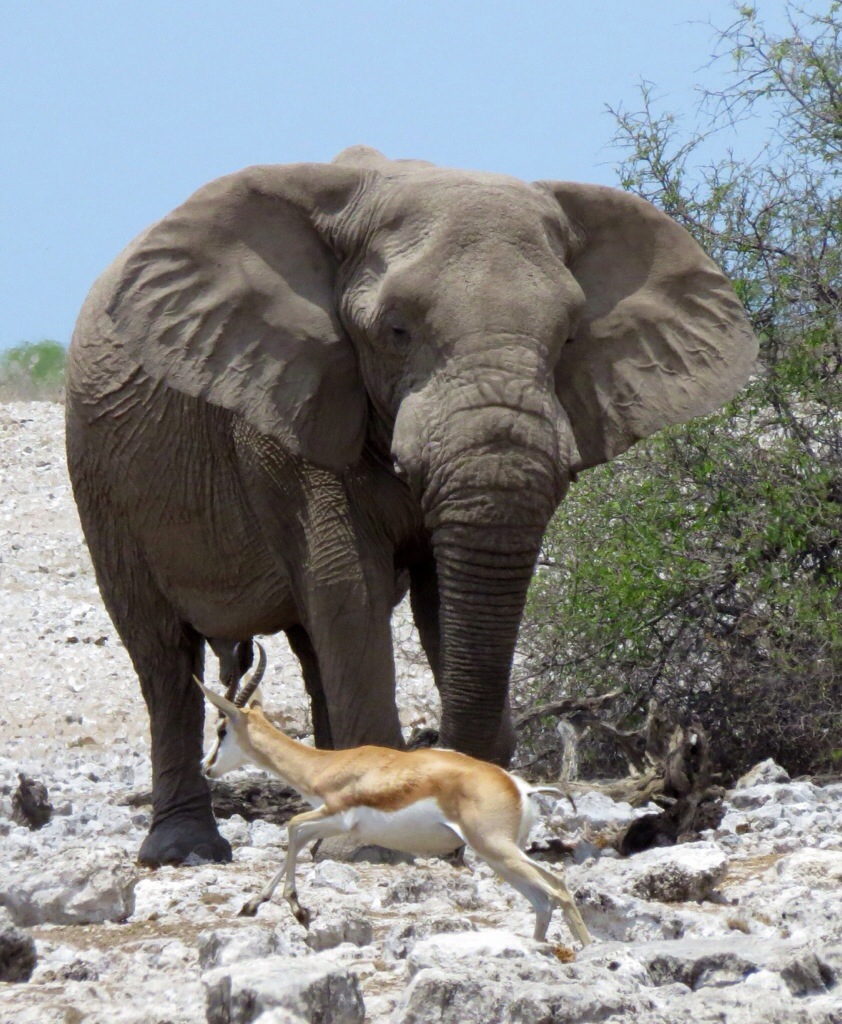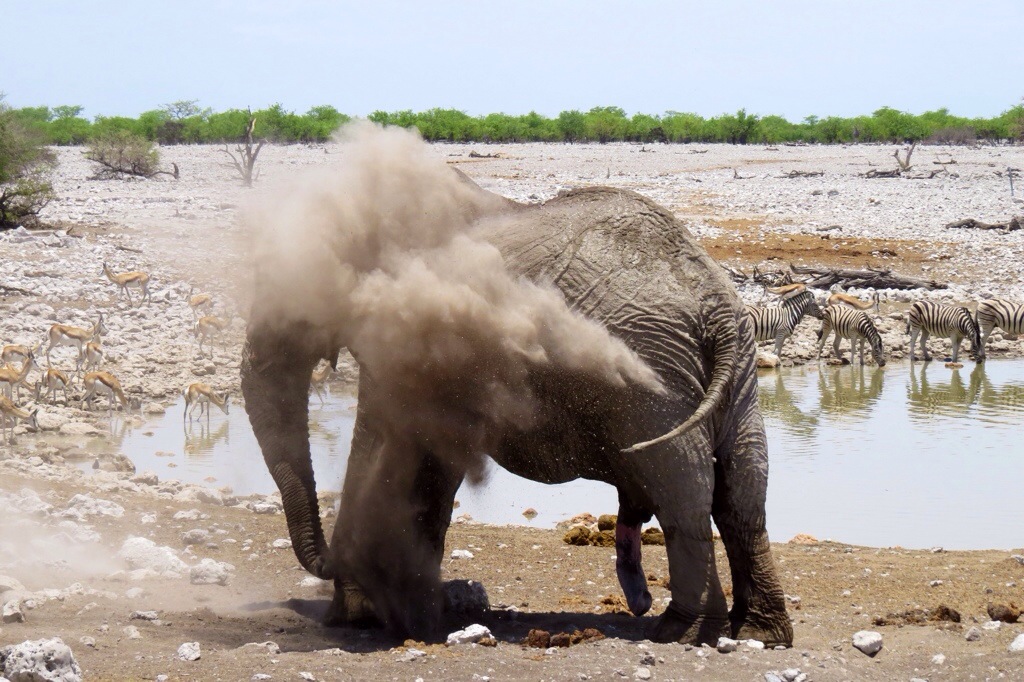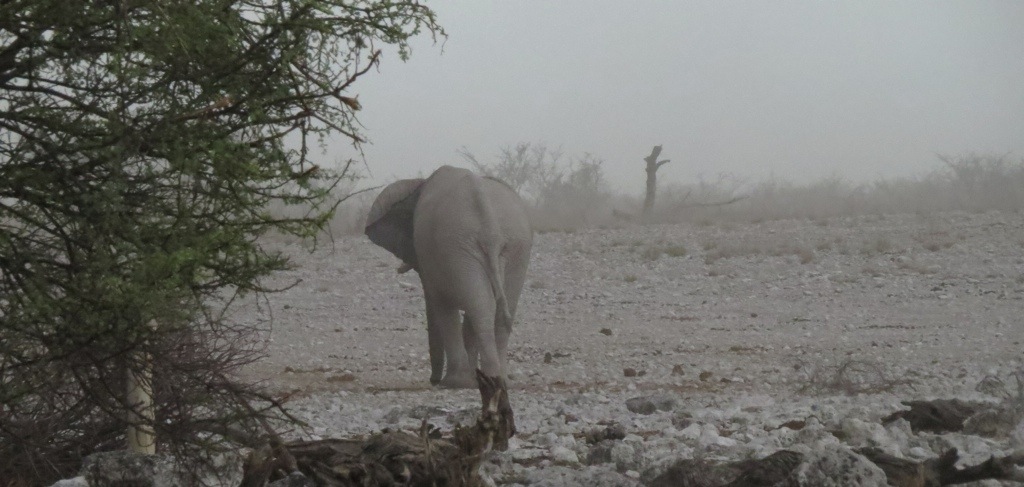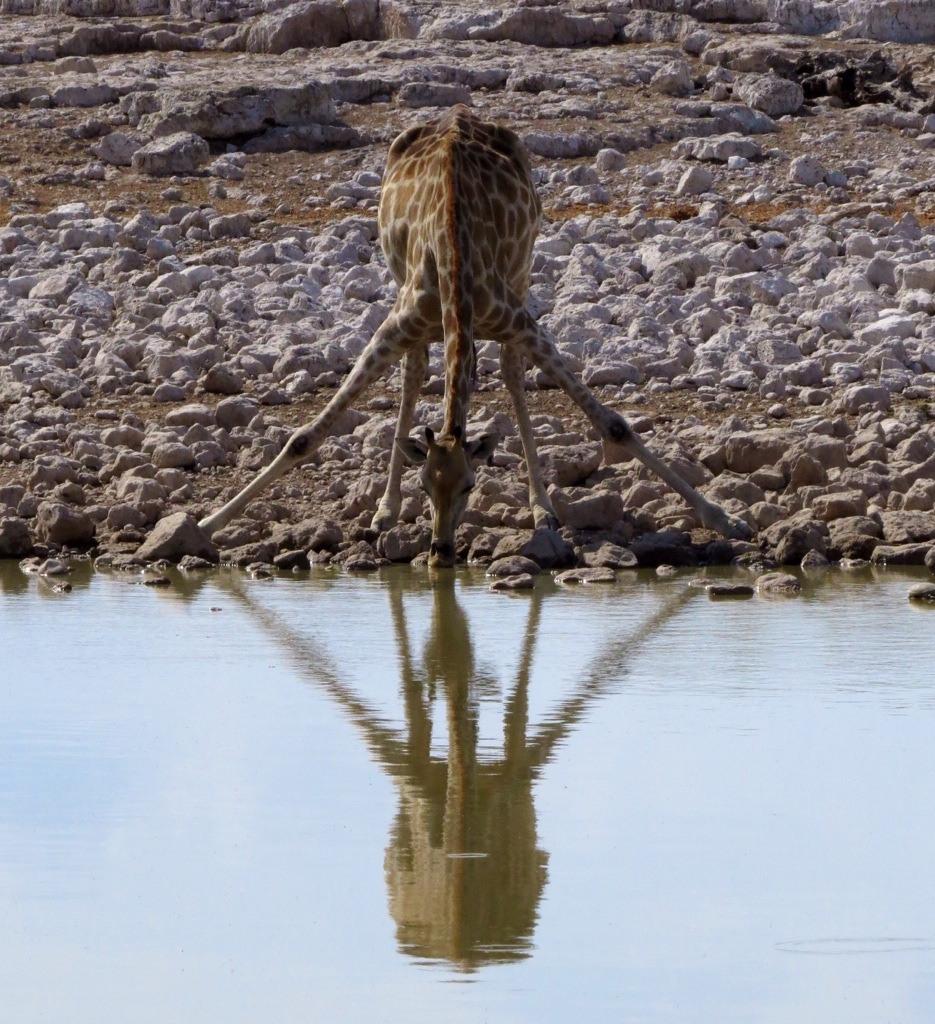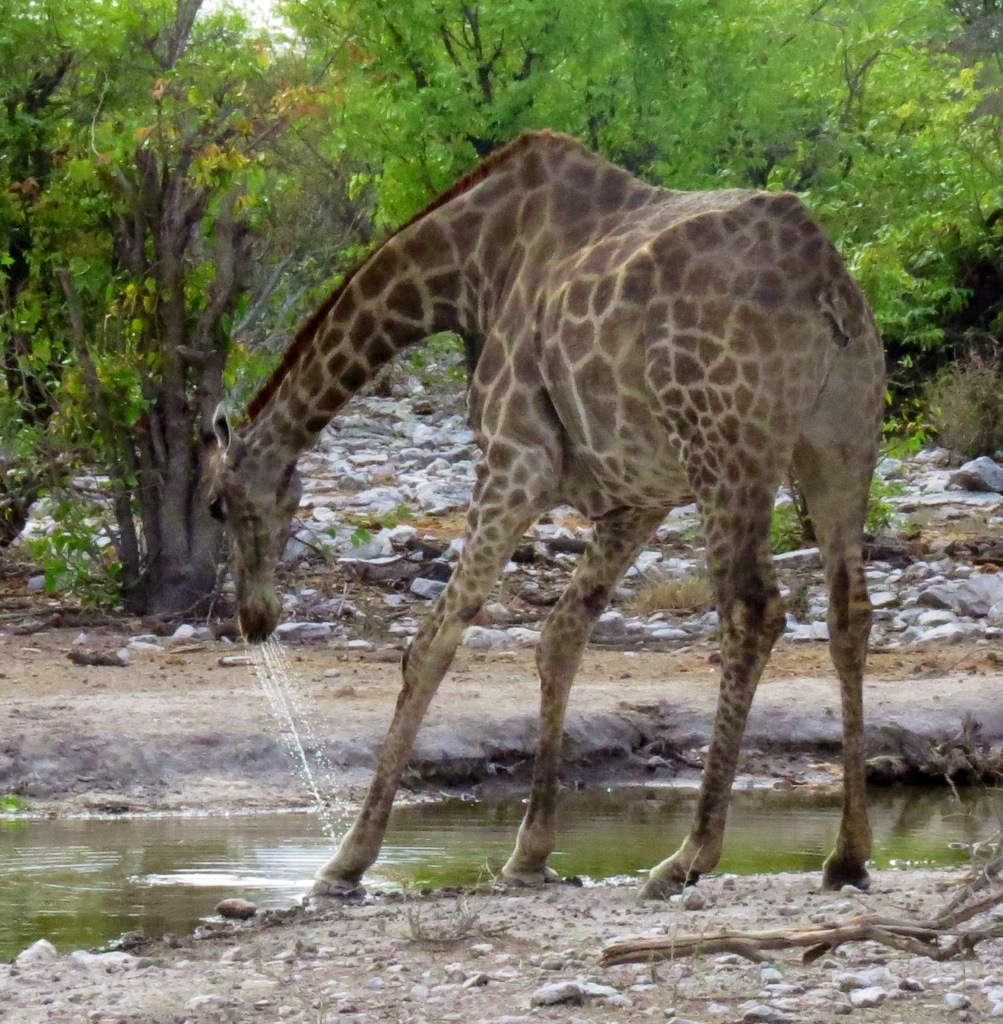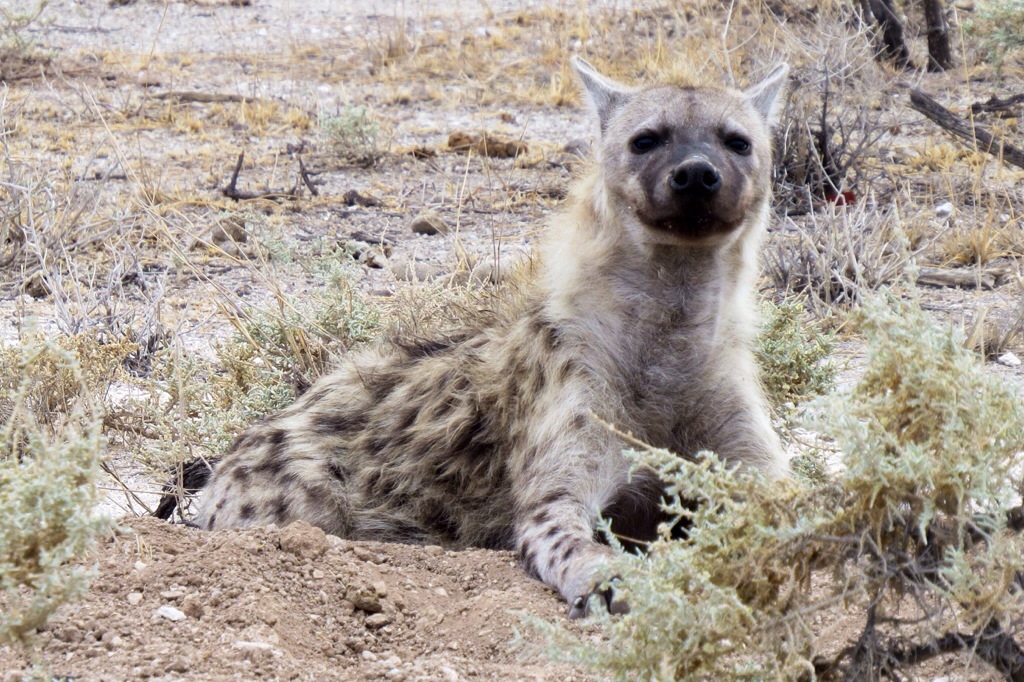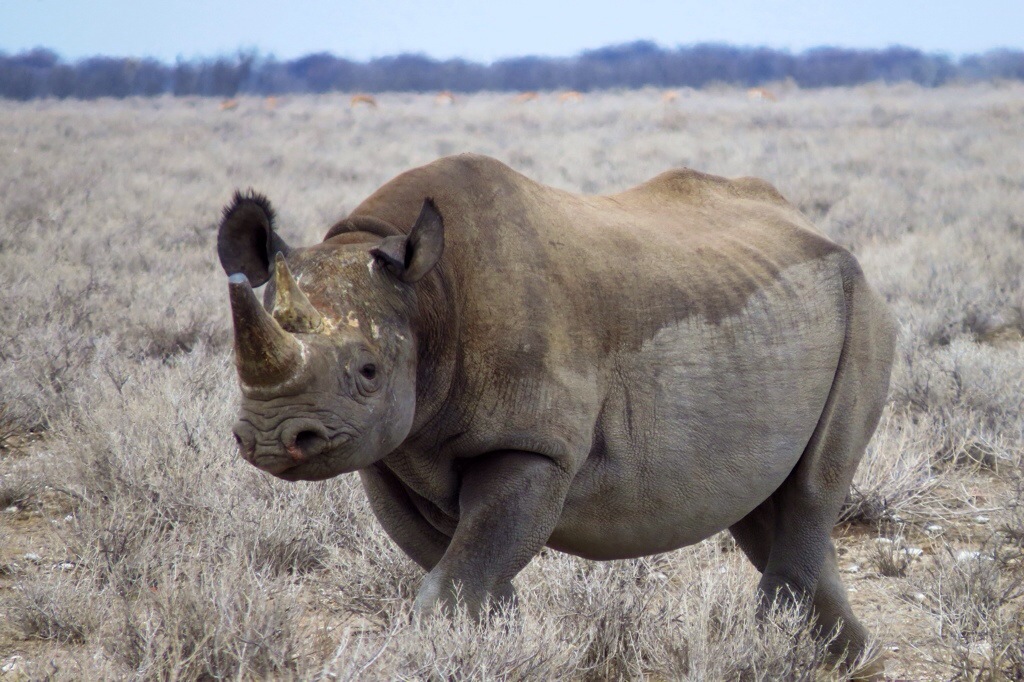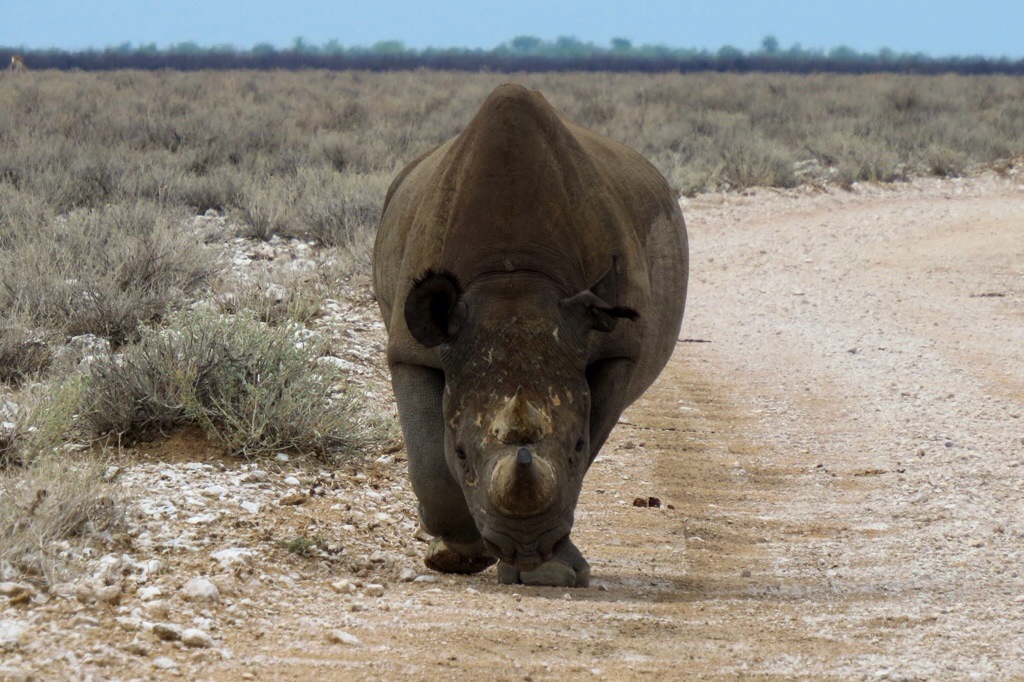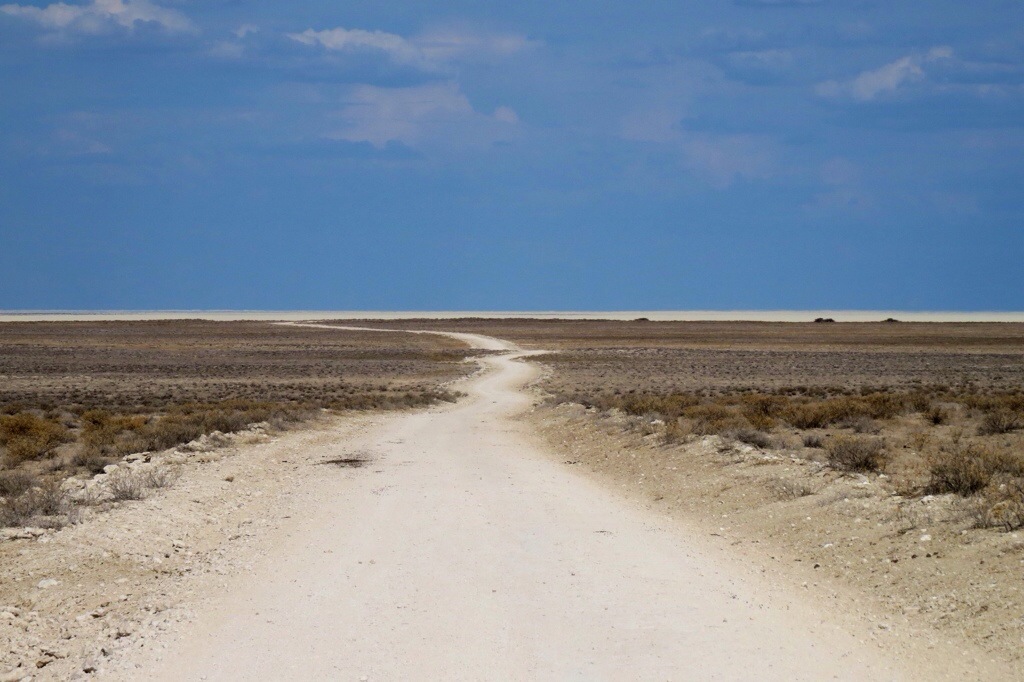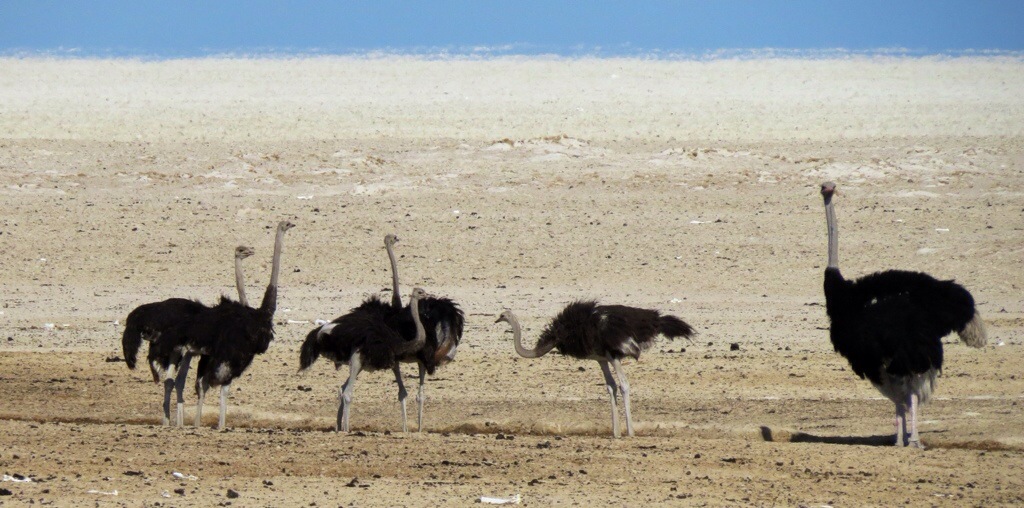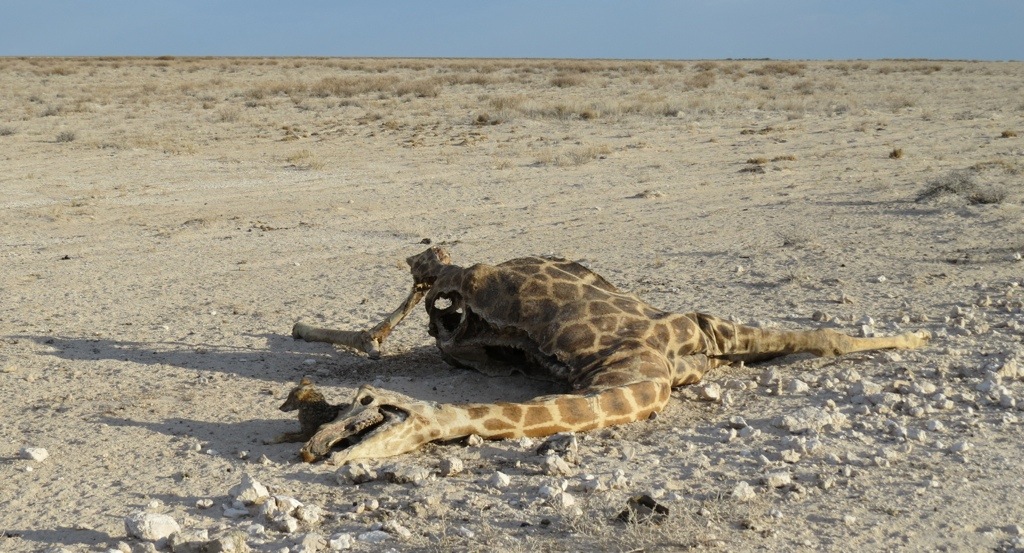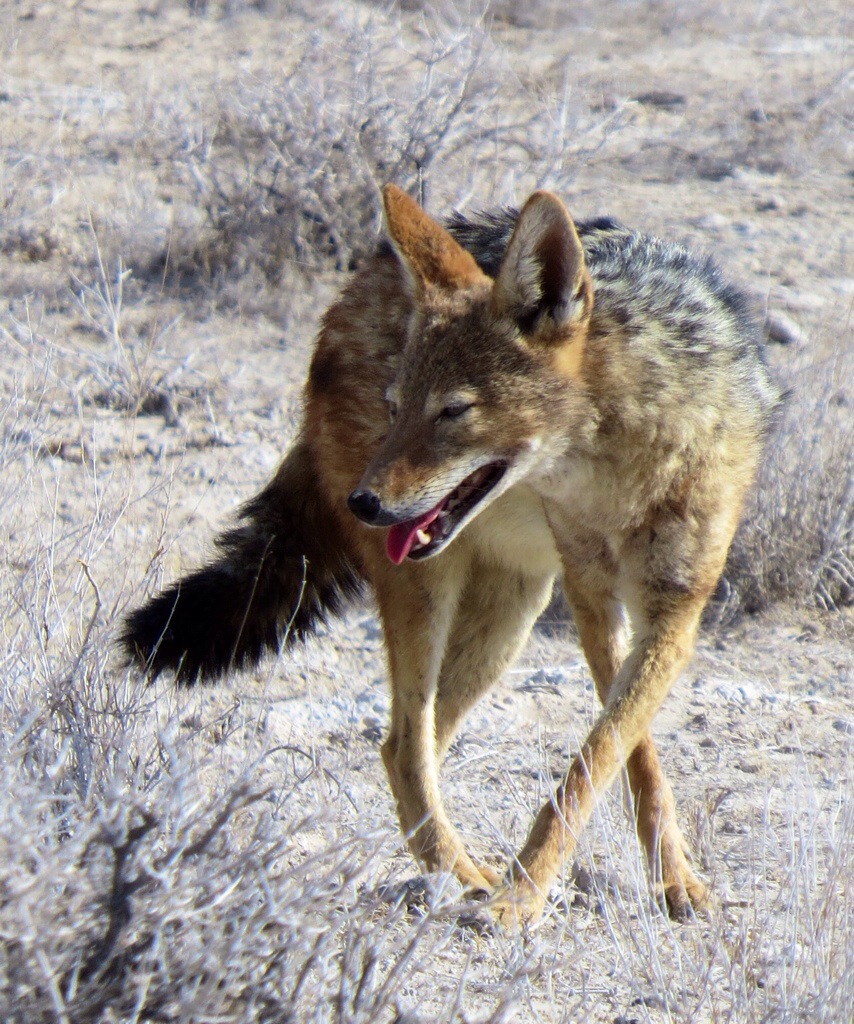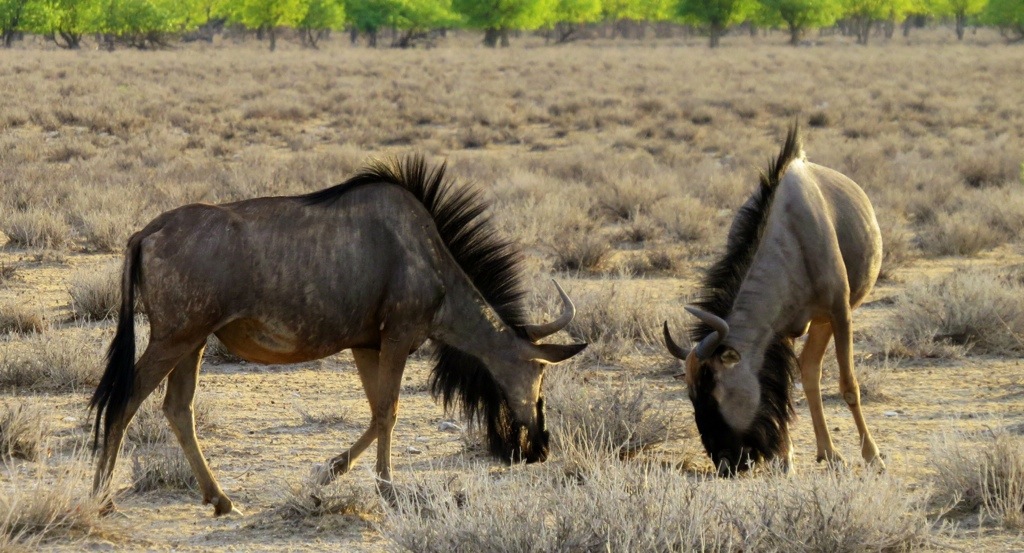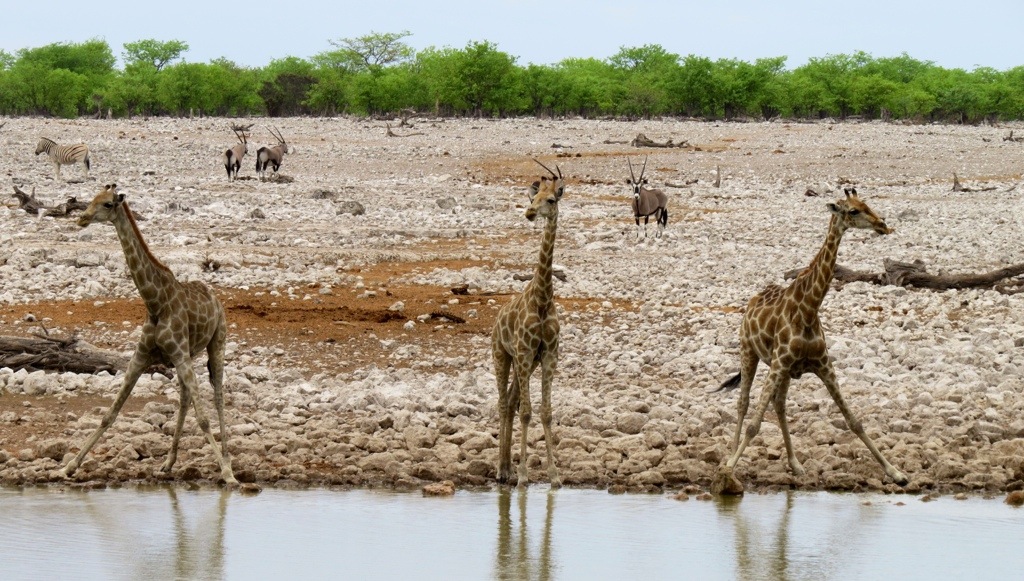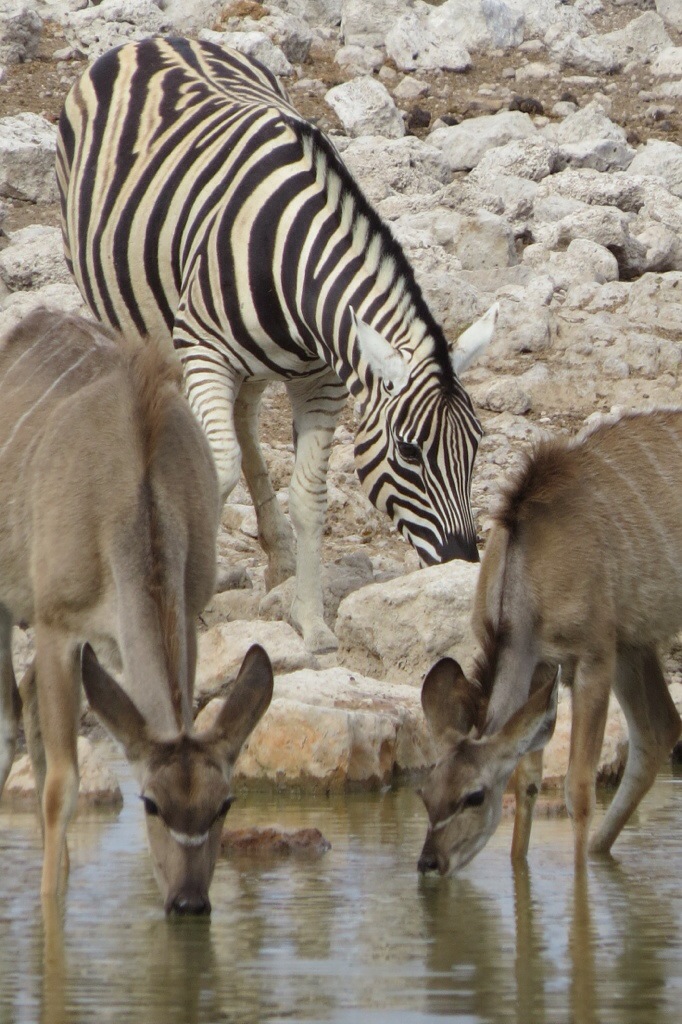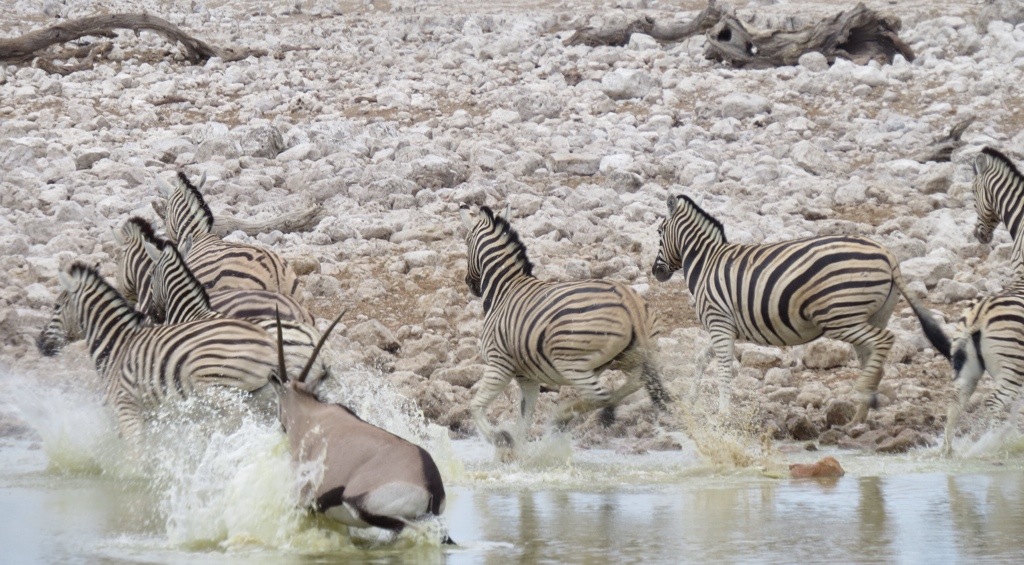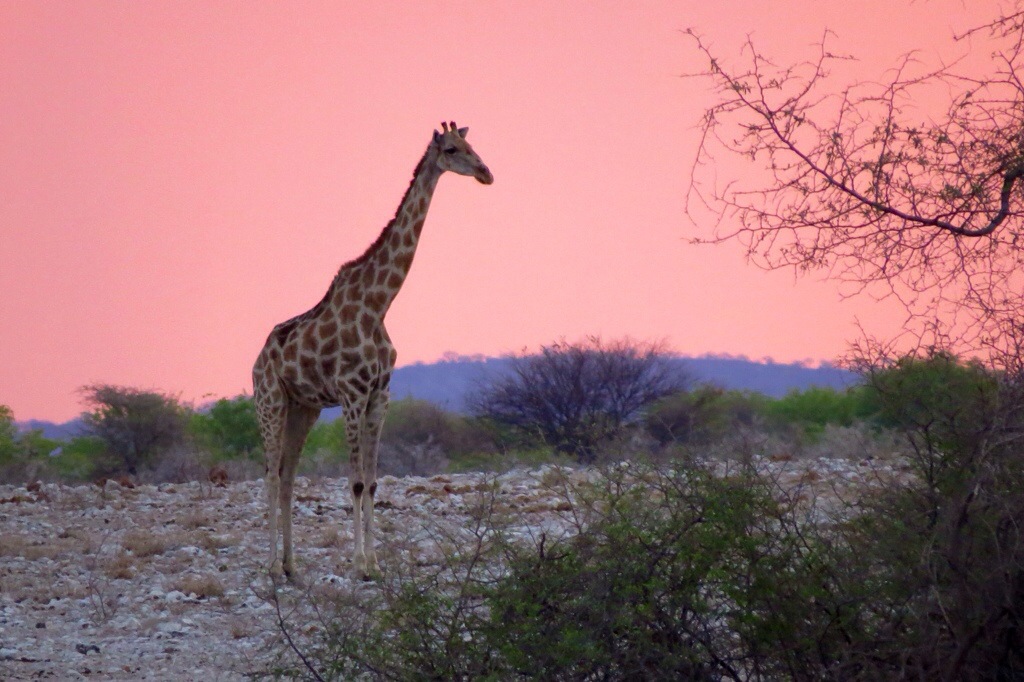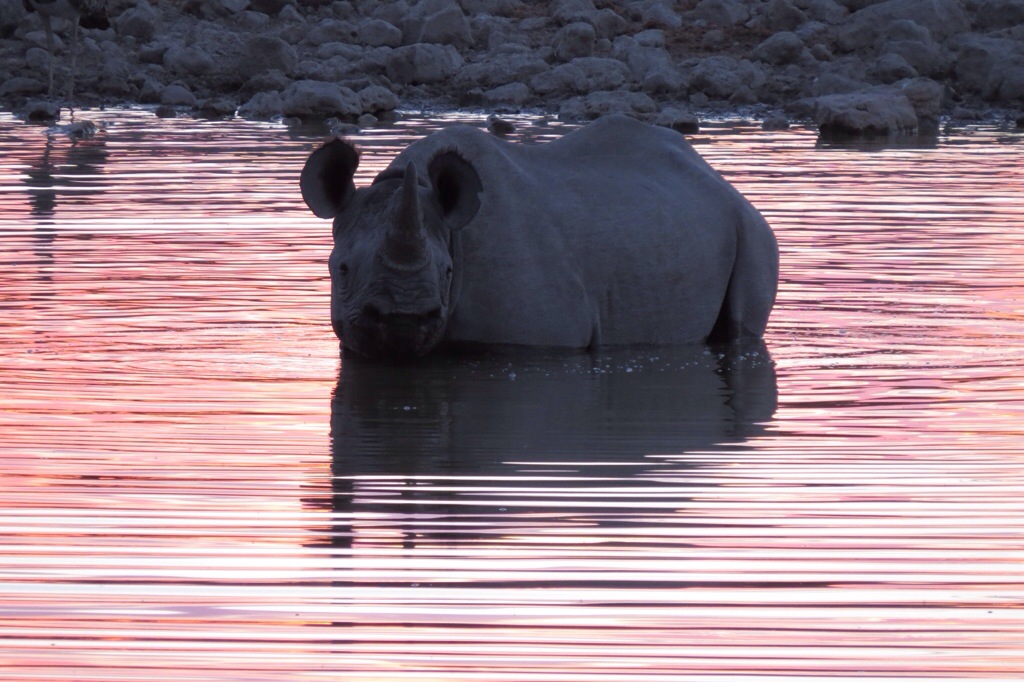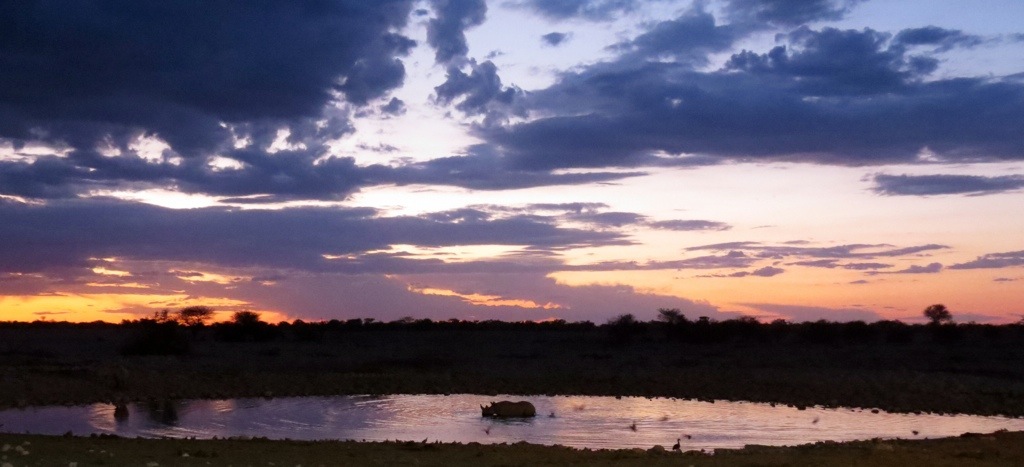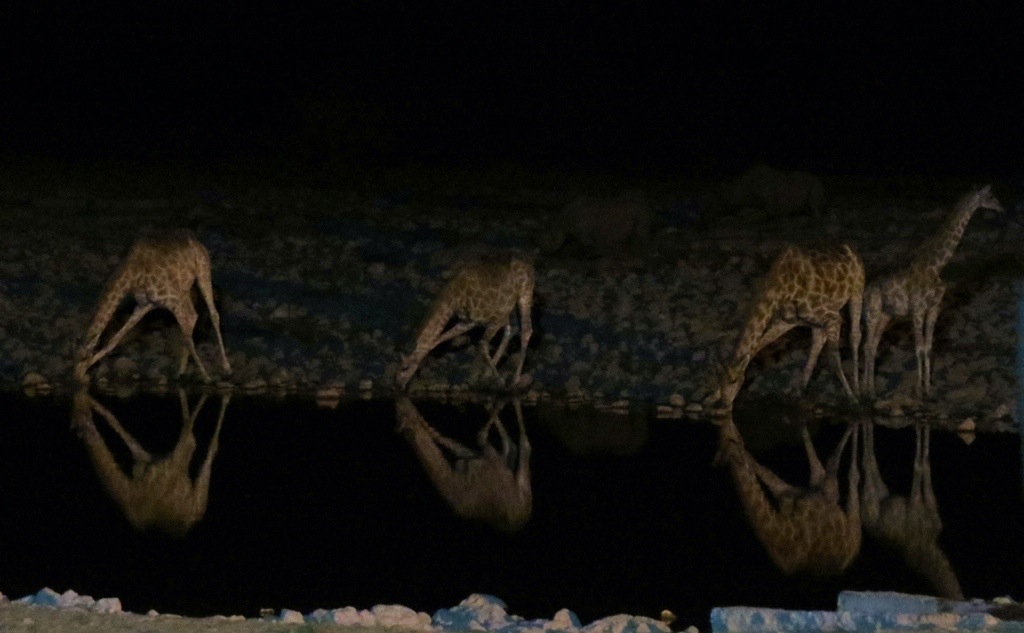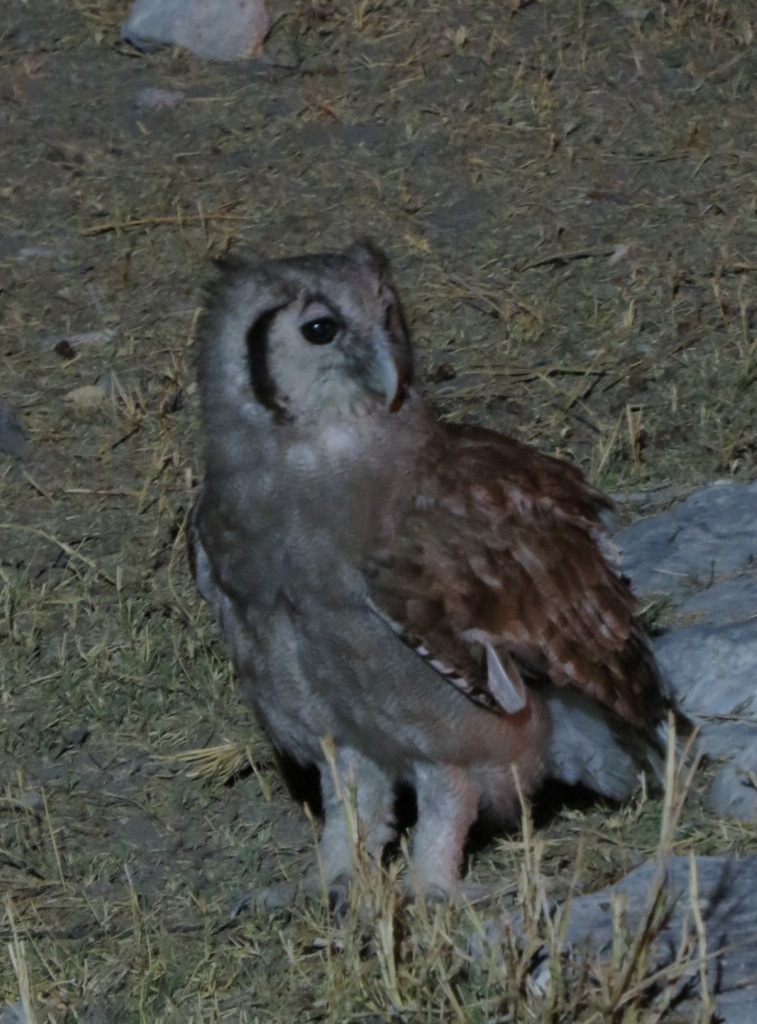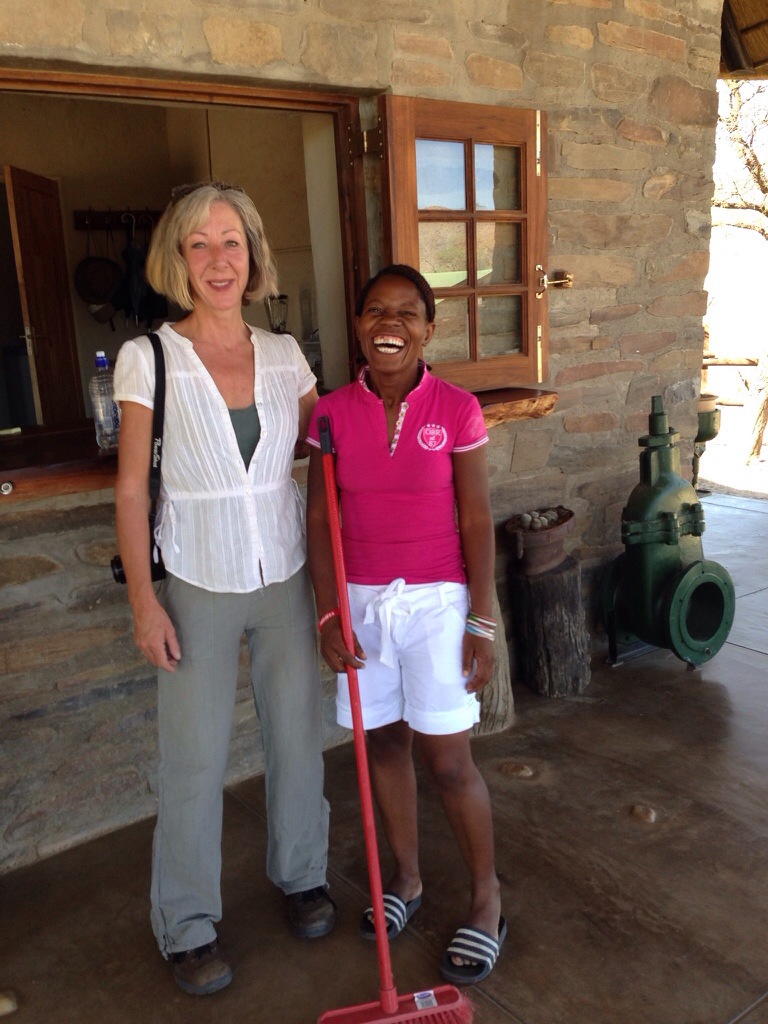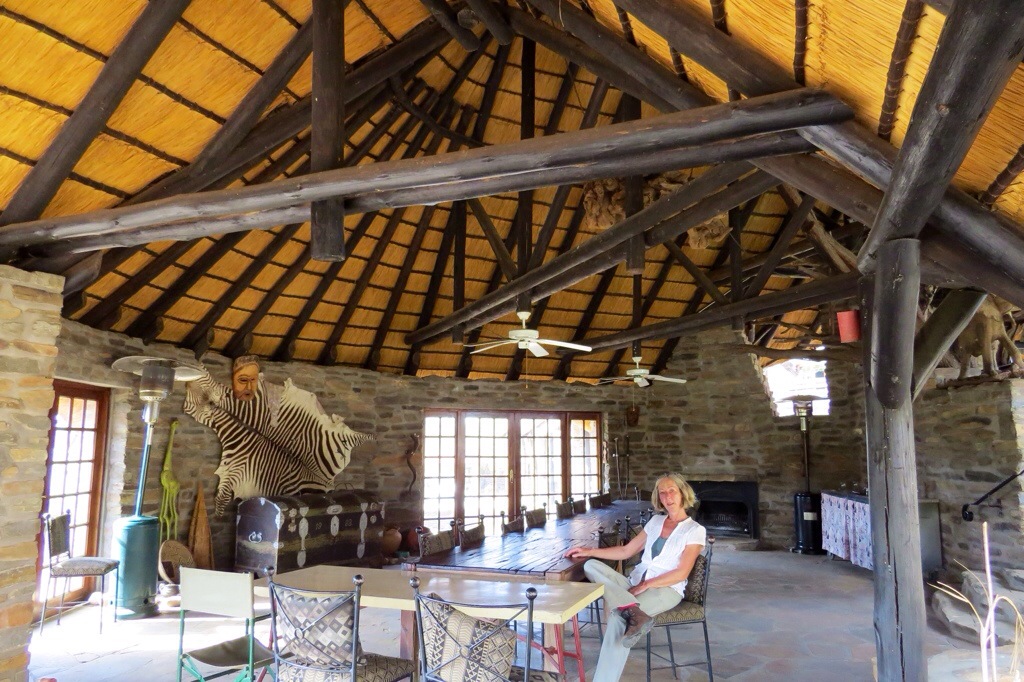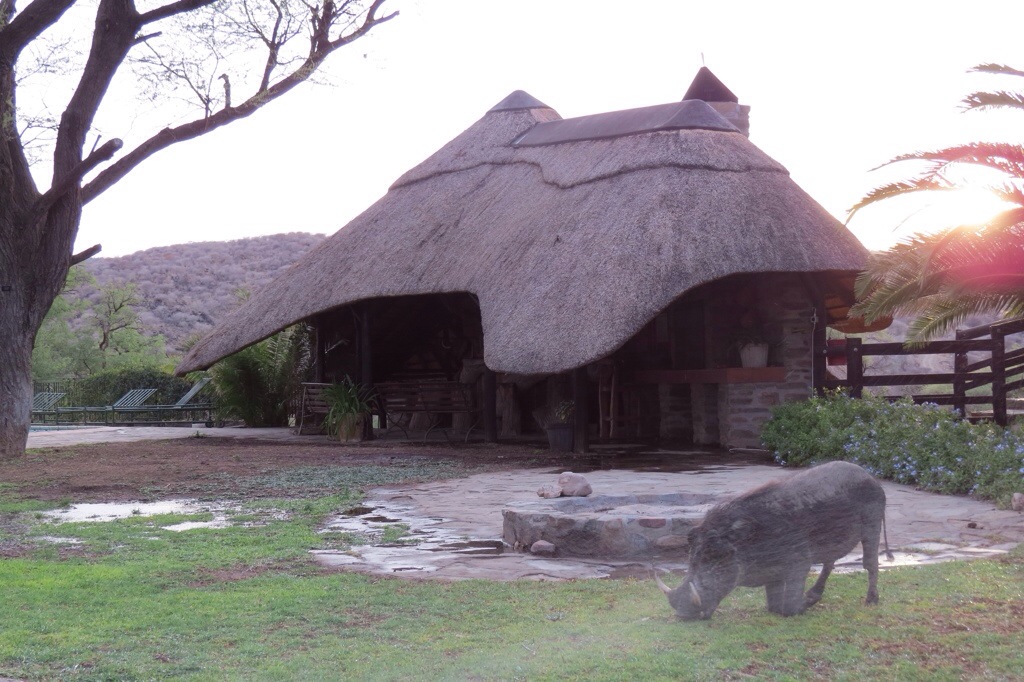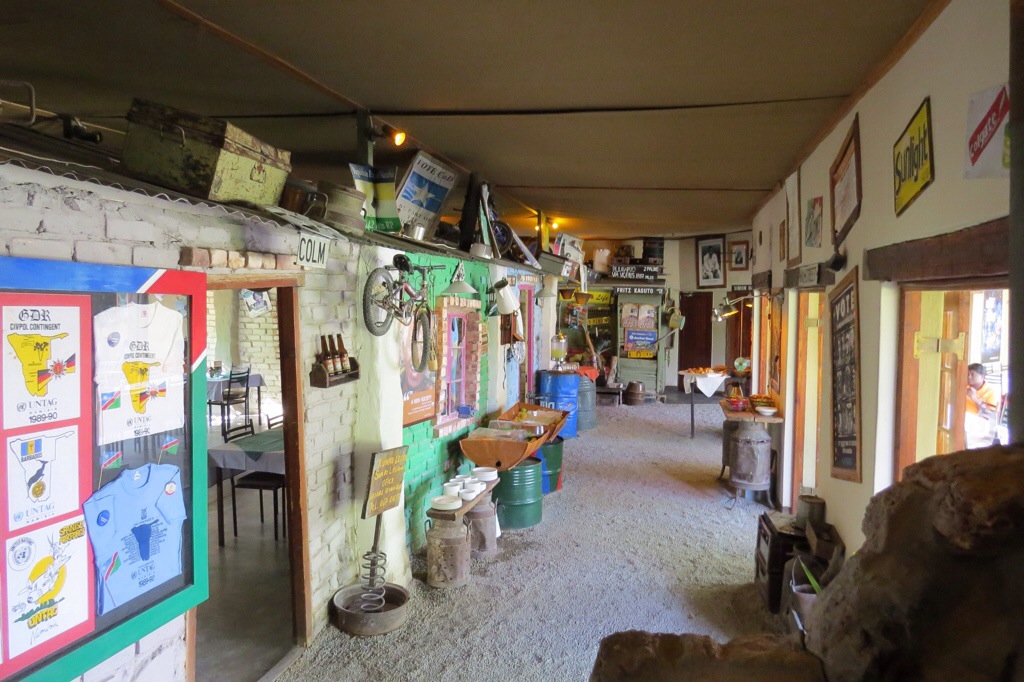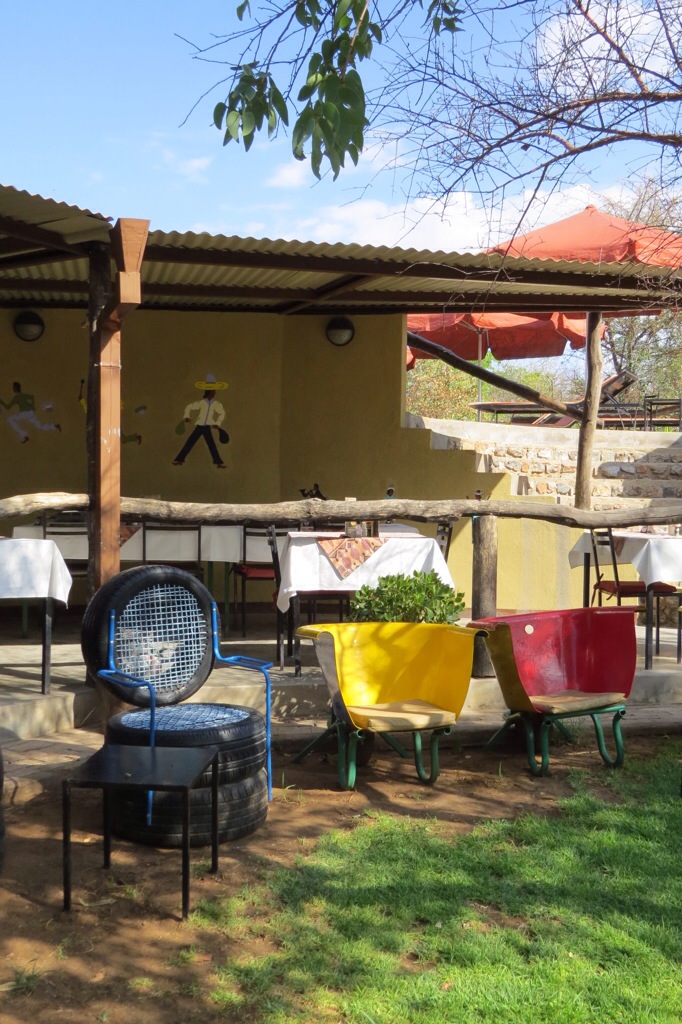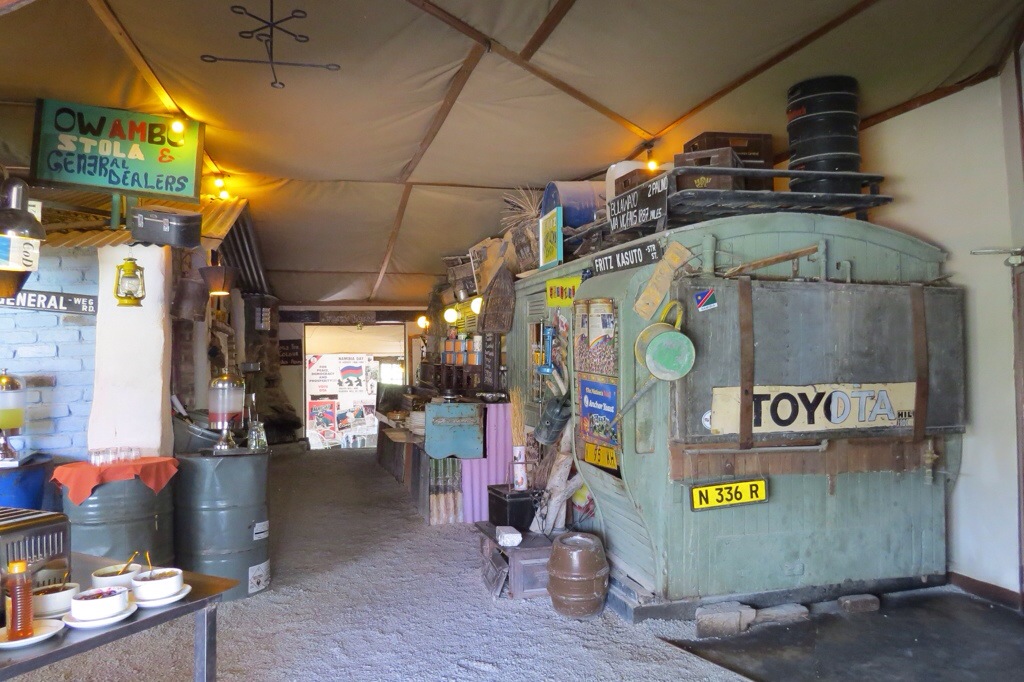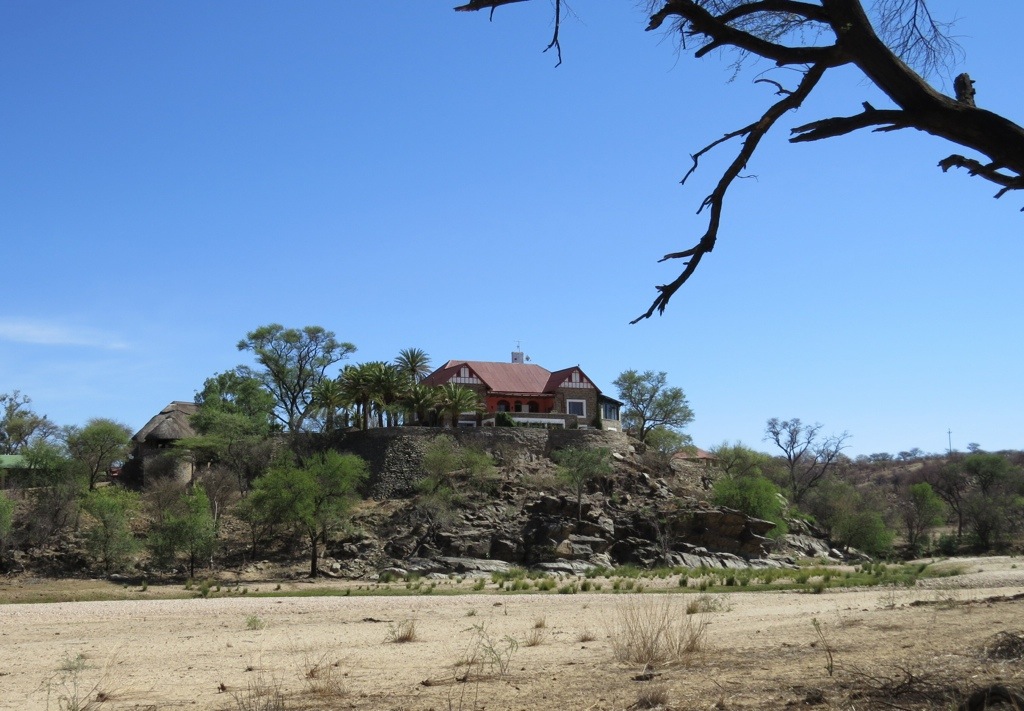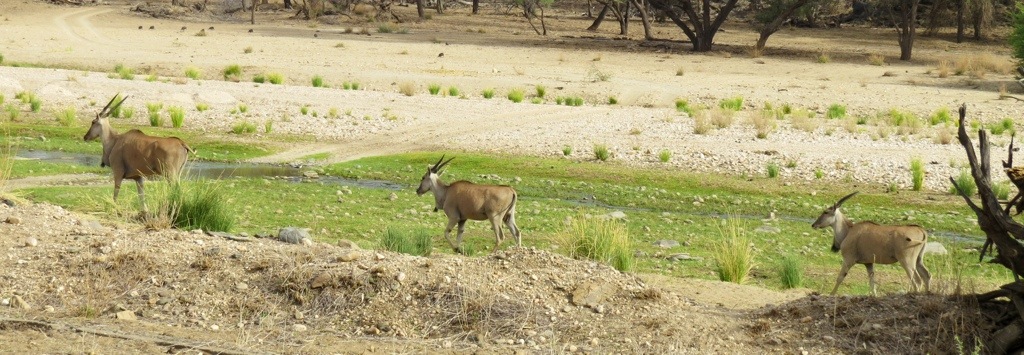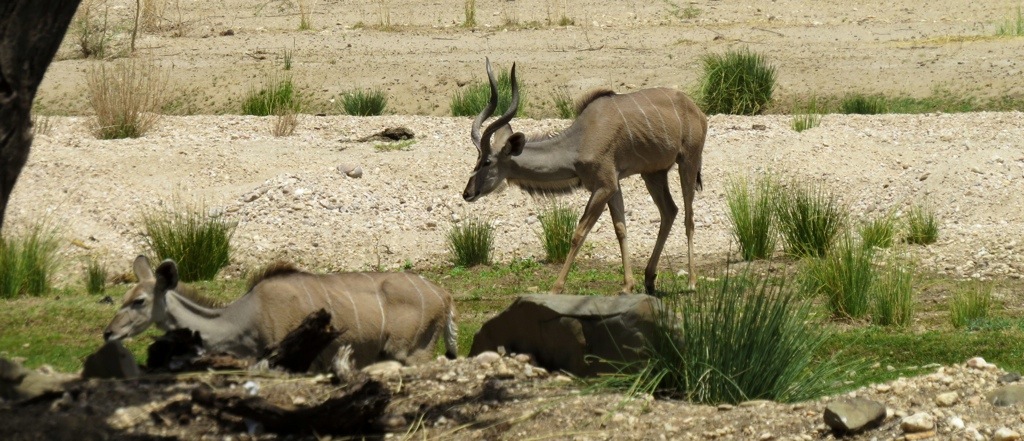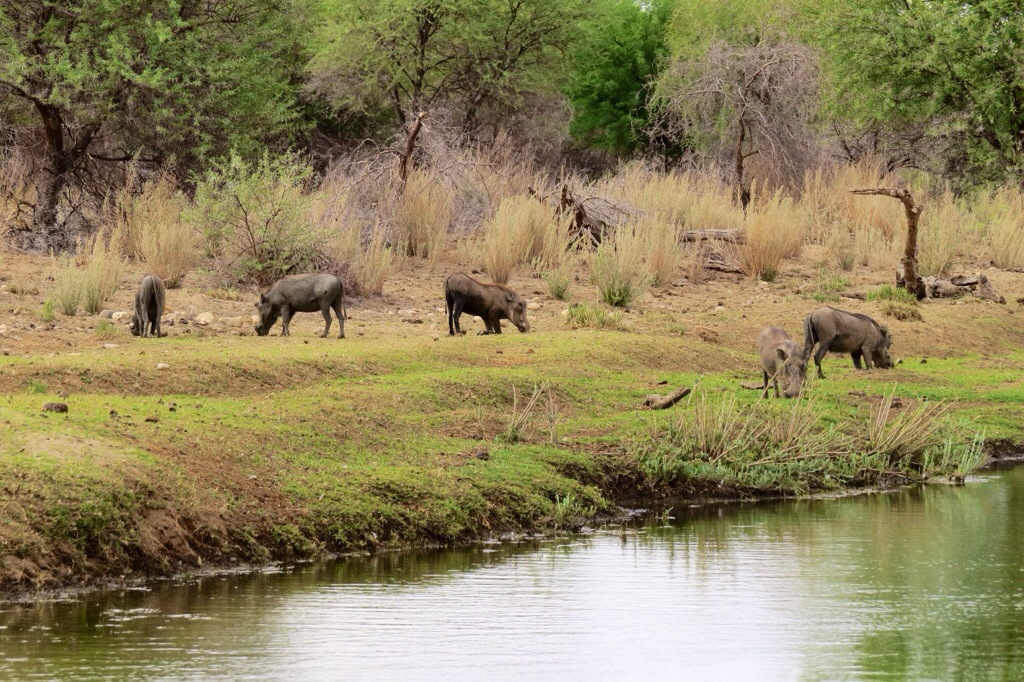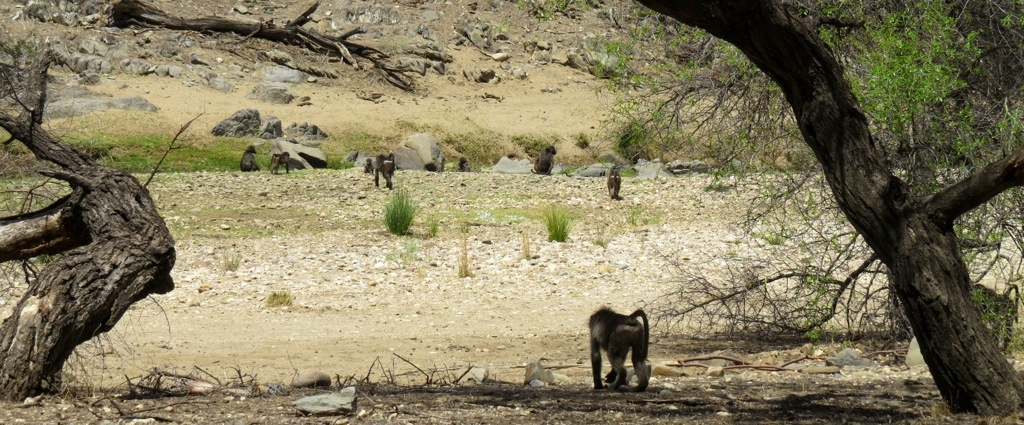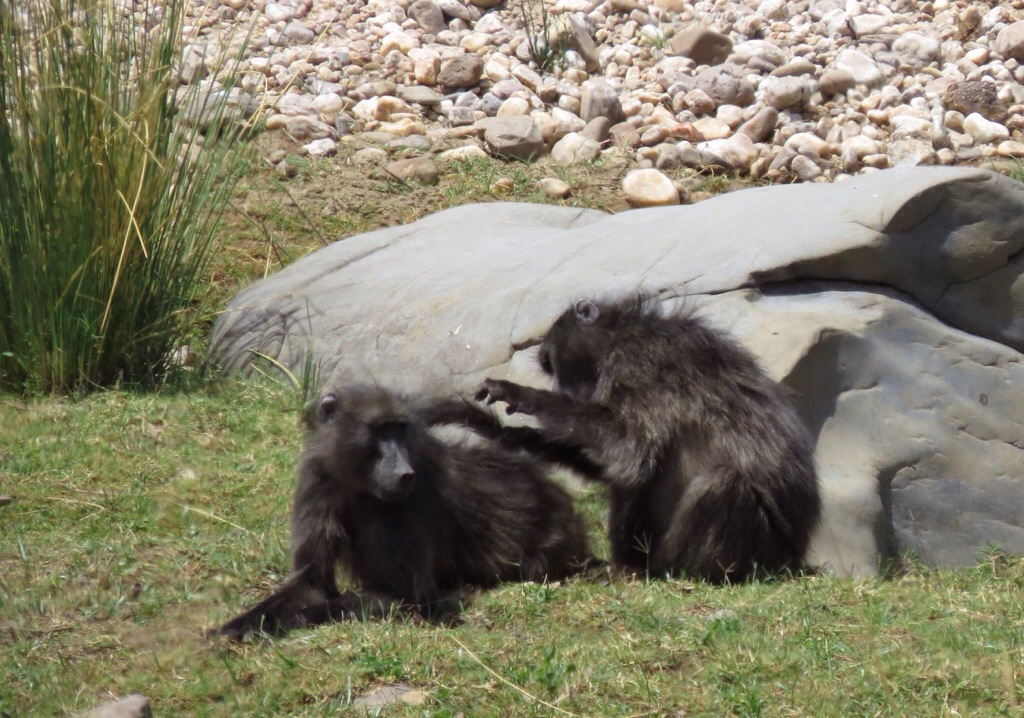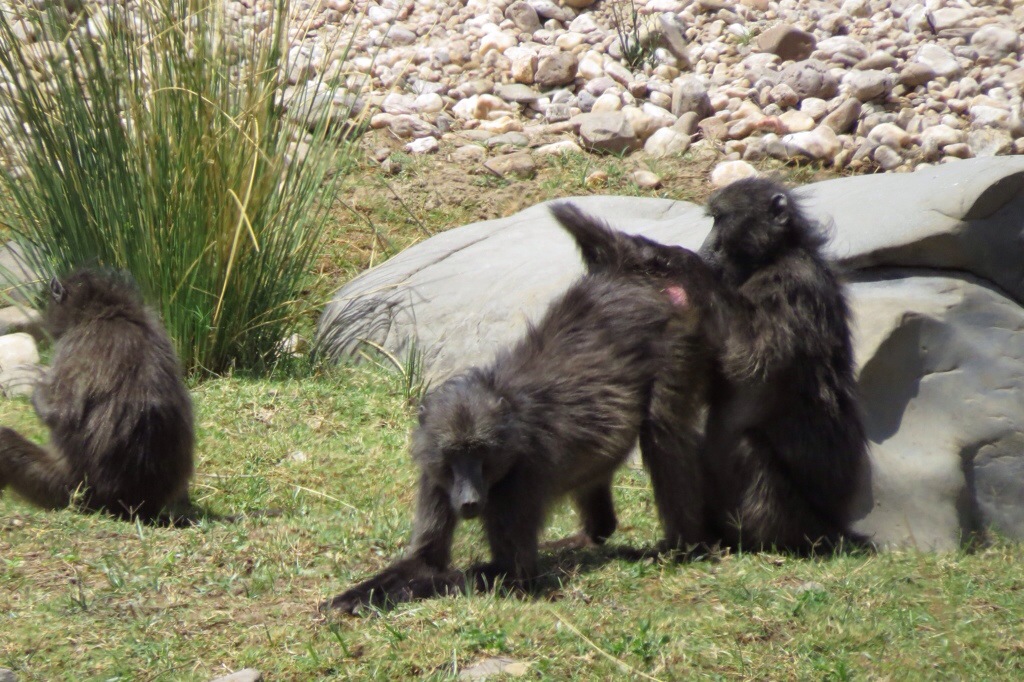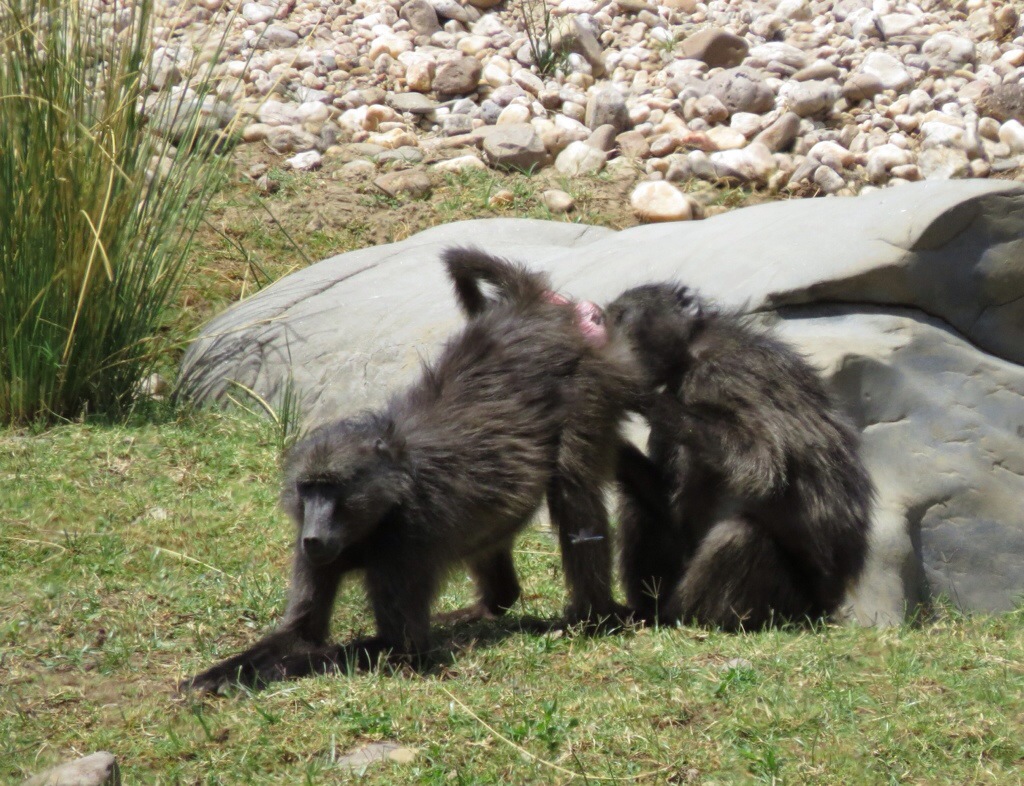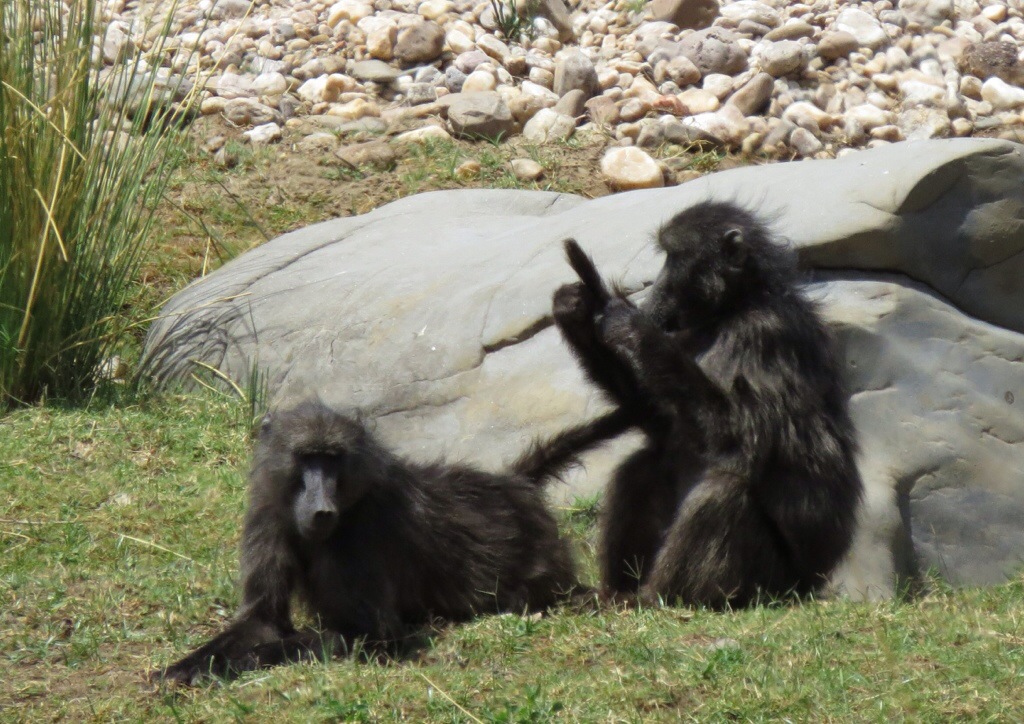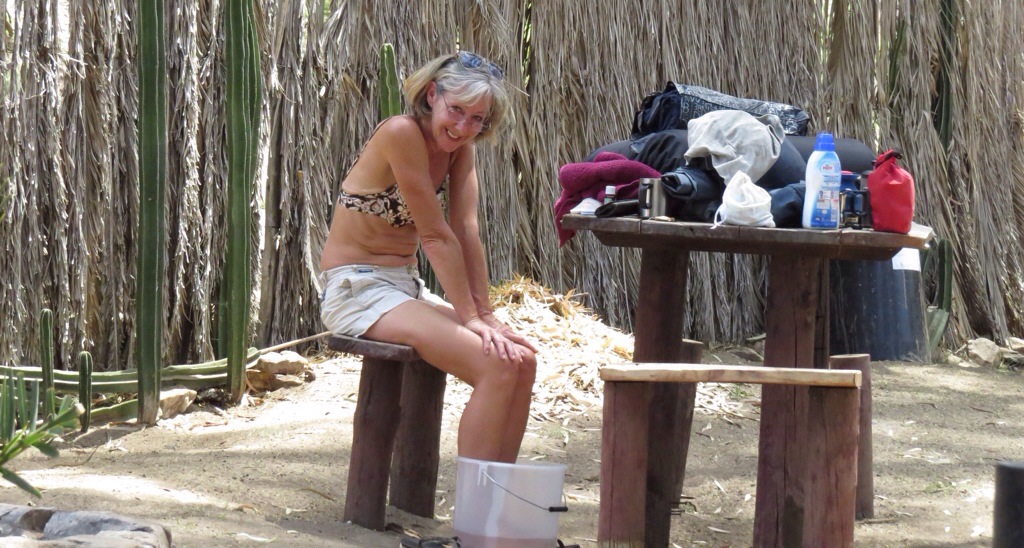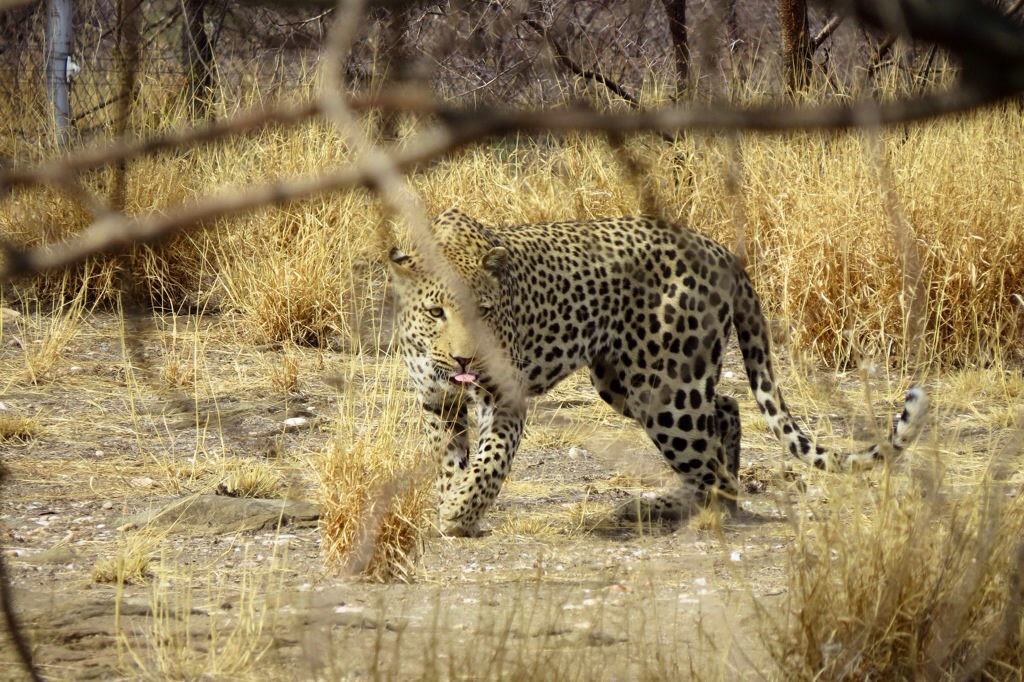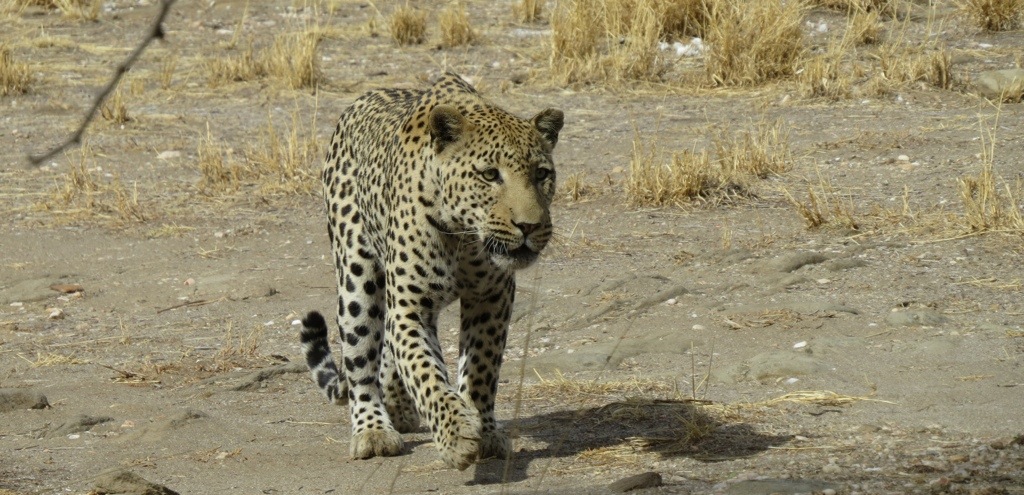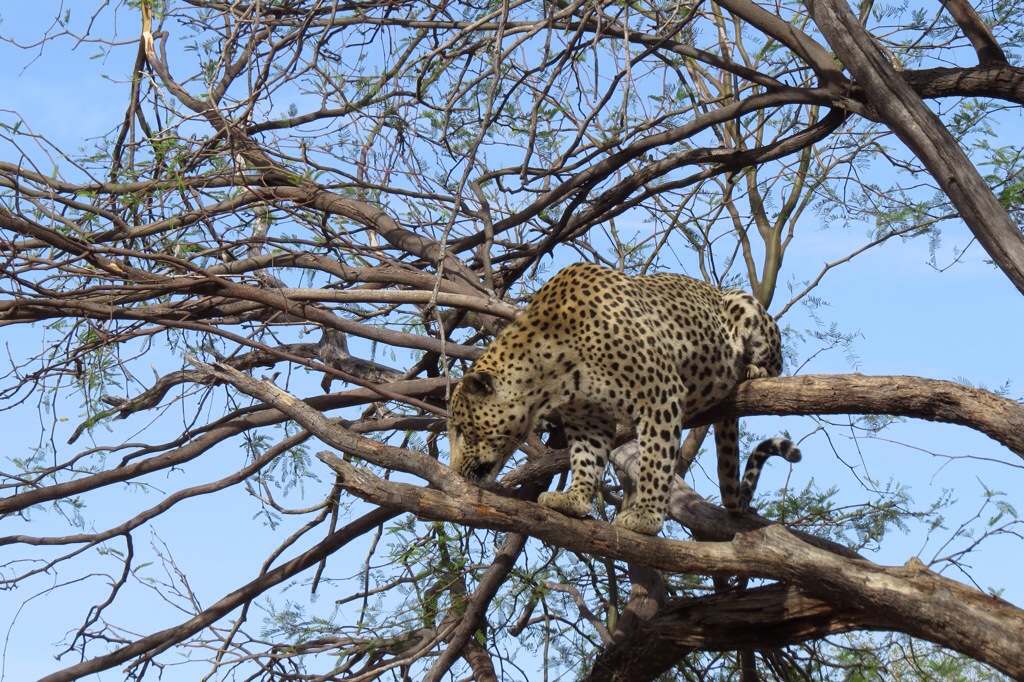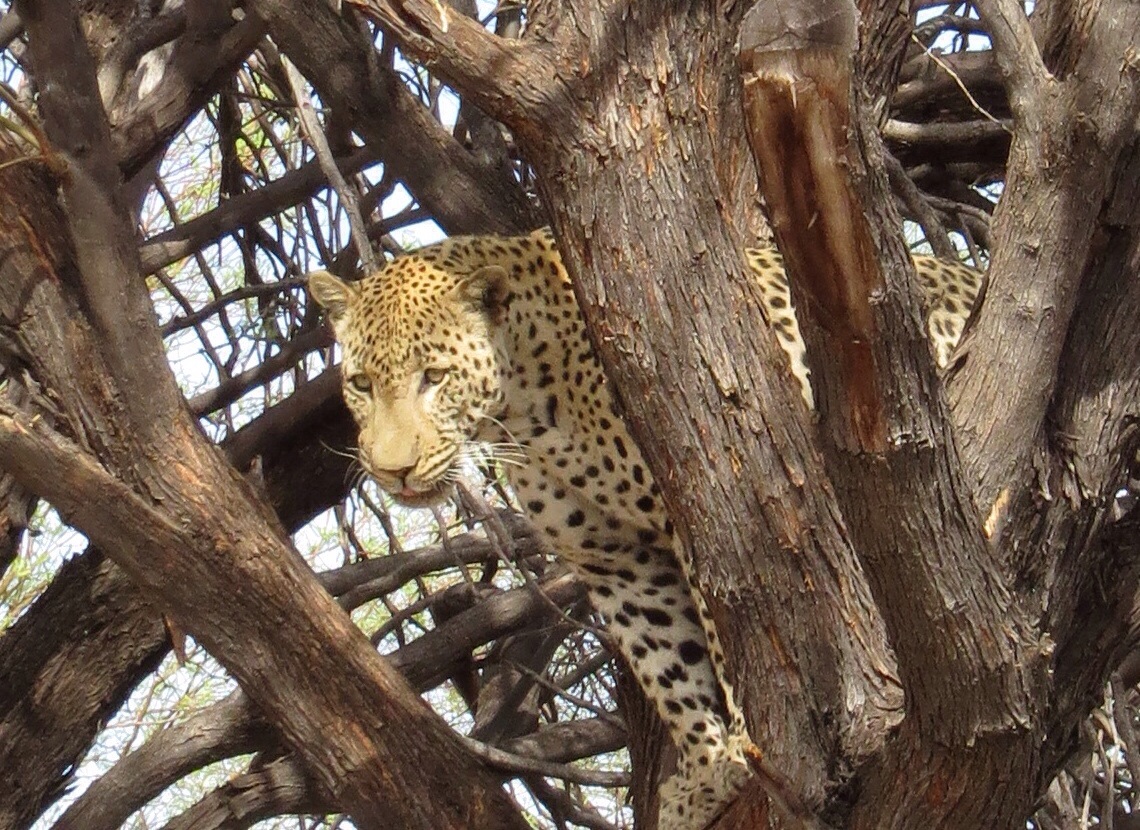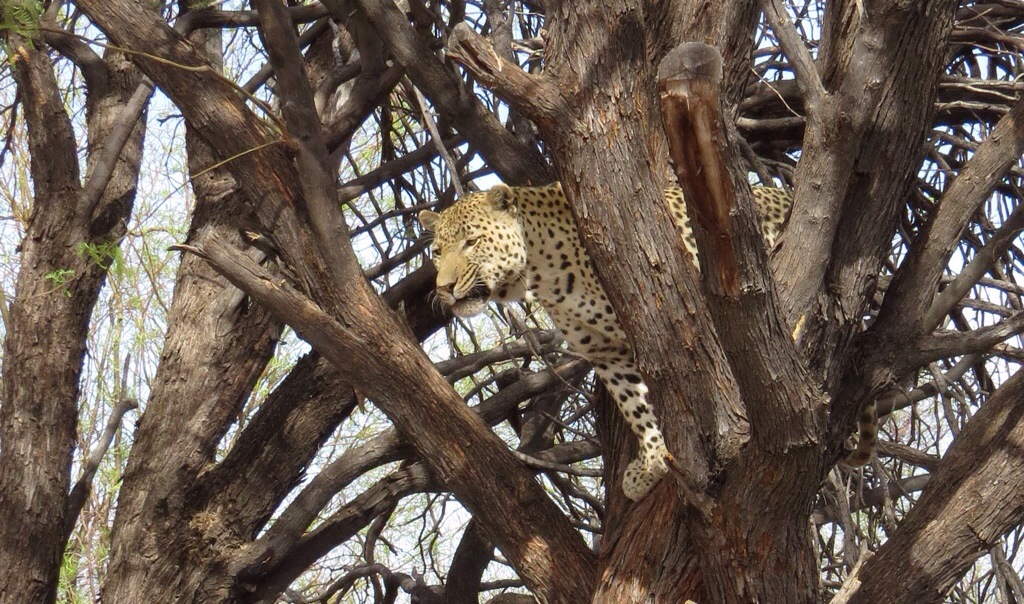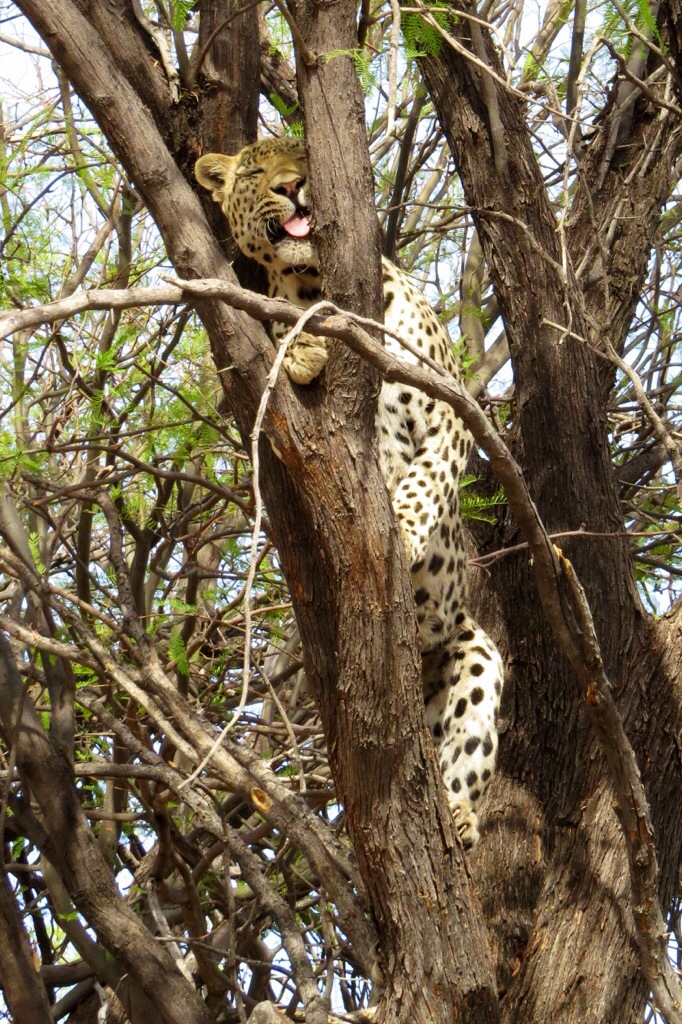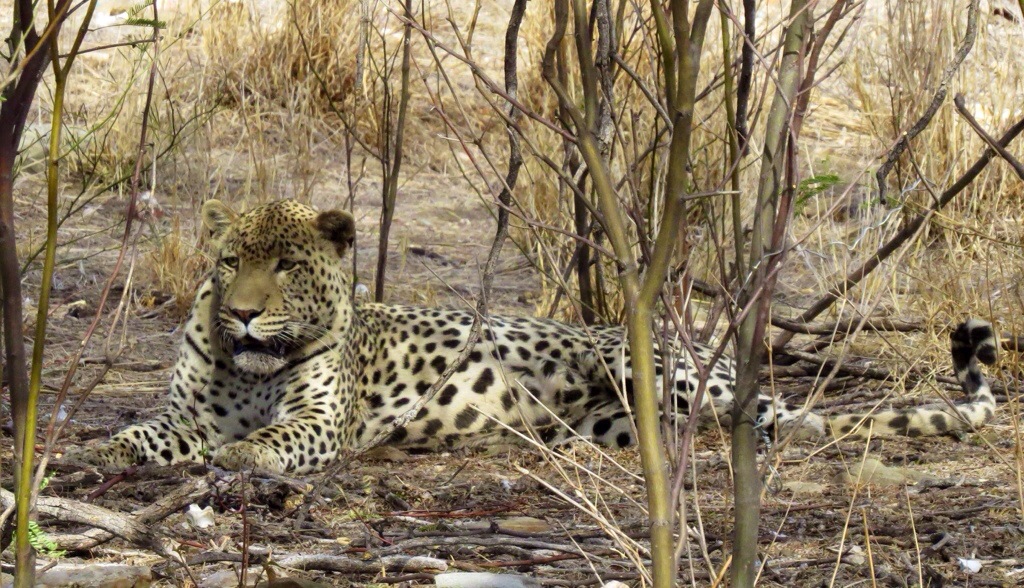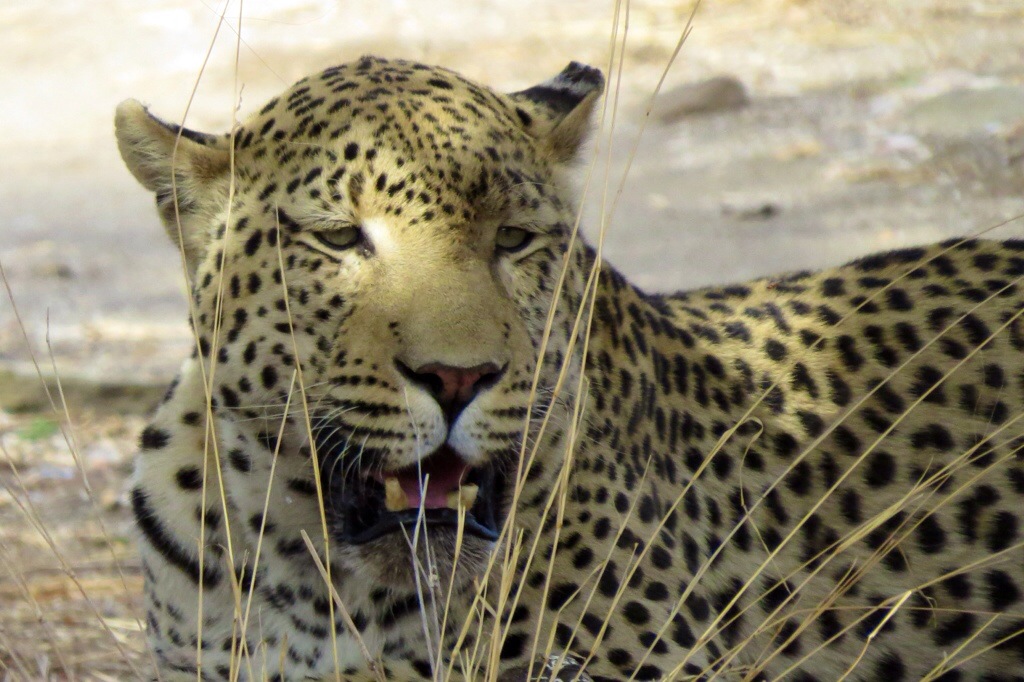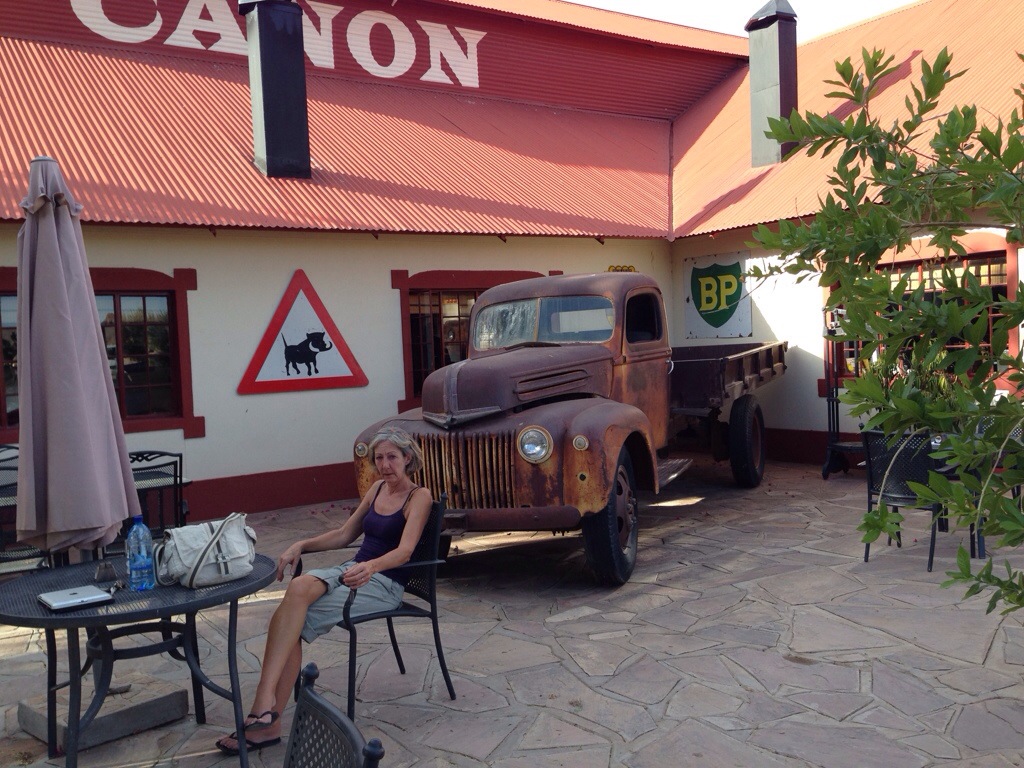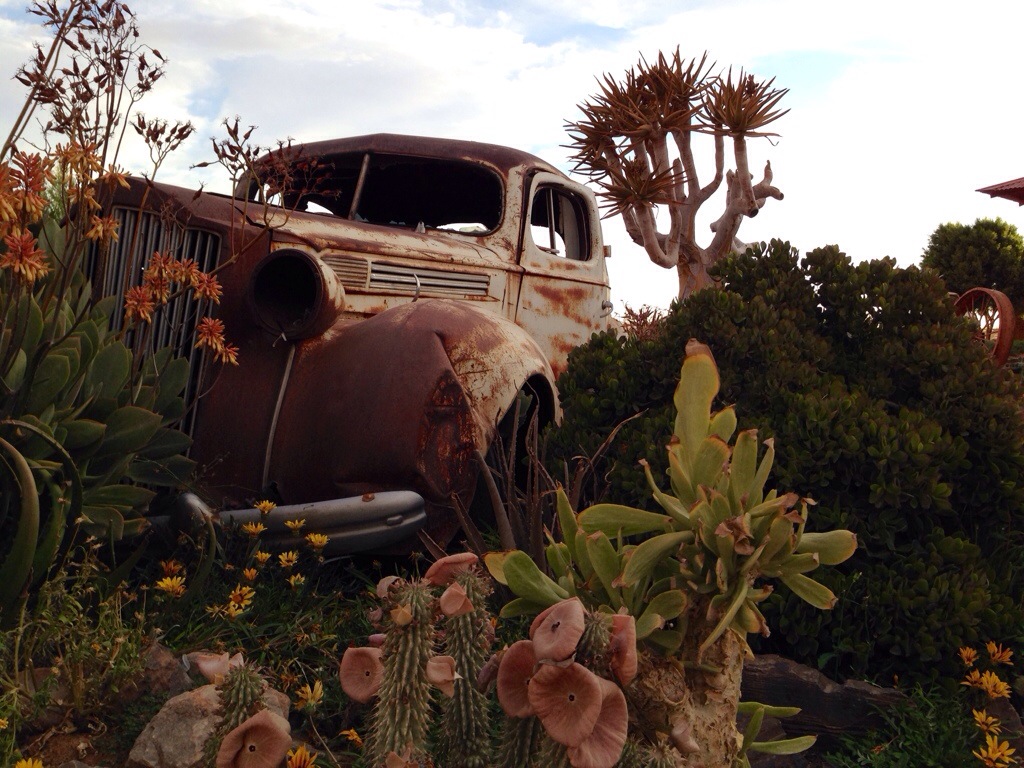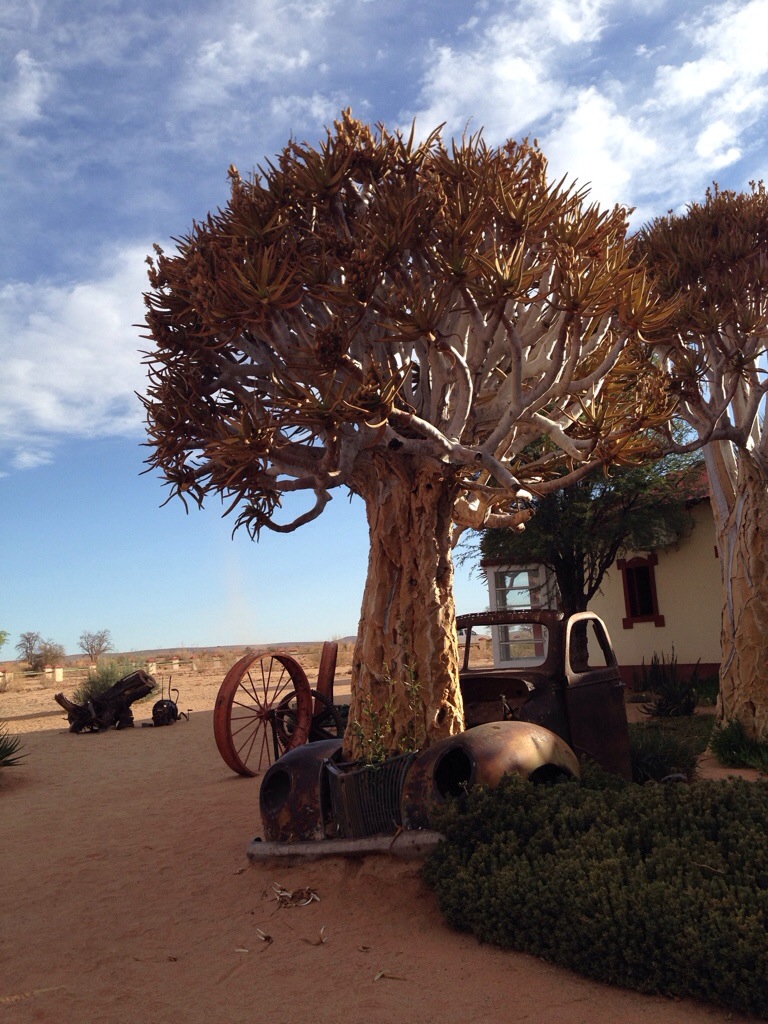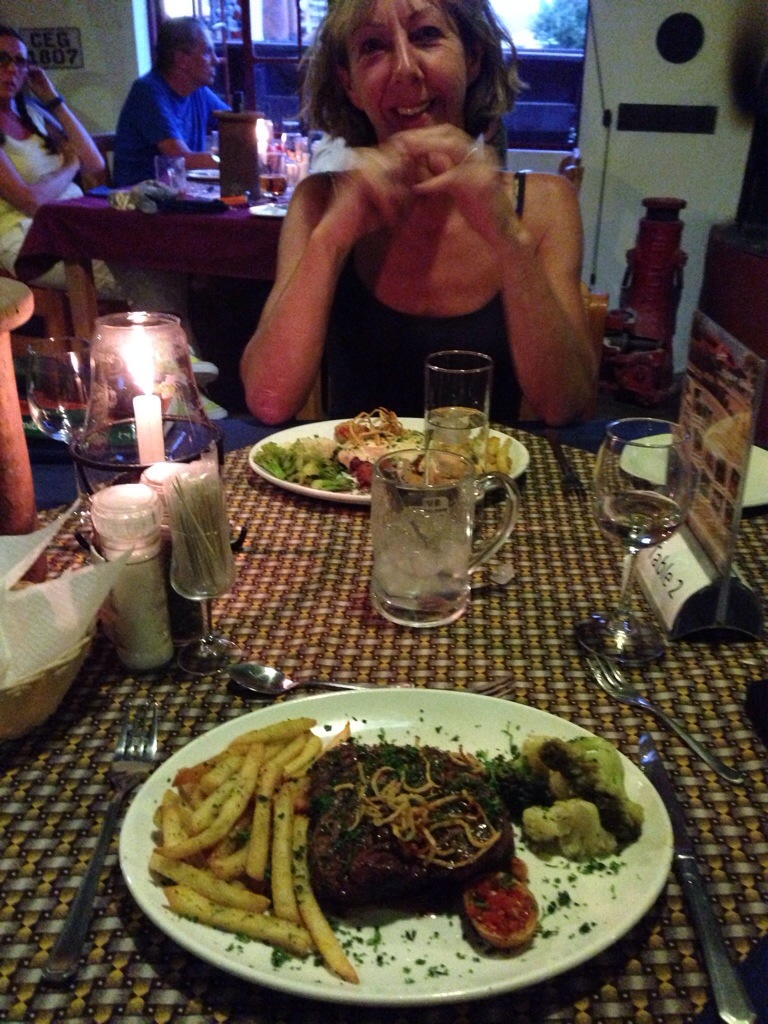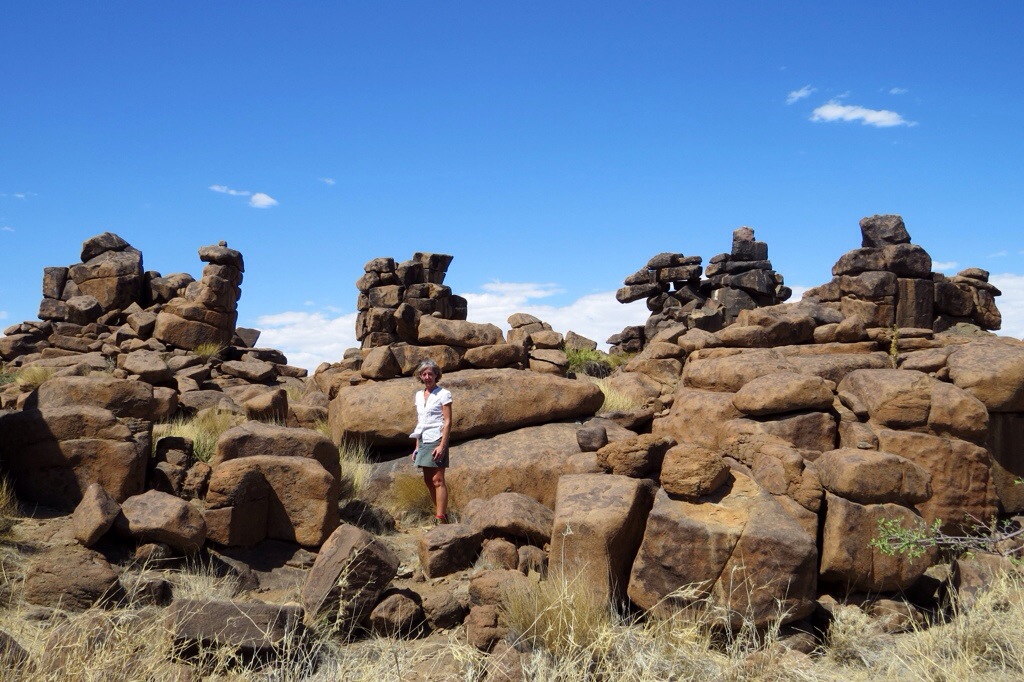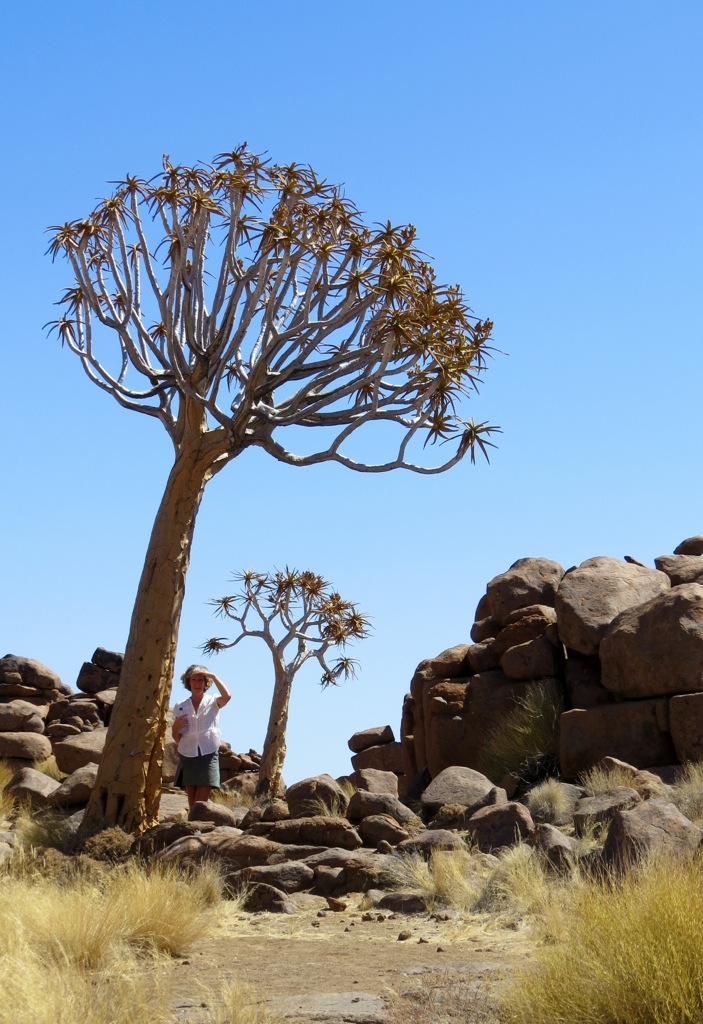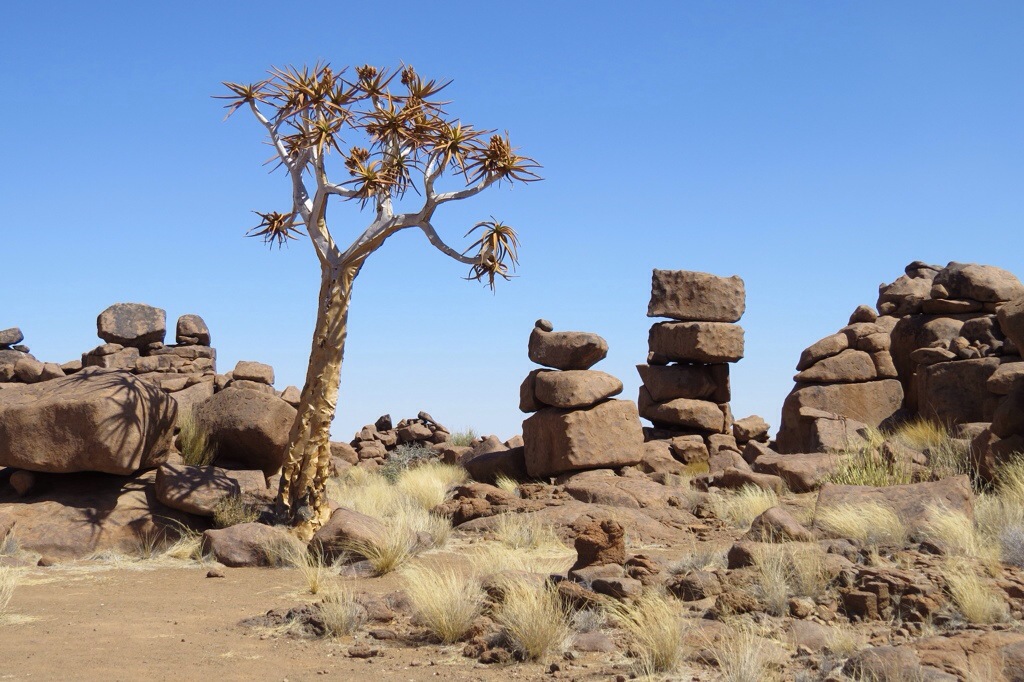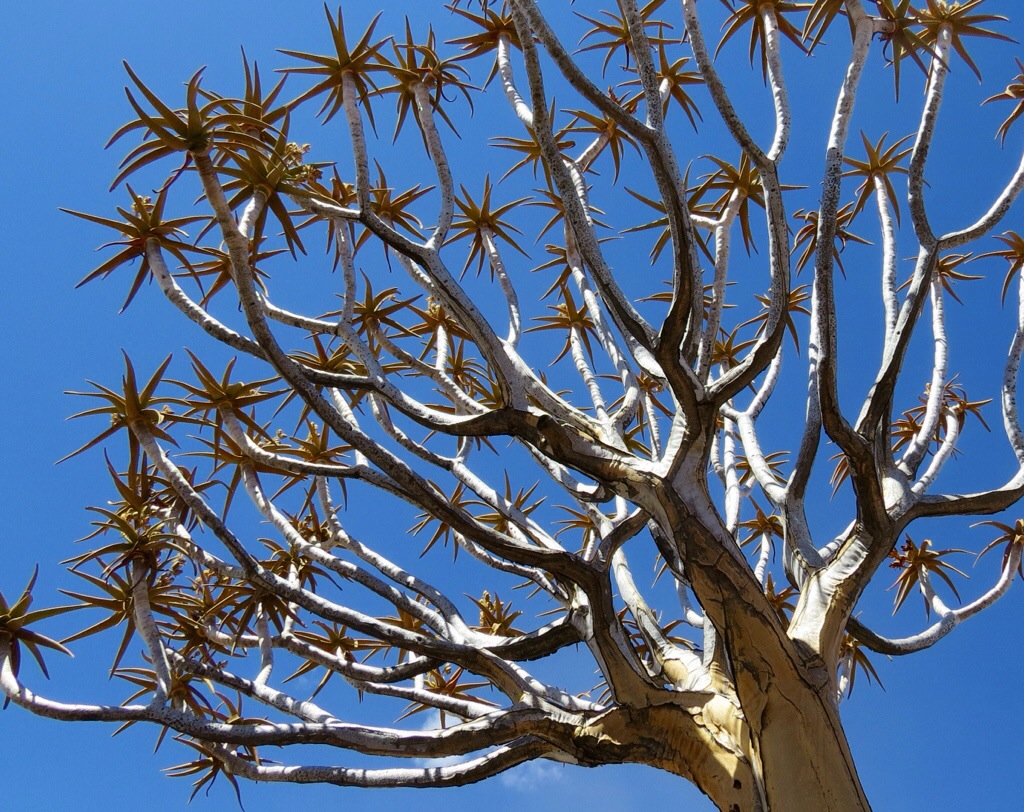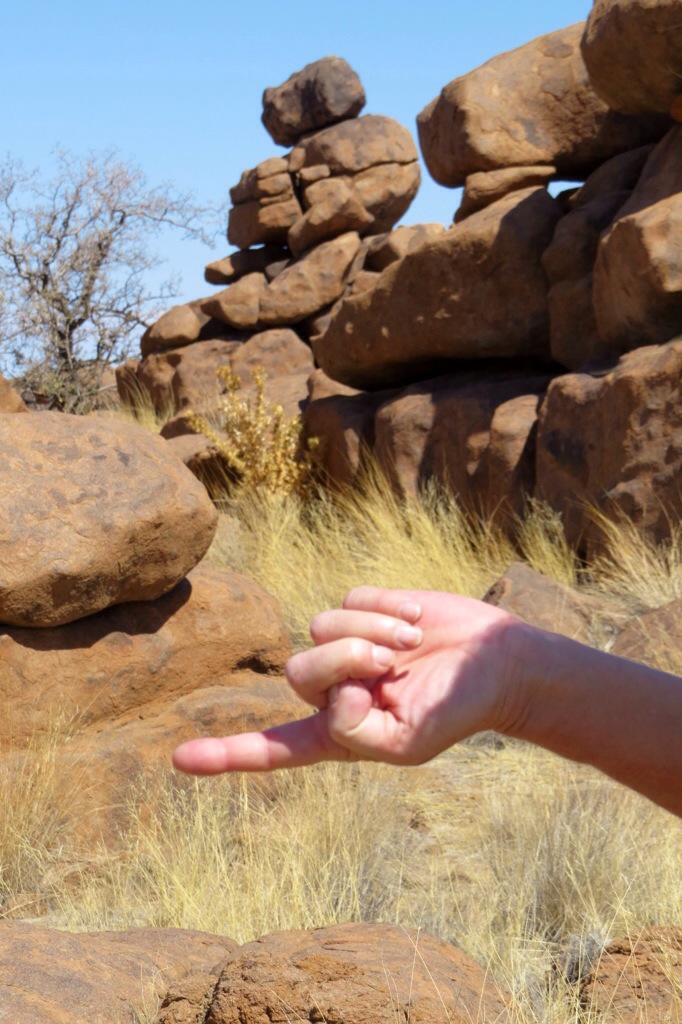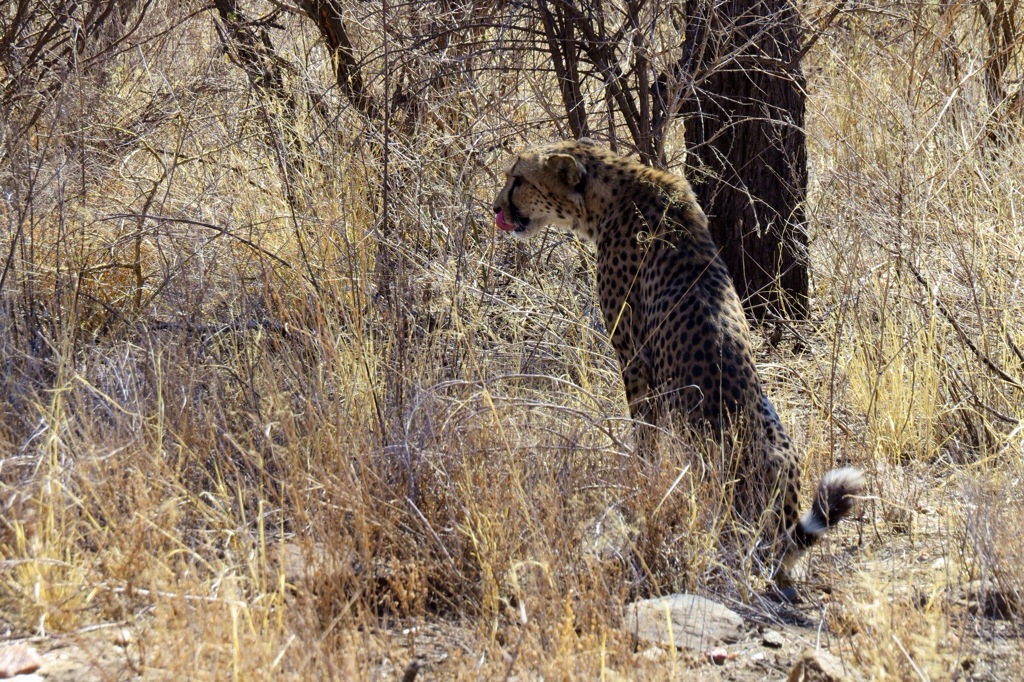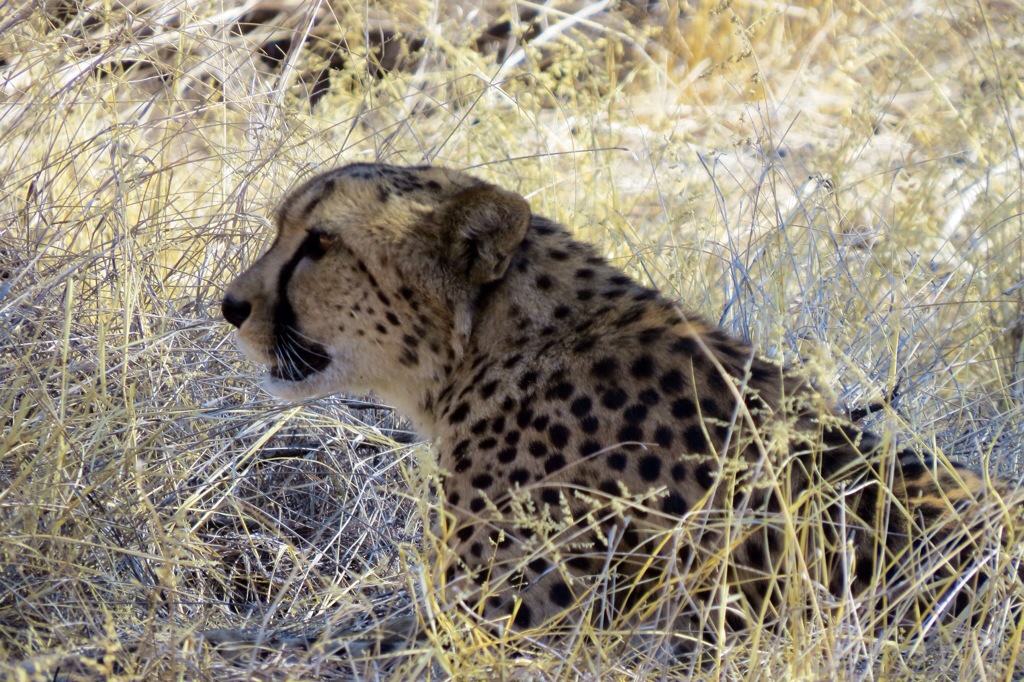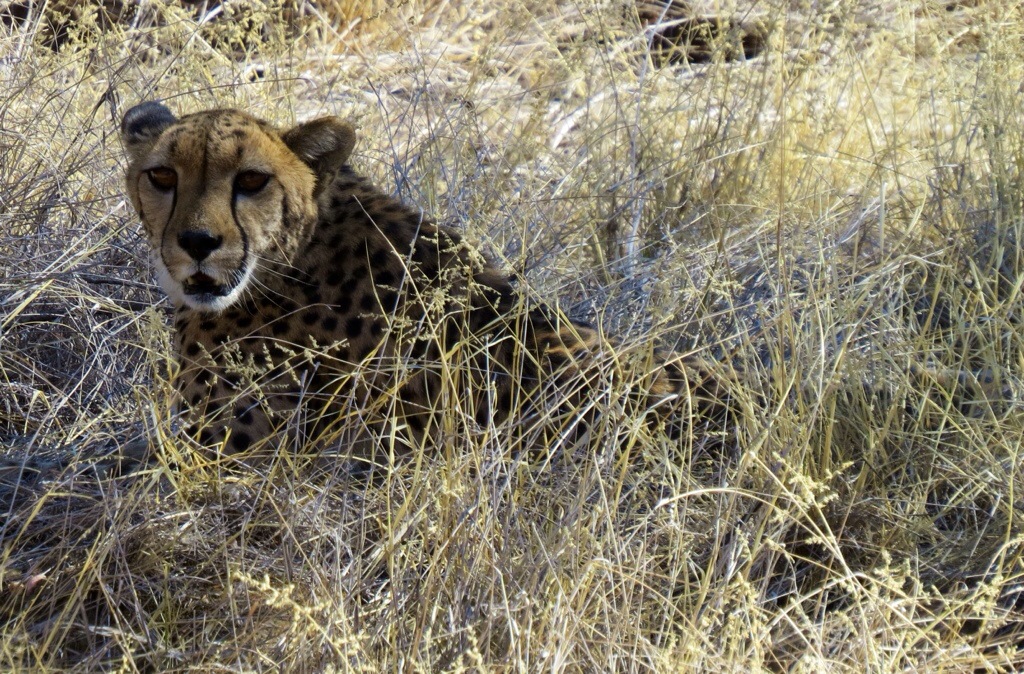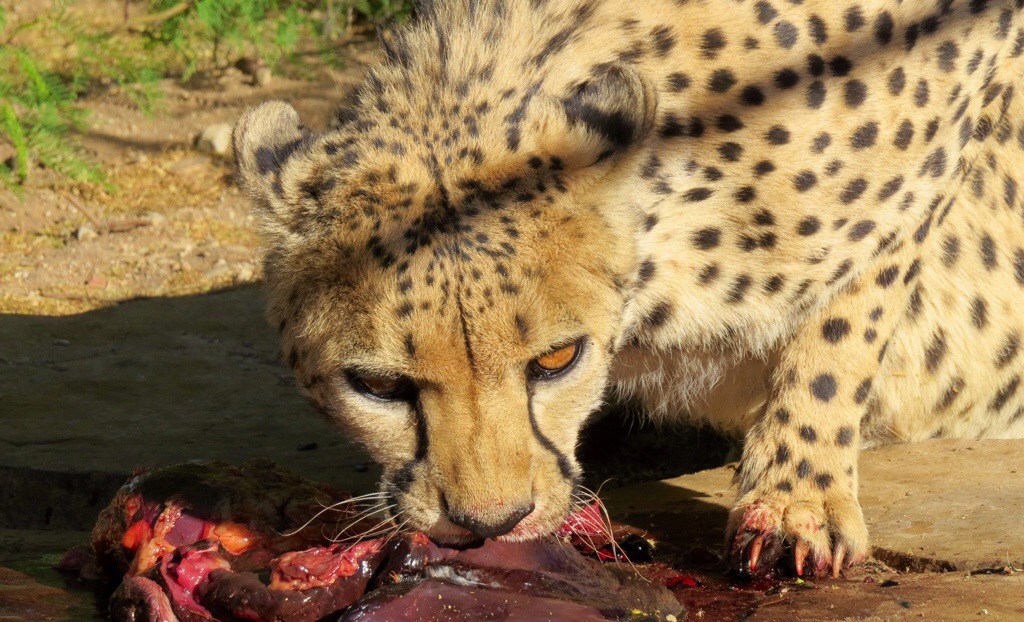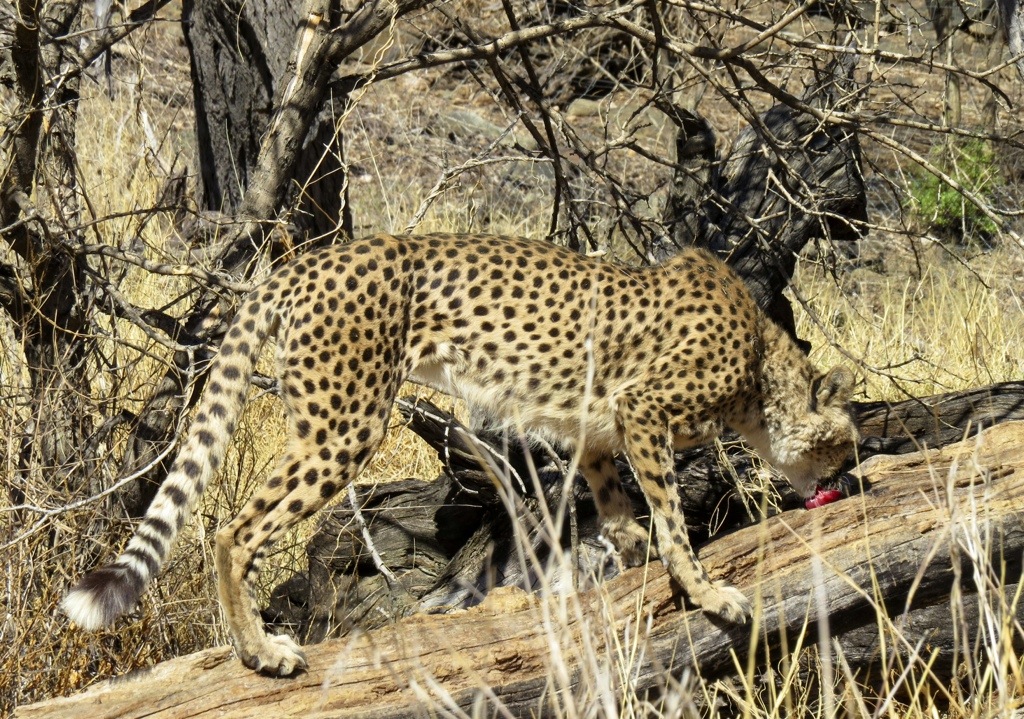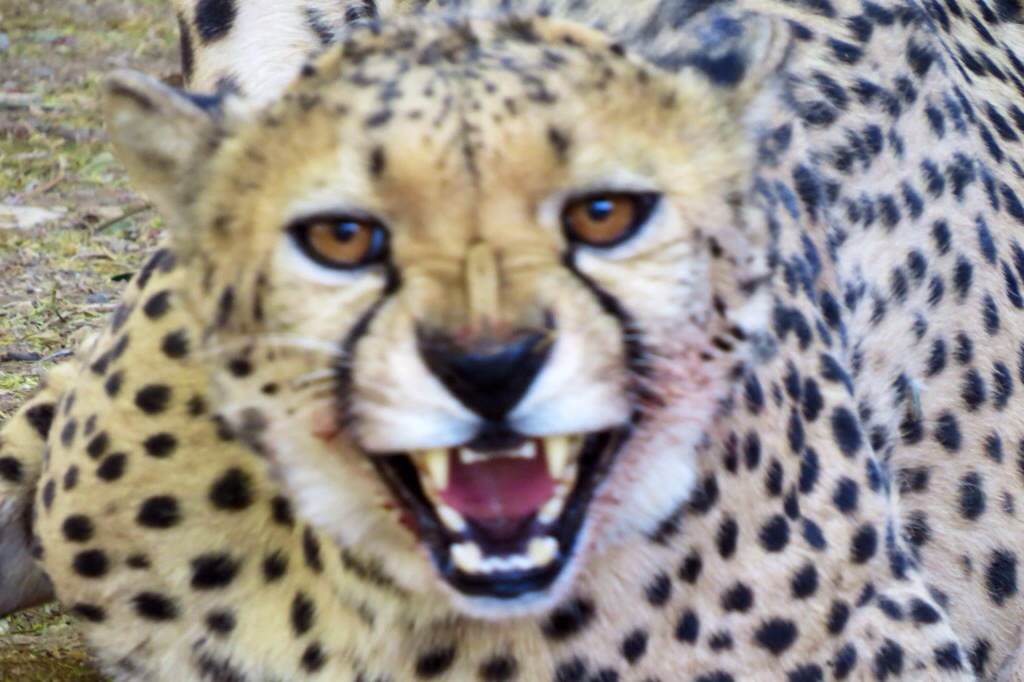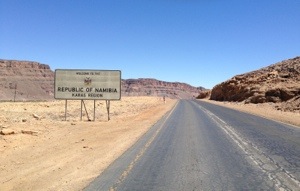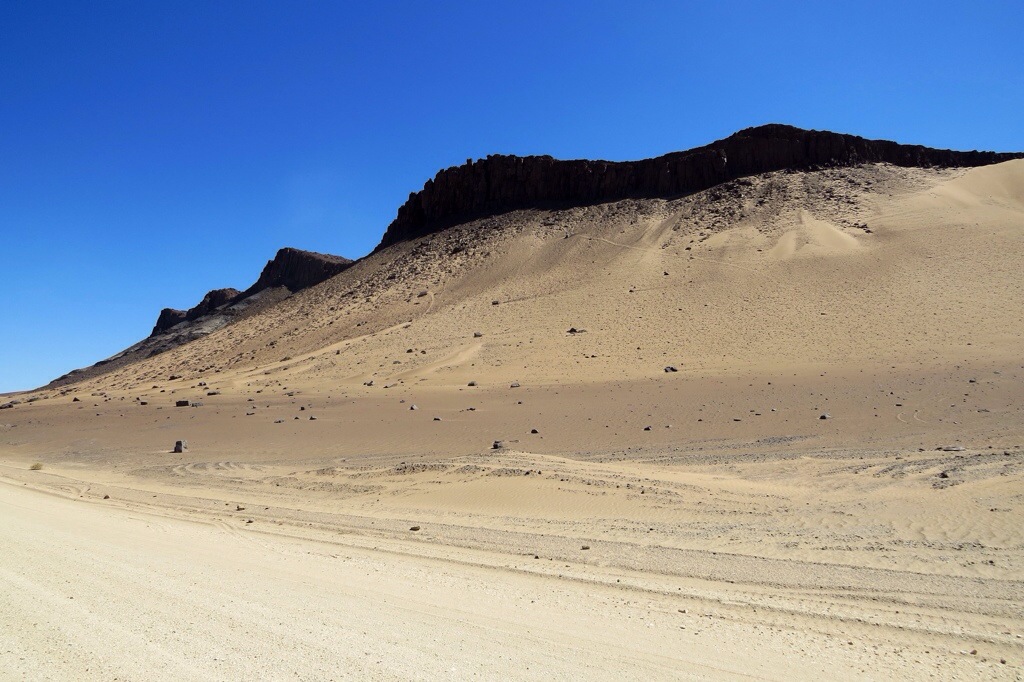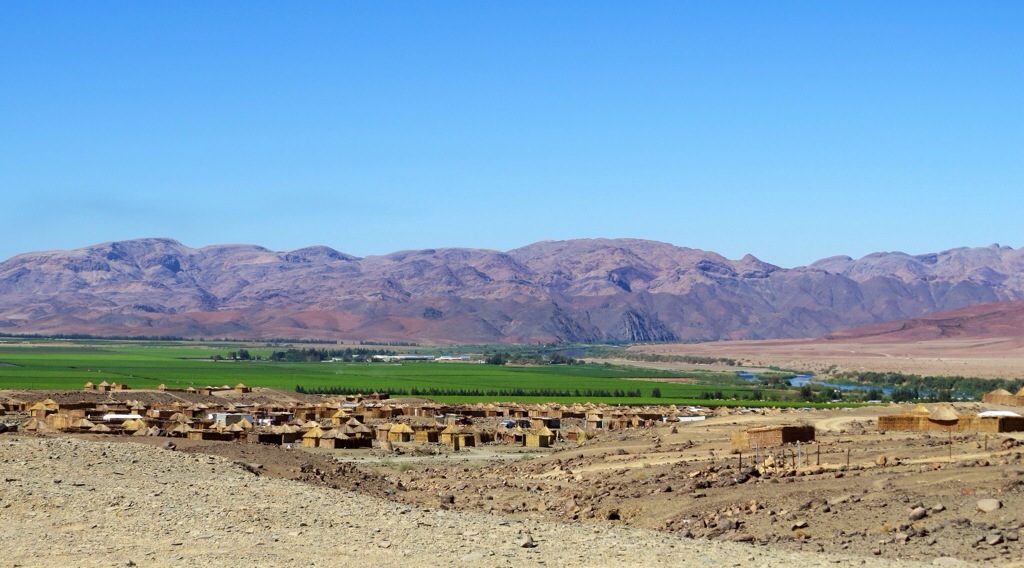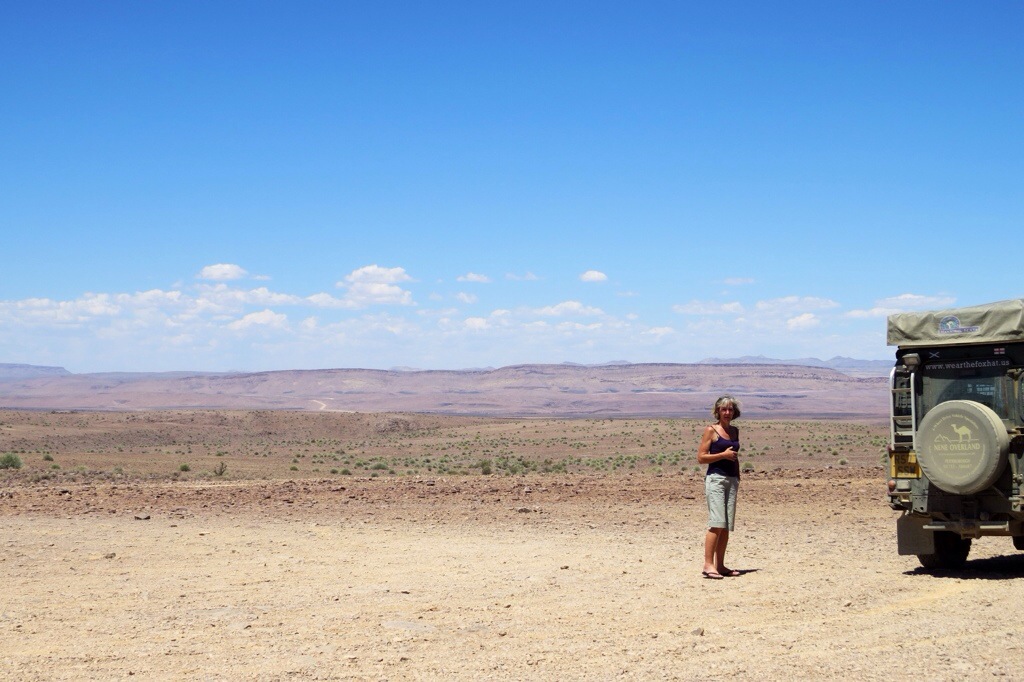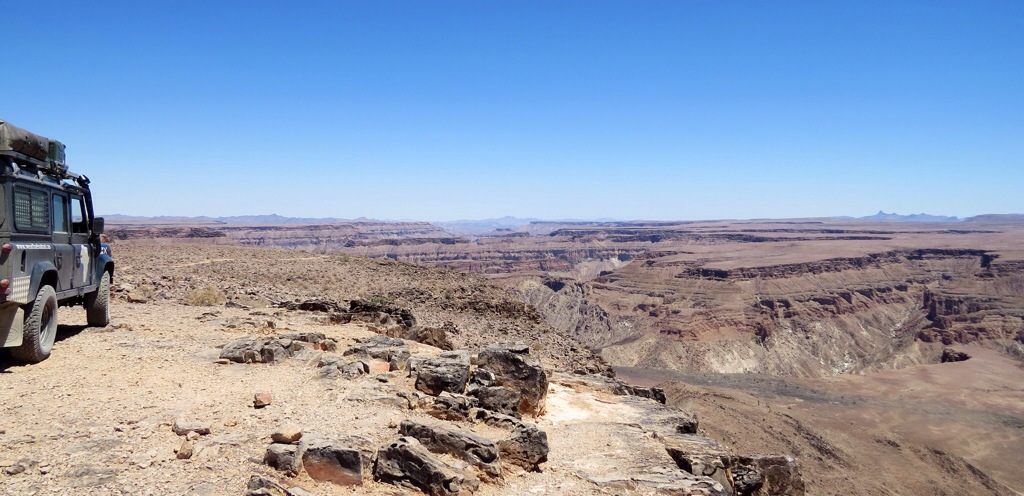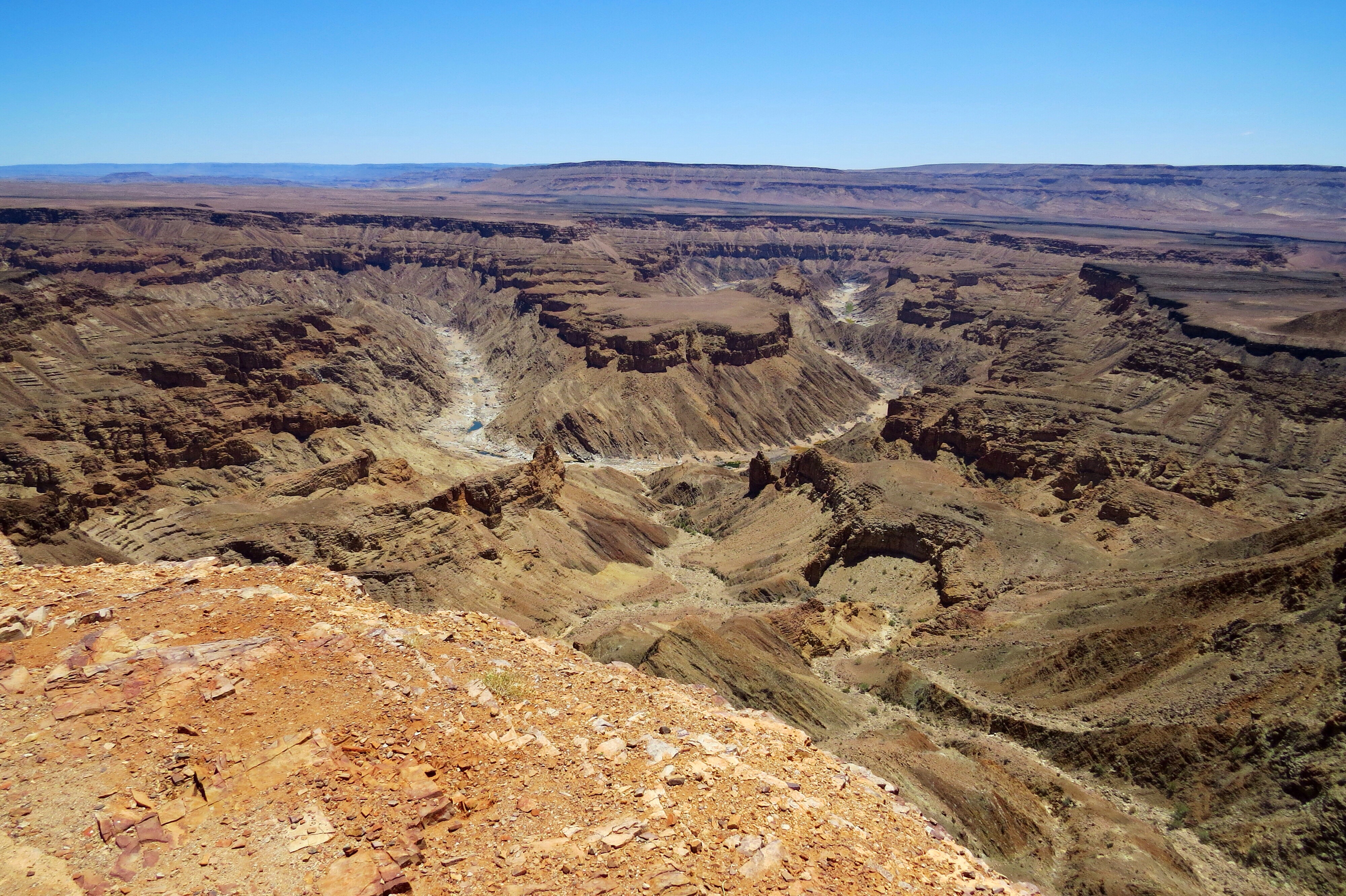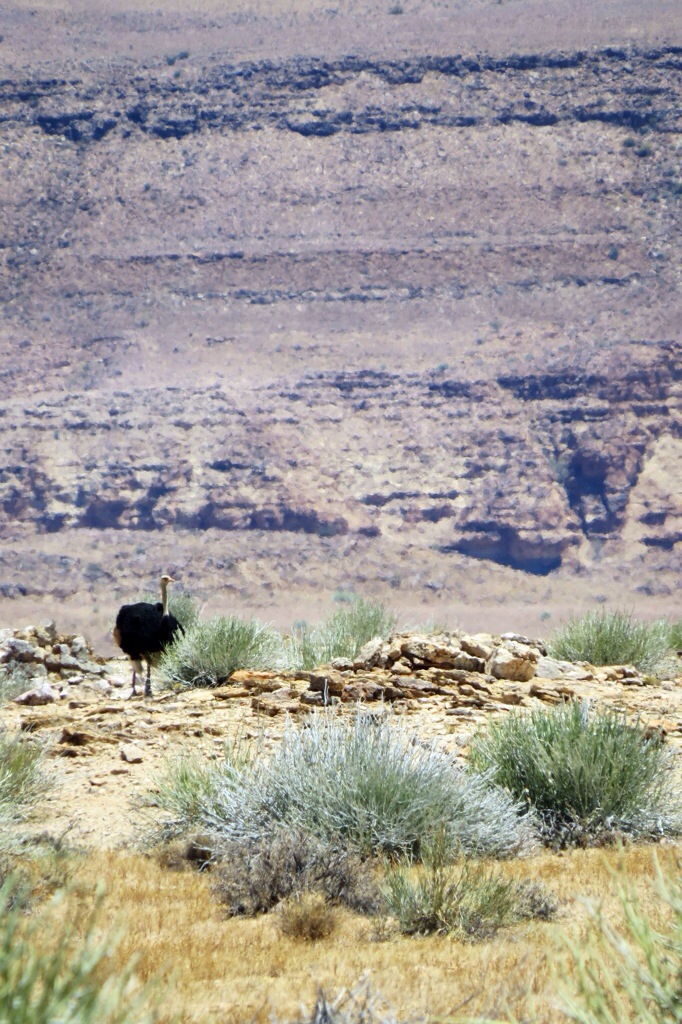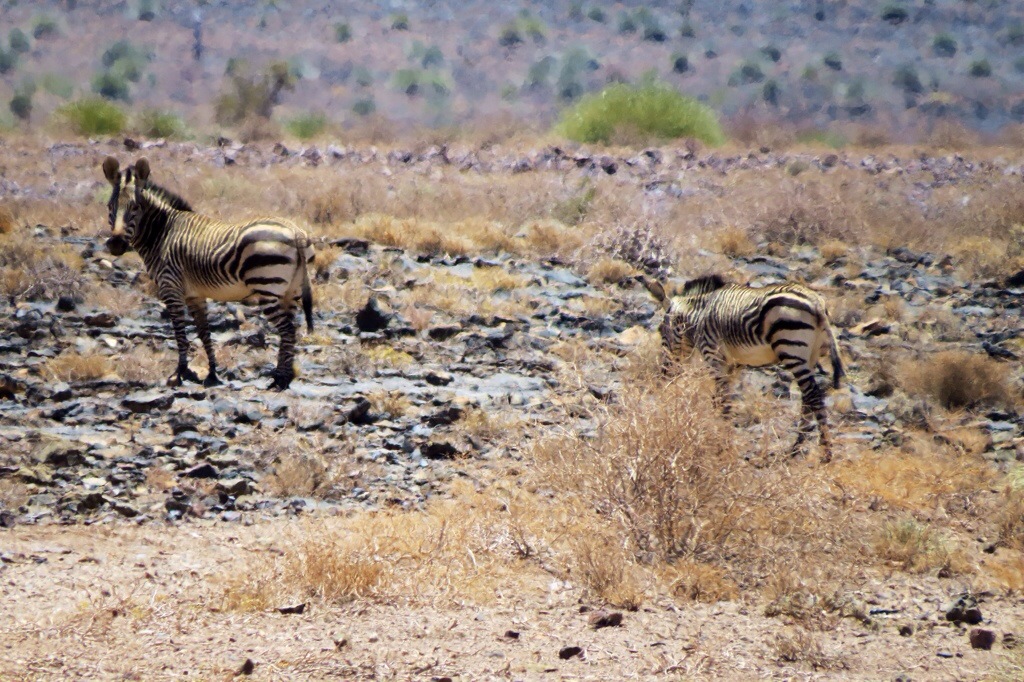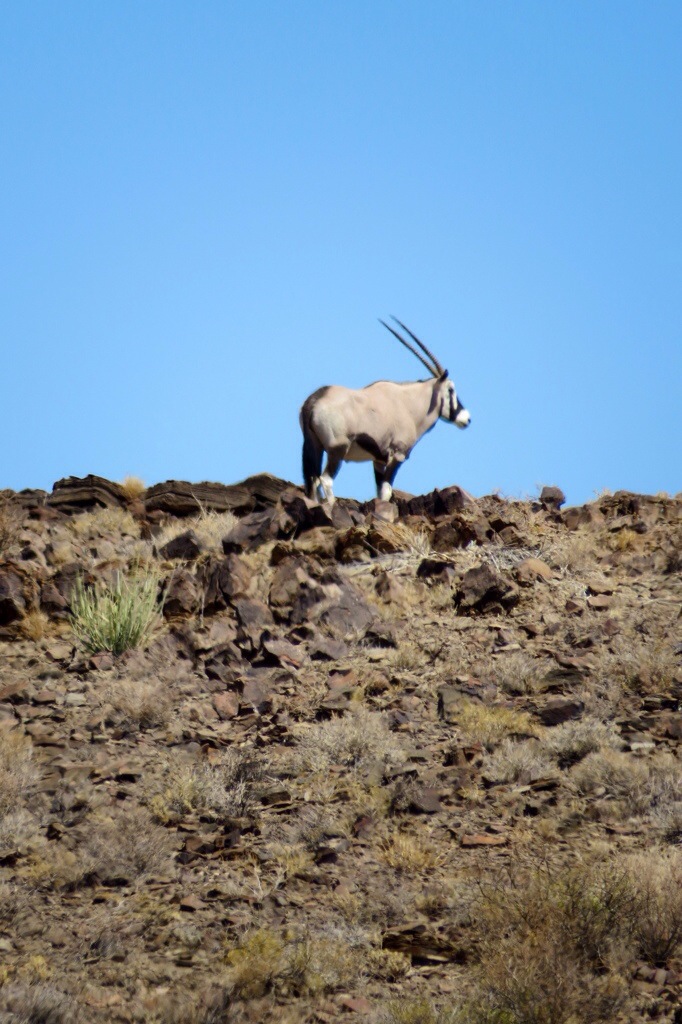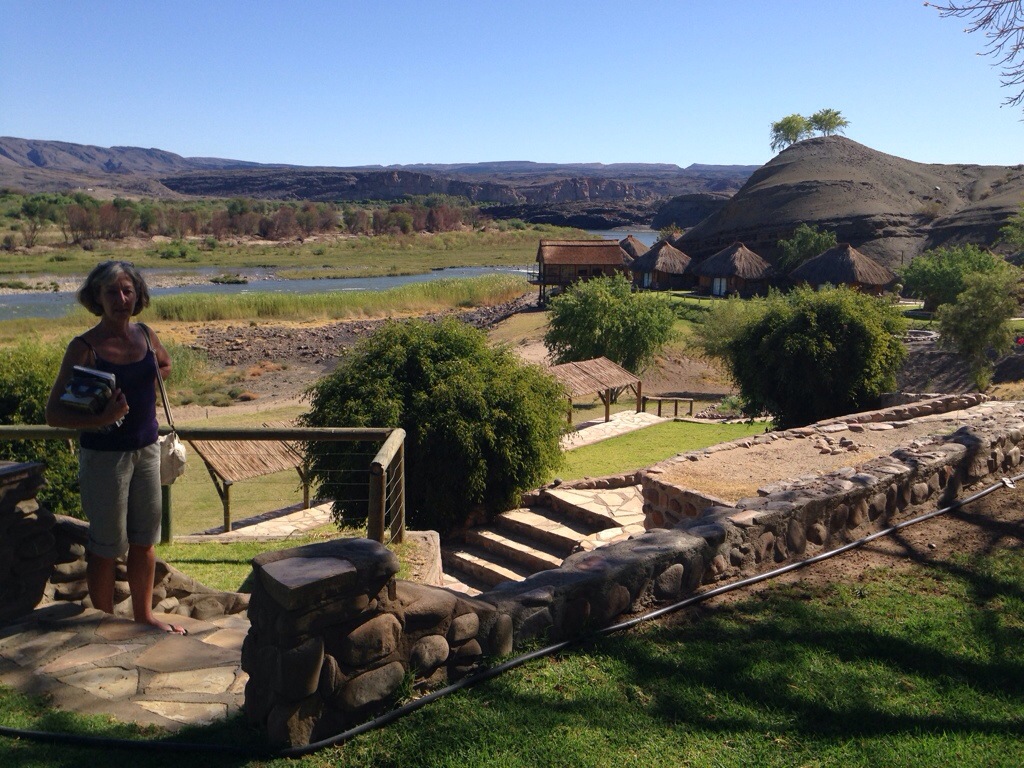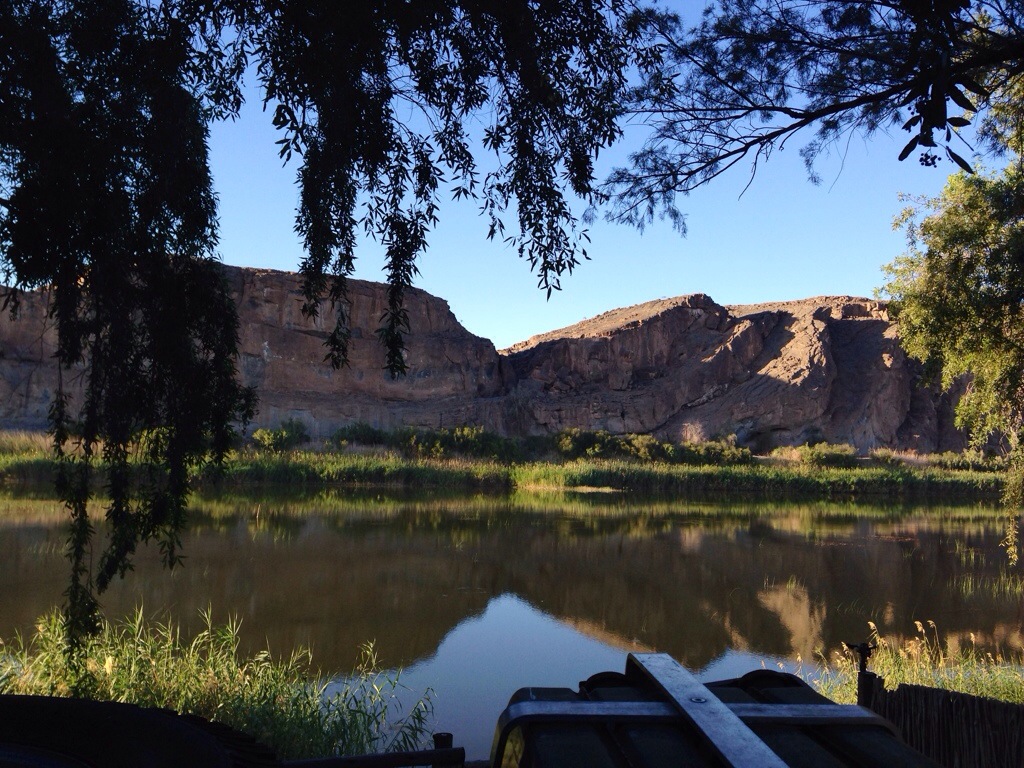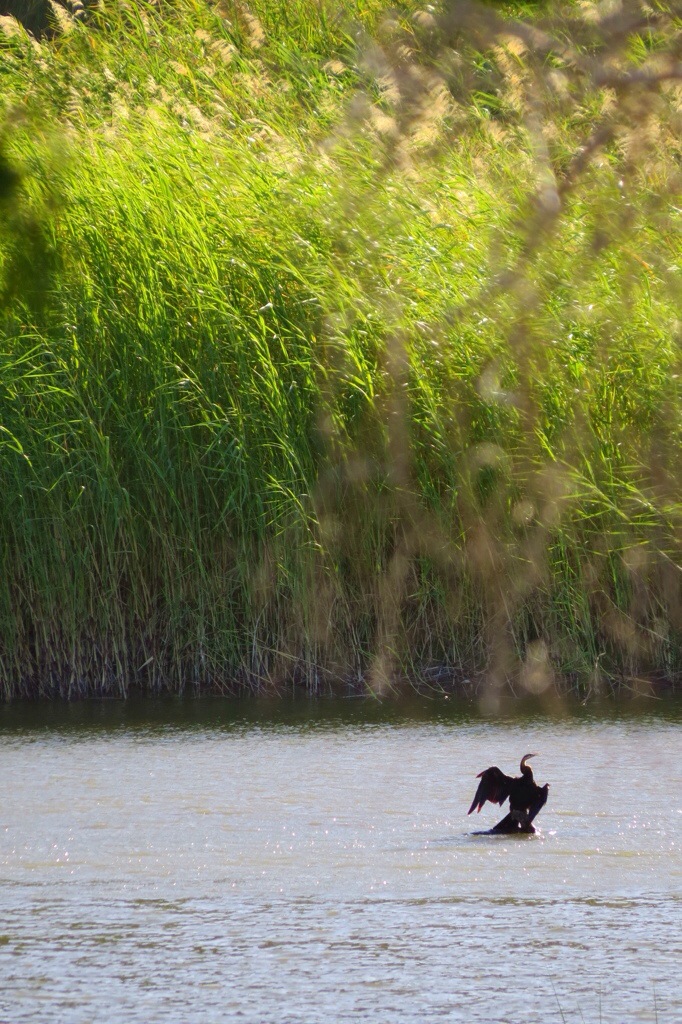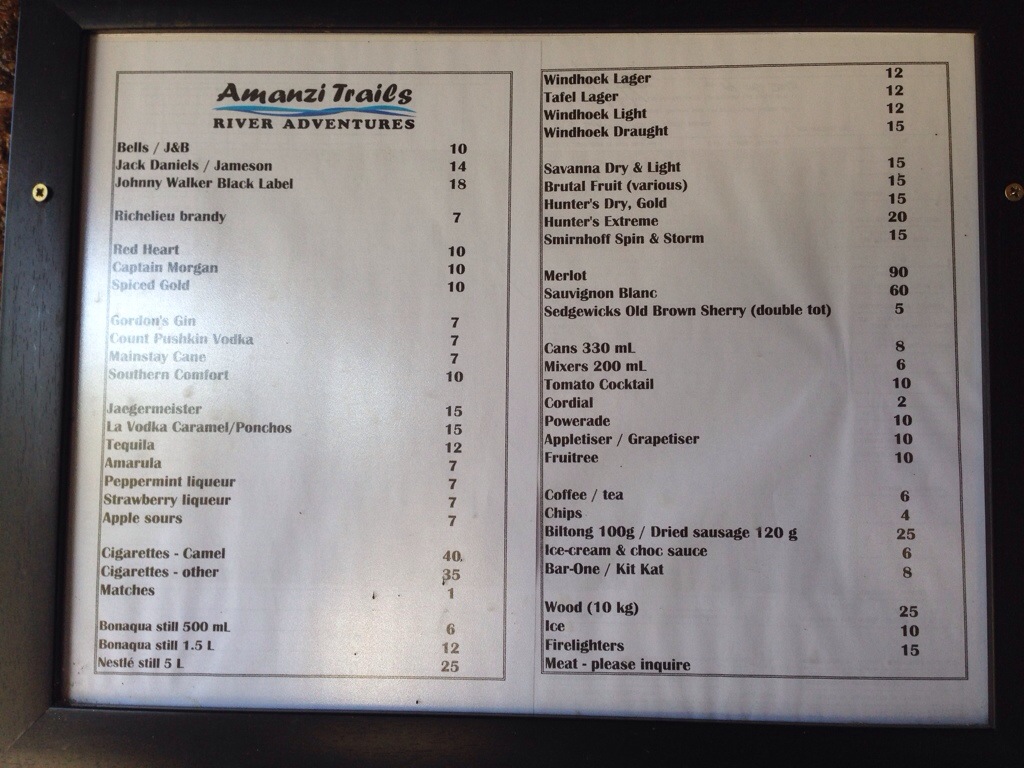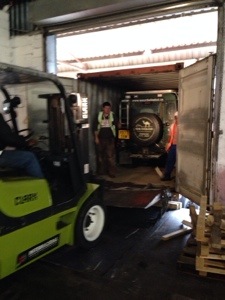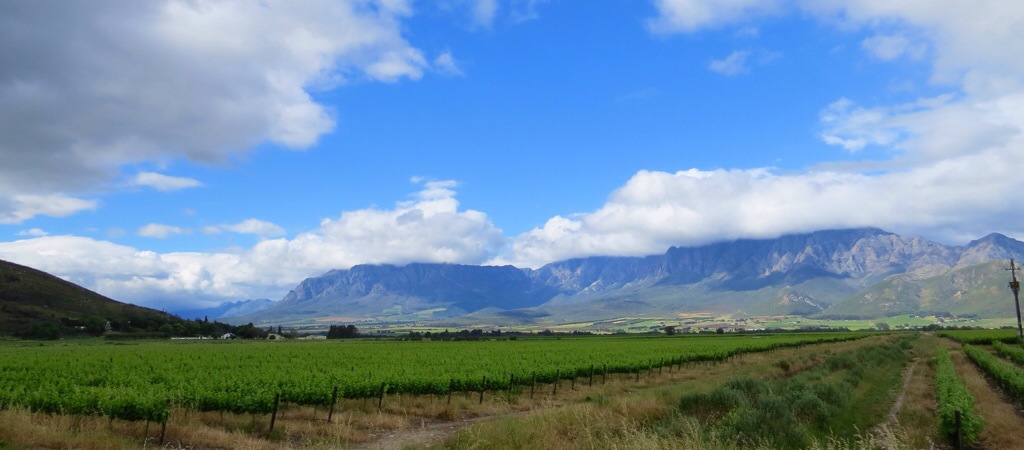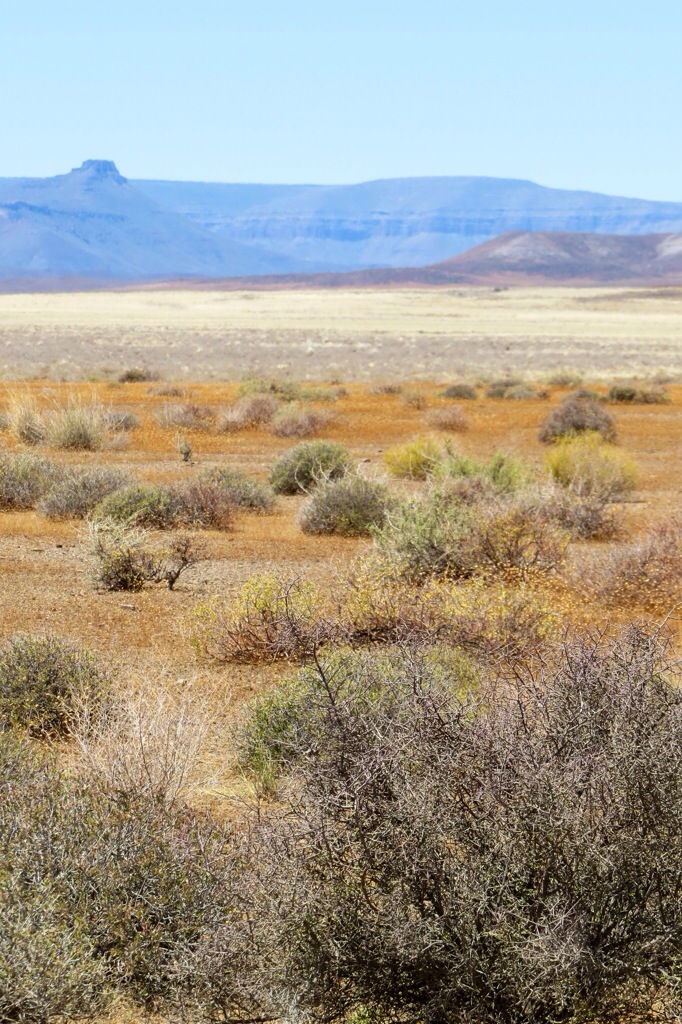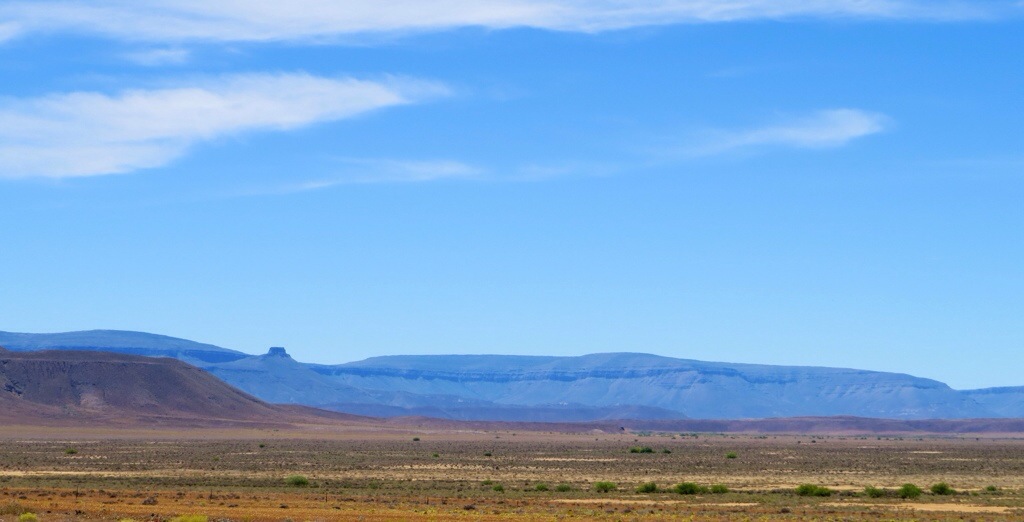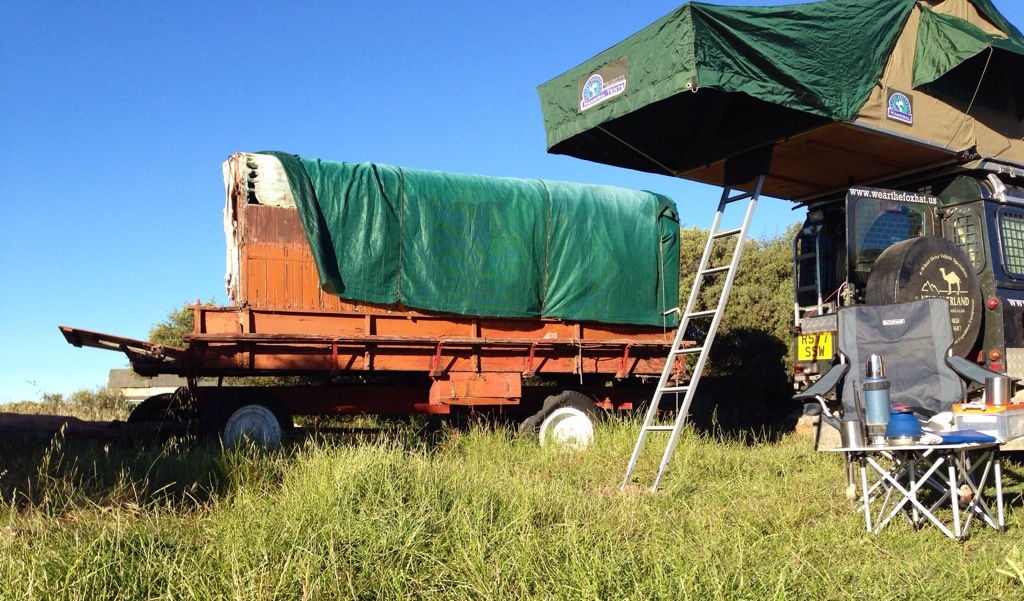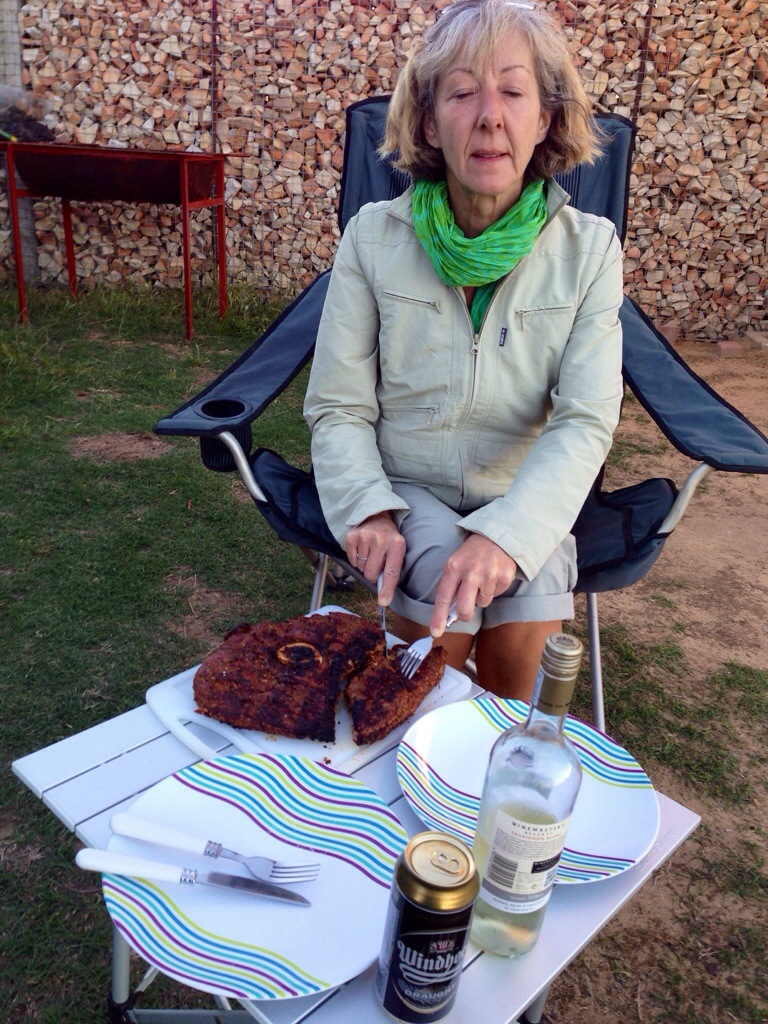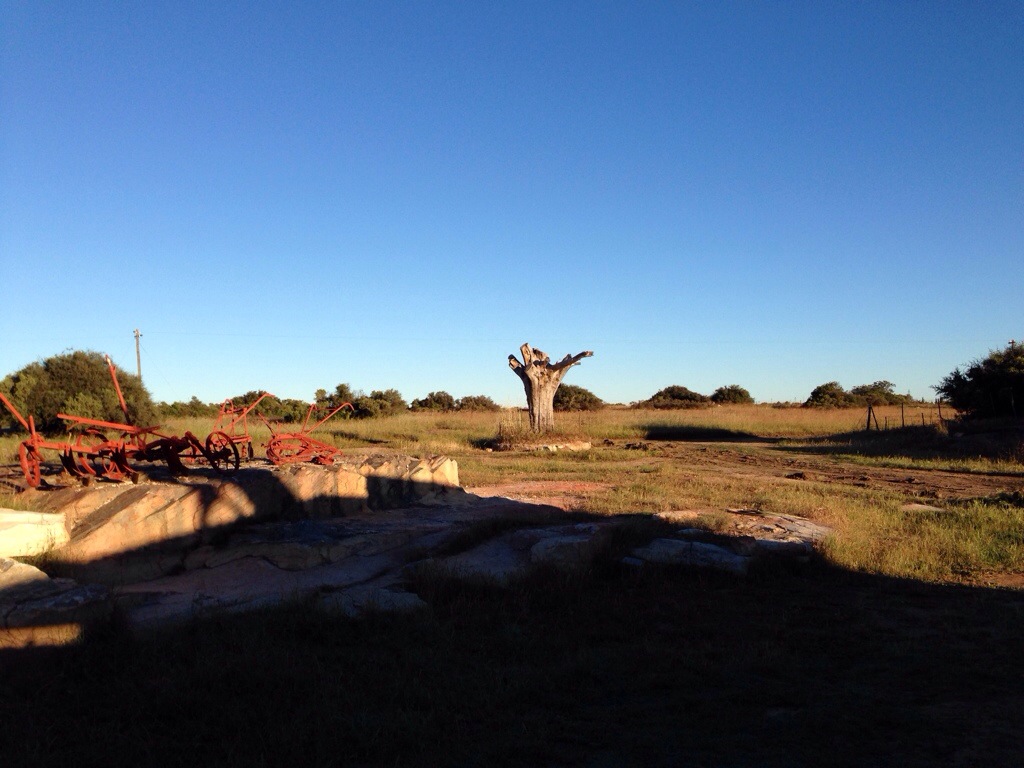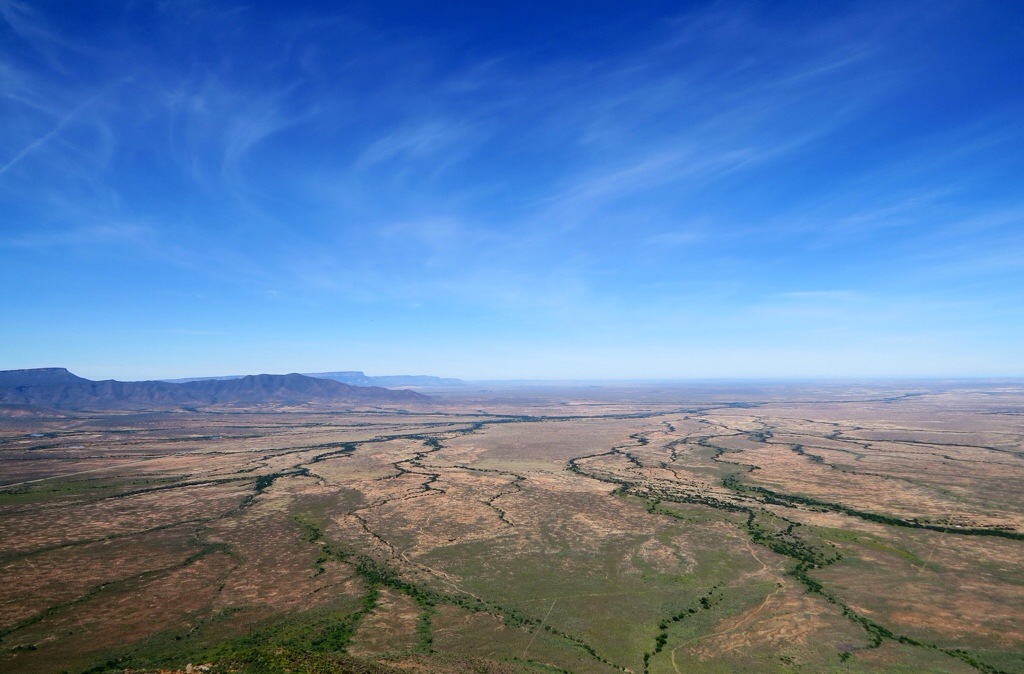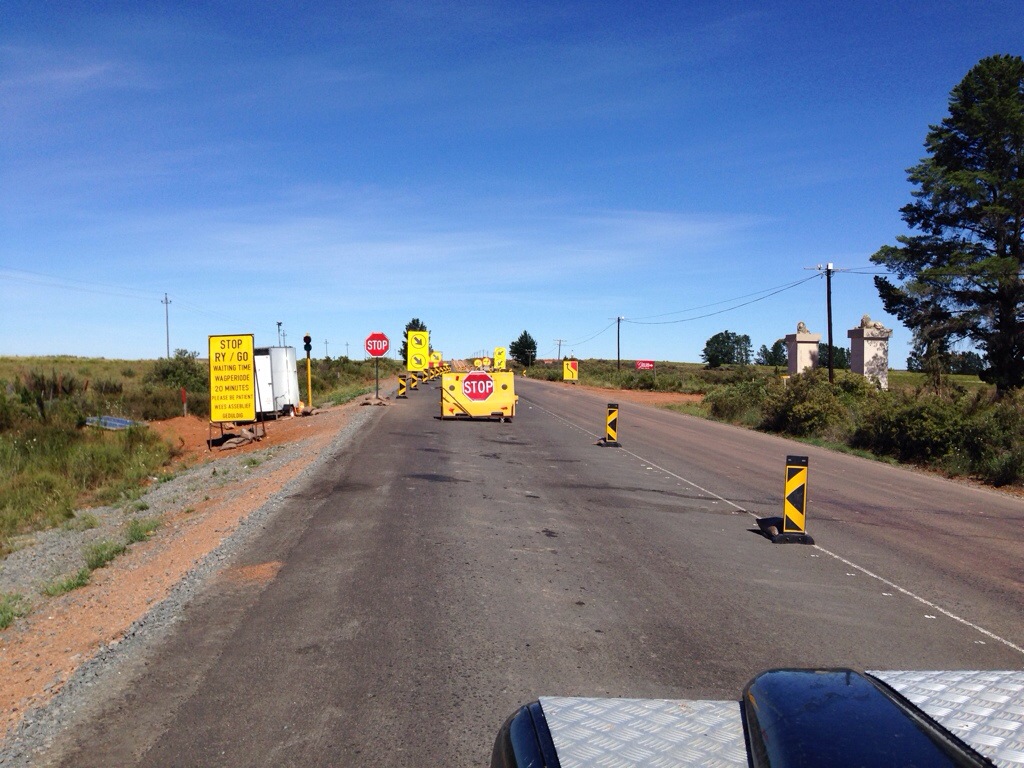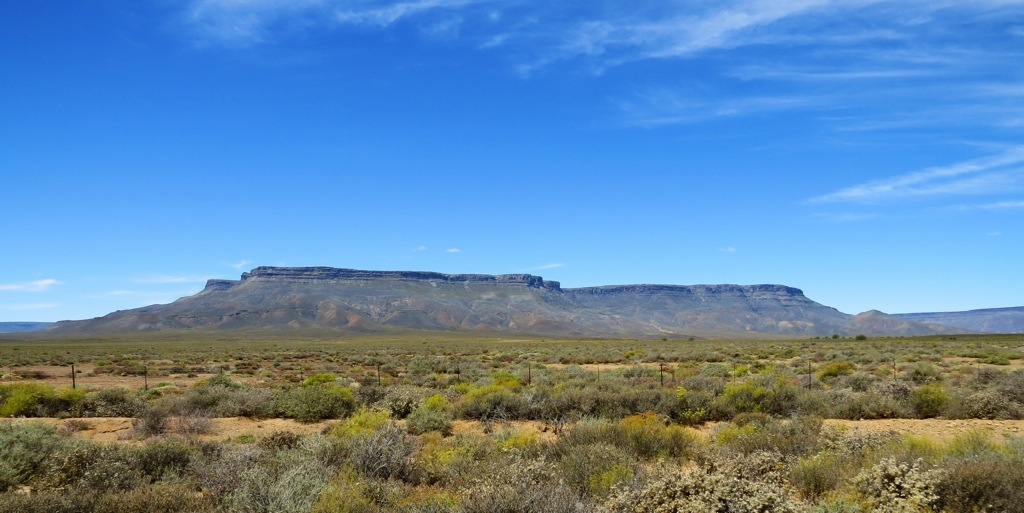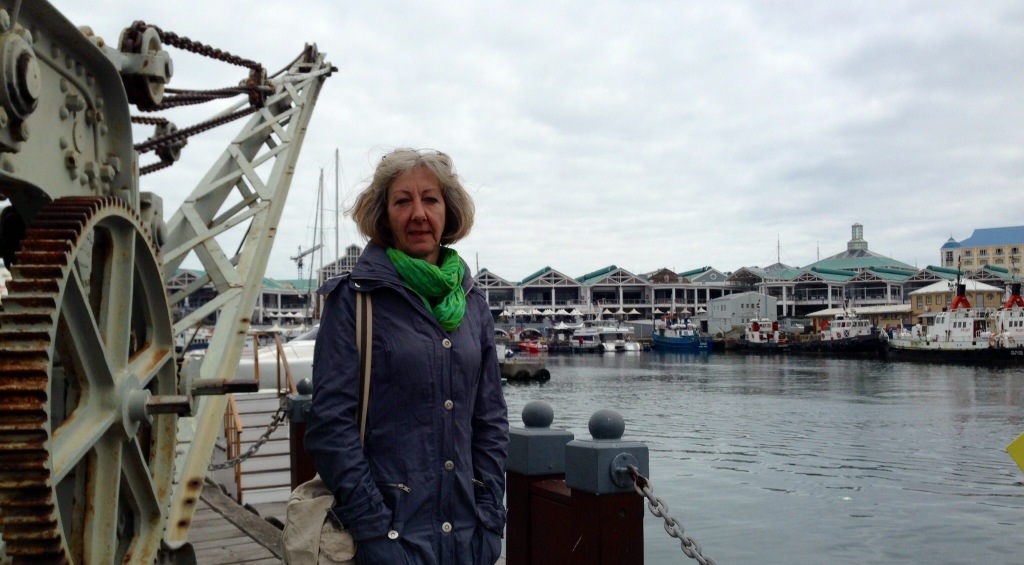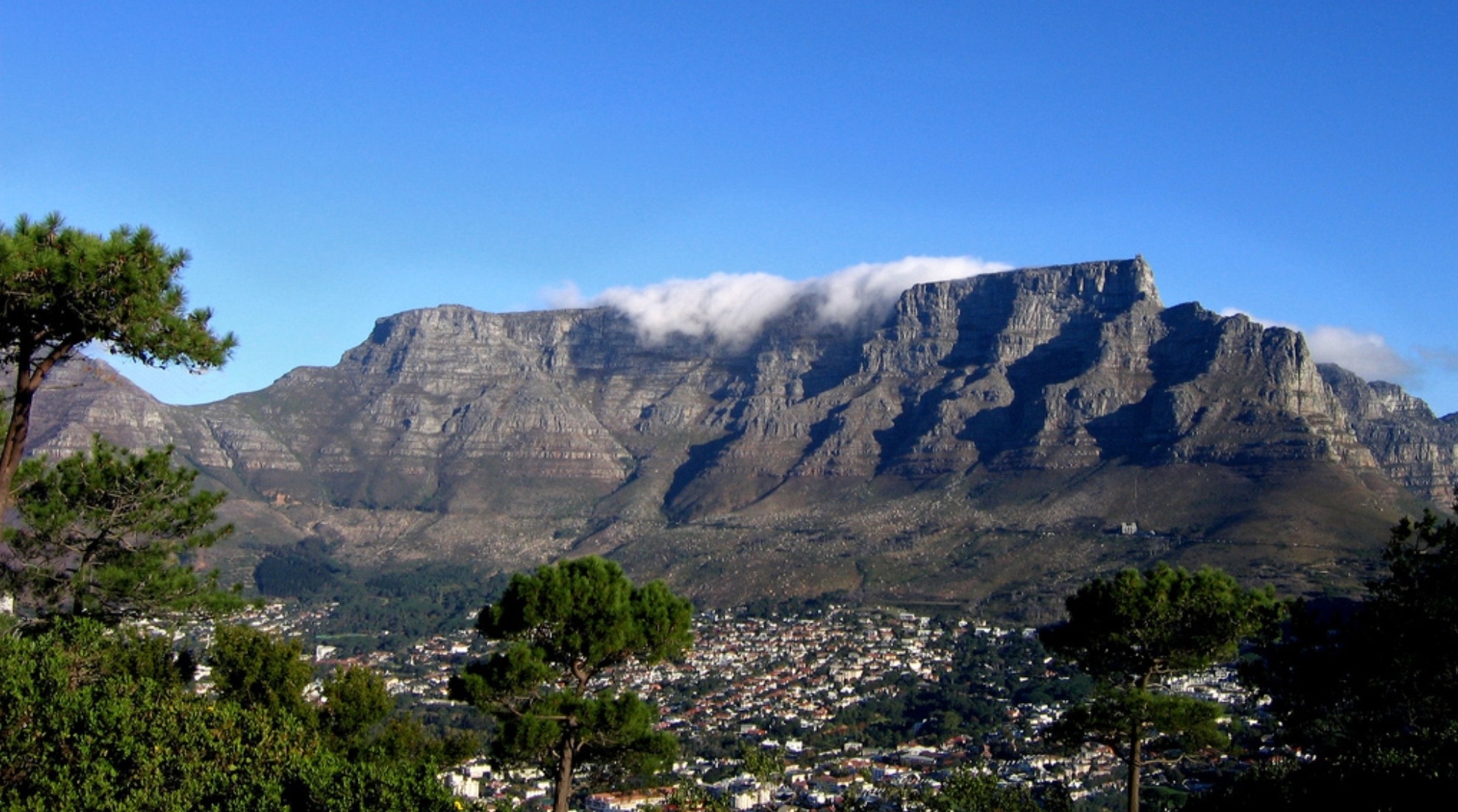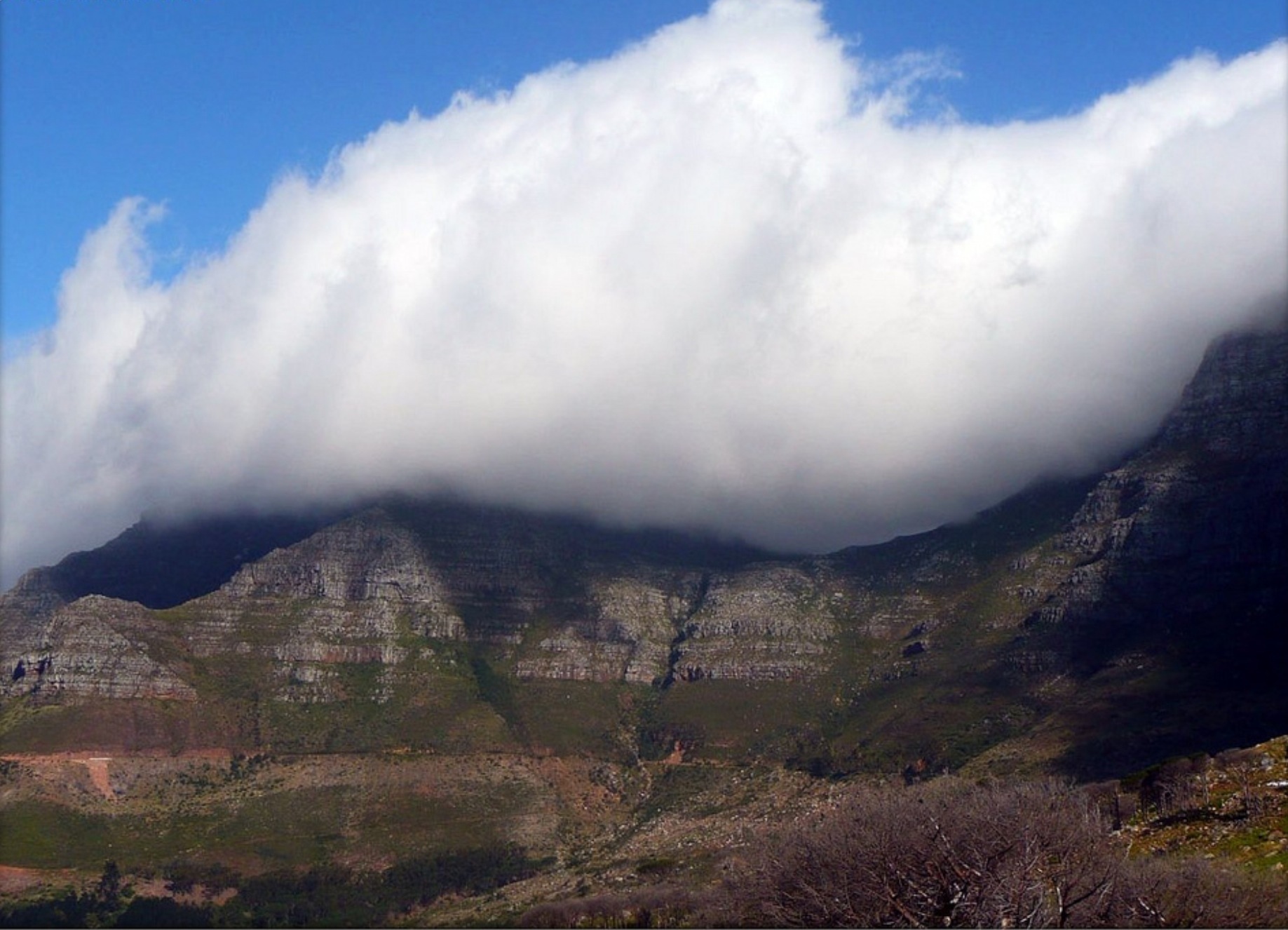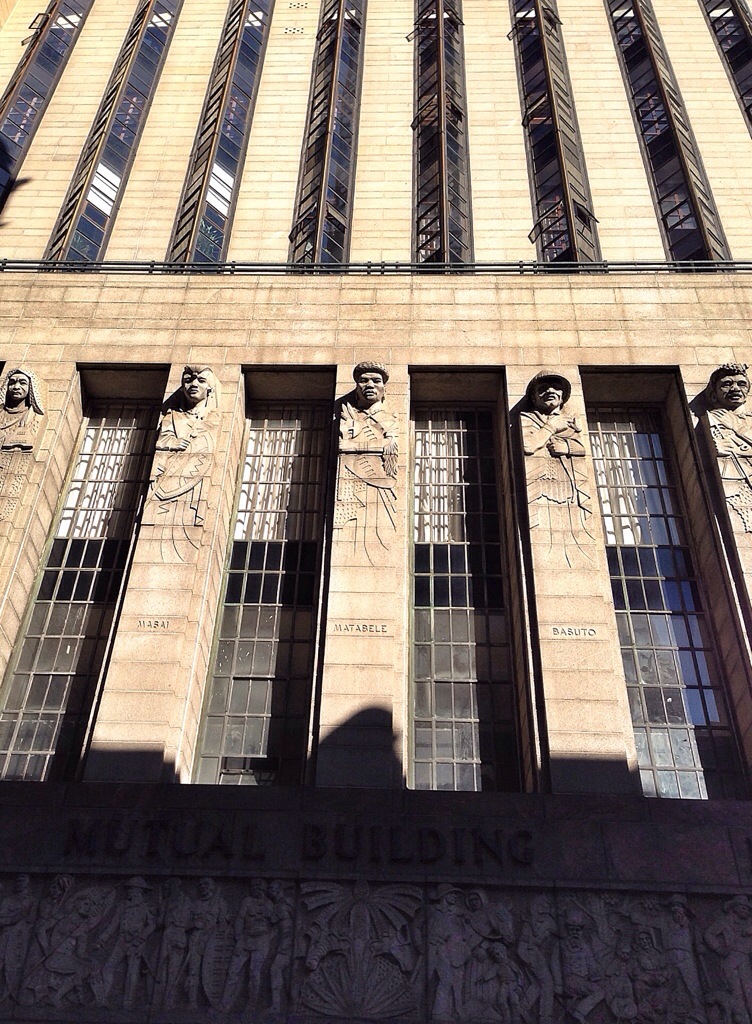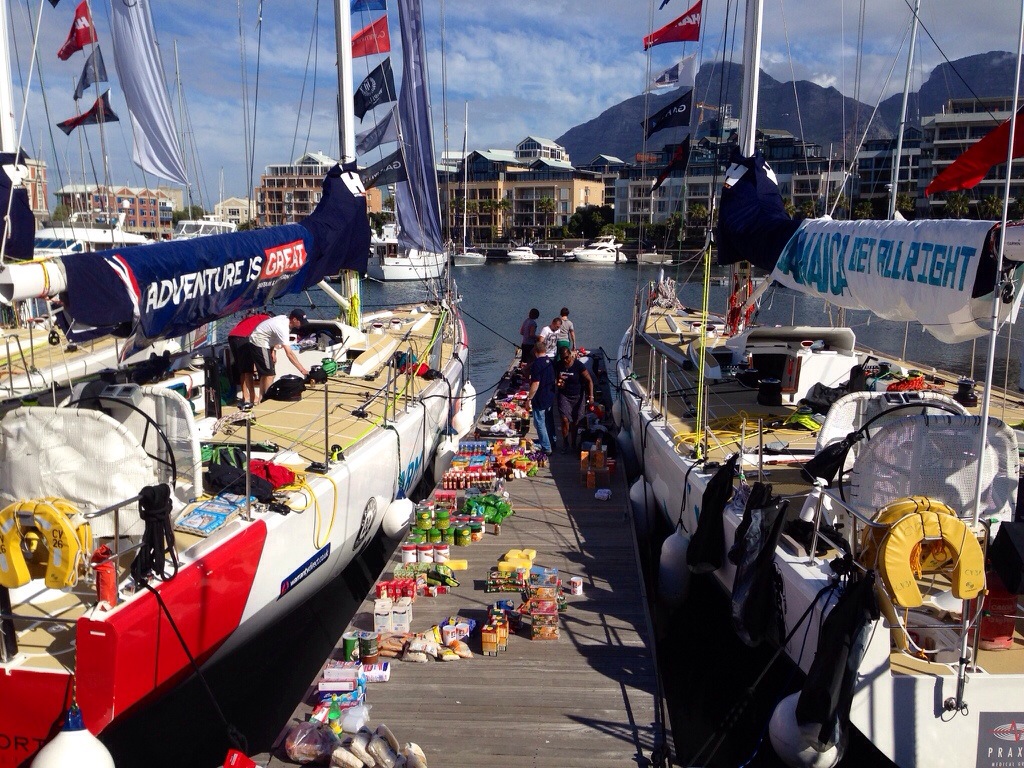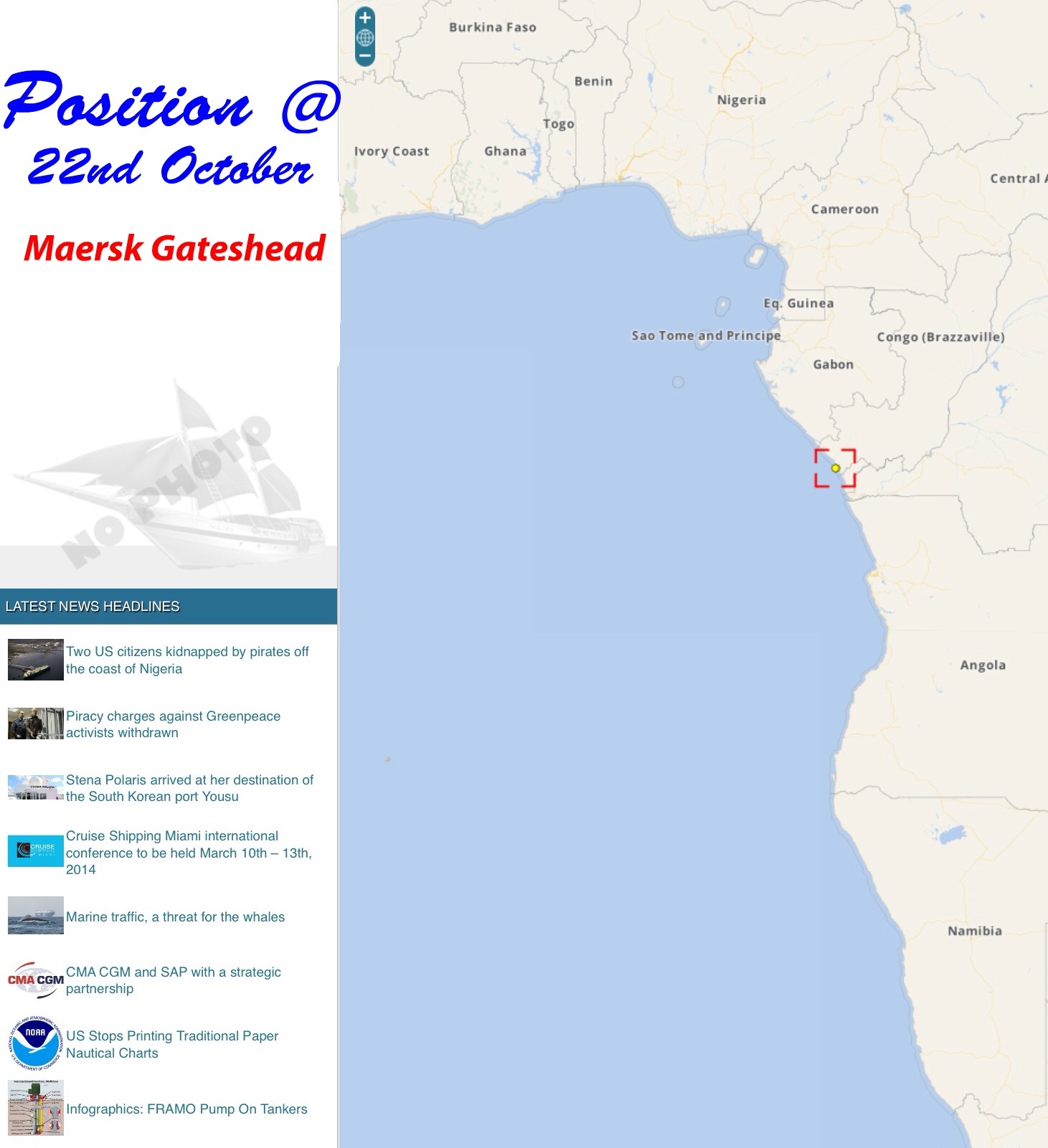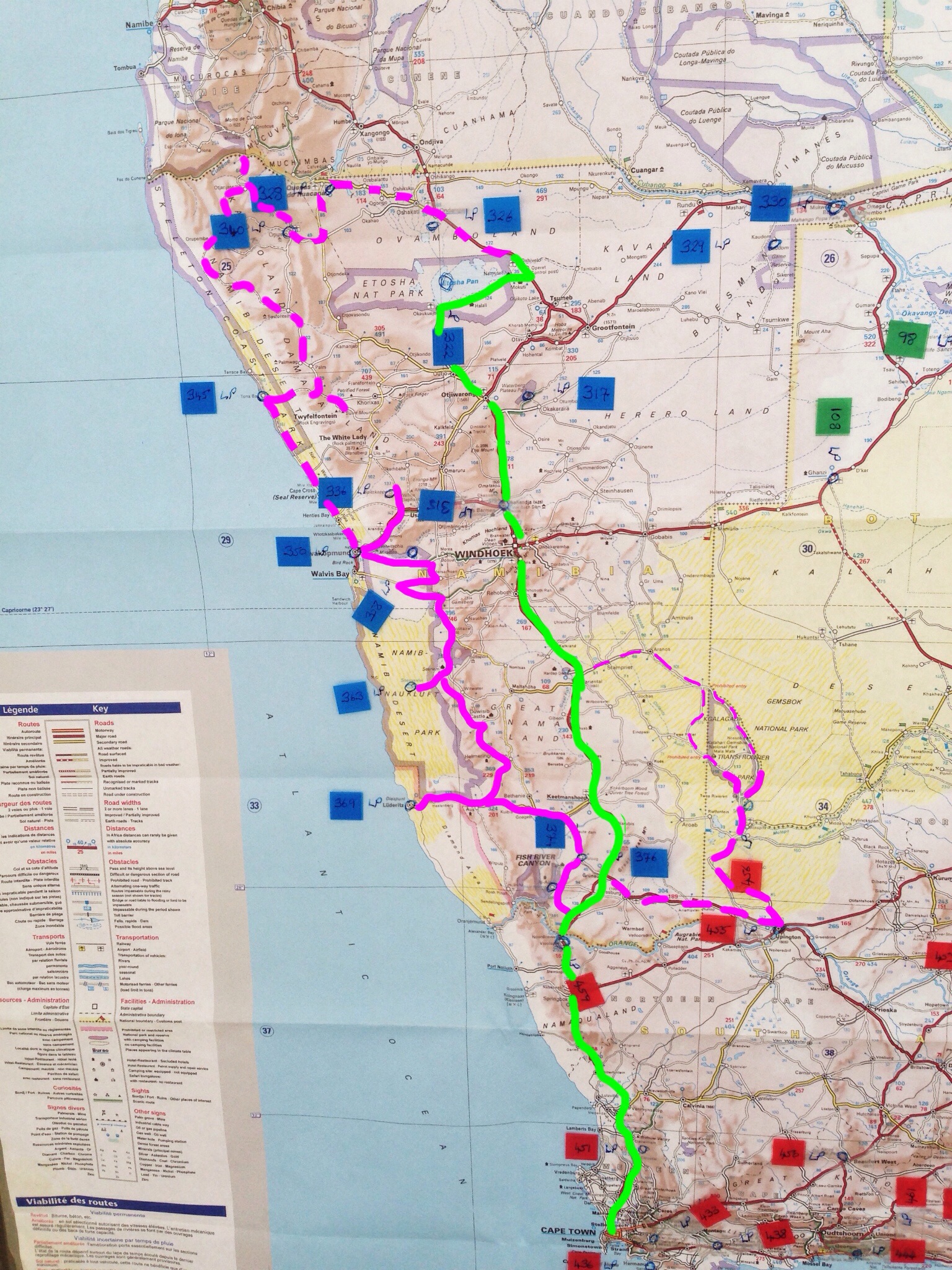Namatomi Camp is in the Far East of Etosha Park.
An old German Fort, converted into a few lodges, a restaurant (where we had an excellent treat – a 4-course buffet for $12 each) and a campsite for about 30 vehicles.
Since we were spending our last night there, and had to leave the park by 10am the next day, we decided to take the whole day getting there from Halali Camp (where the evening waterhole was attractive, but quiet).
It’s only 110km between the two and the tracks are poor in places, so we thought it would take us 3 hours or so anyway.
There’s only one track cars can take onto the pan….but even there animal tracks still lead out to the horizon.
Away from the pan there’s plenty to see…
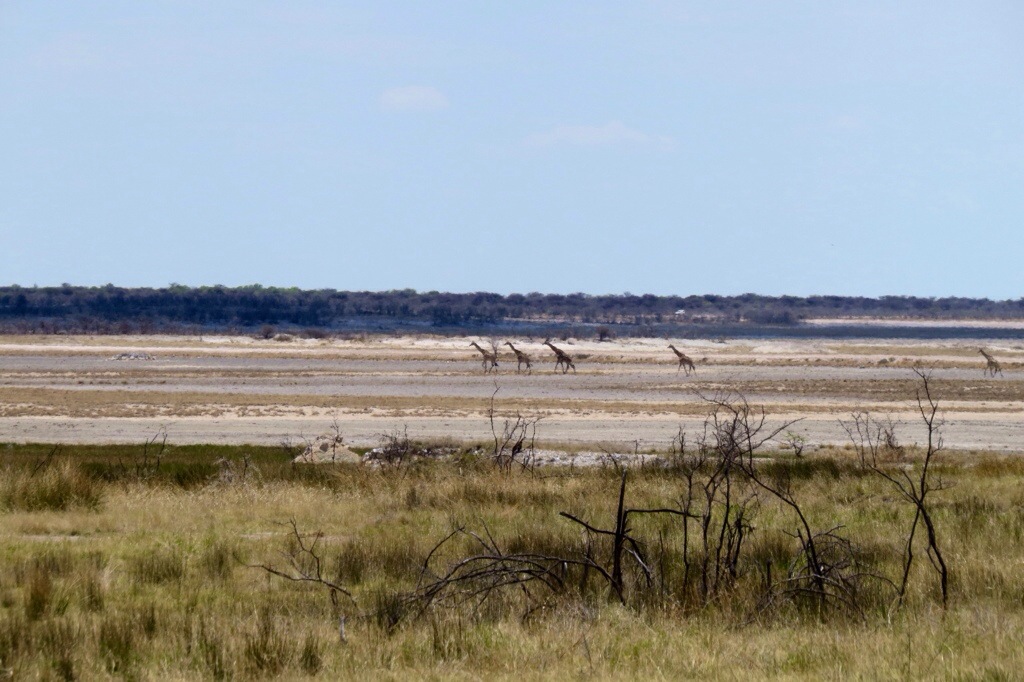
We only caught a glimpse of this Secretary bird and the picture doesn’t do it justice – it has the largest wingspan of any flying bird (up to 2.5m)! When it took off it was like watching a glider.
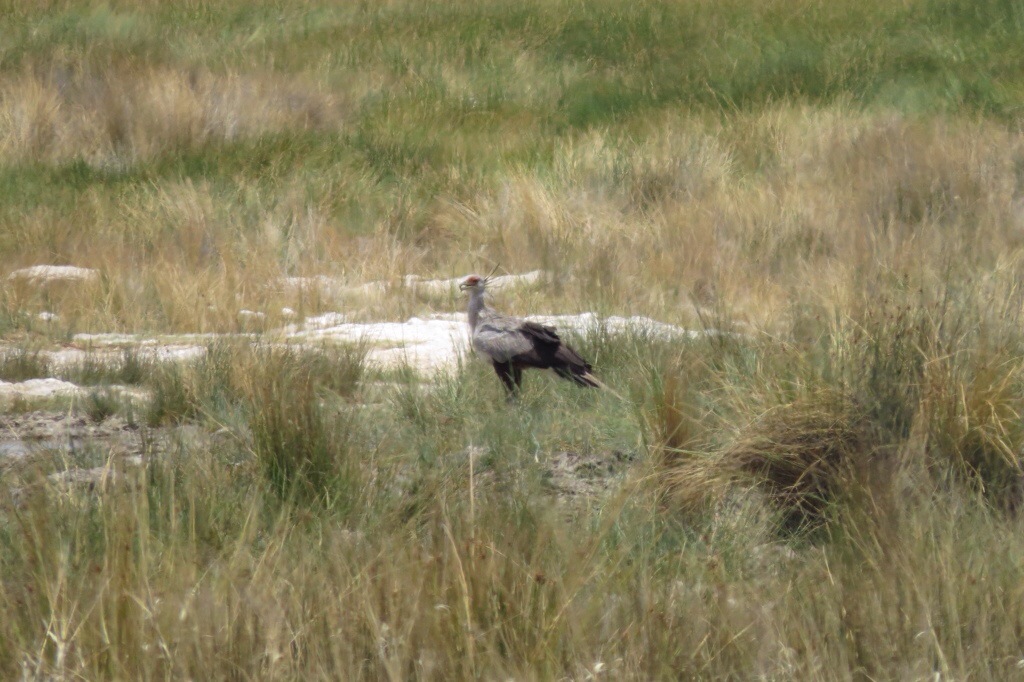
Travelling between two waterholes (which turned out to be dry) we came across a muddy puddle caused by the rains last night.
We really just stopped for a casual look, but then spotted some activity in the grass.
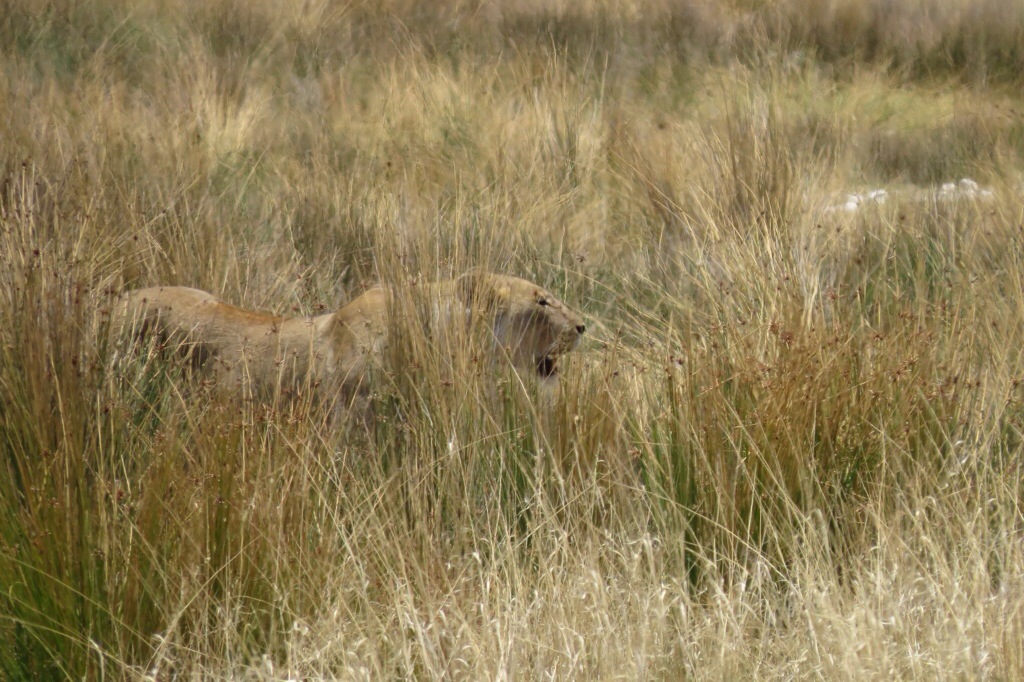
An ideal spot for them – a slightly elevated position, water and shade from the grass.
There were 6 lions in the grass and gradually each of them came down to the water to drink and laze in the heat of the day (almost noon by this time).
There are actually 5 females and 1 young male in this picture (although you won’t spot 2 of them).
Click the picture to enlarge…
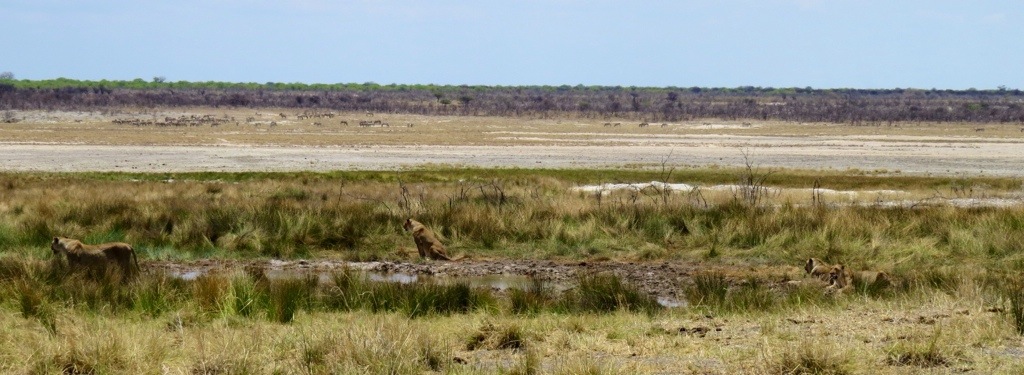
We parked the car only 30m from the waterhole and watched them for almost 3 hours as the chilled out.
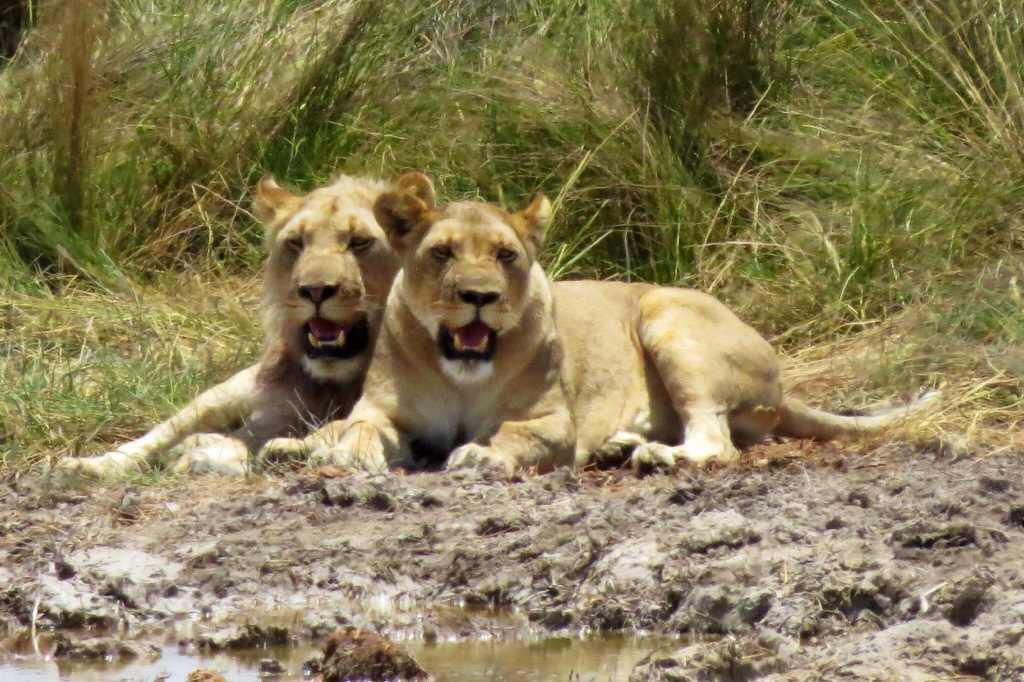
Most of the time they were just conserving energy.
And waiting.
Like us.
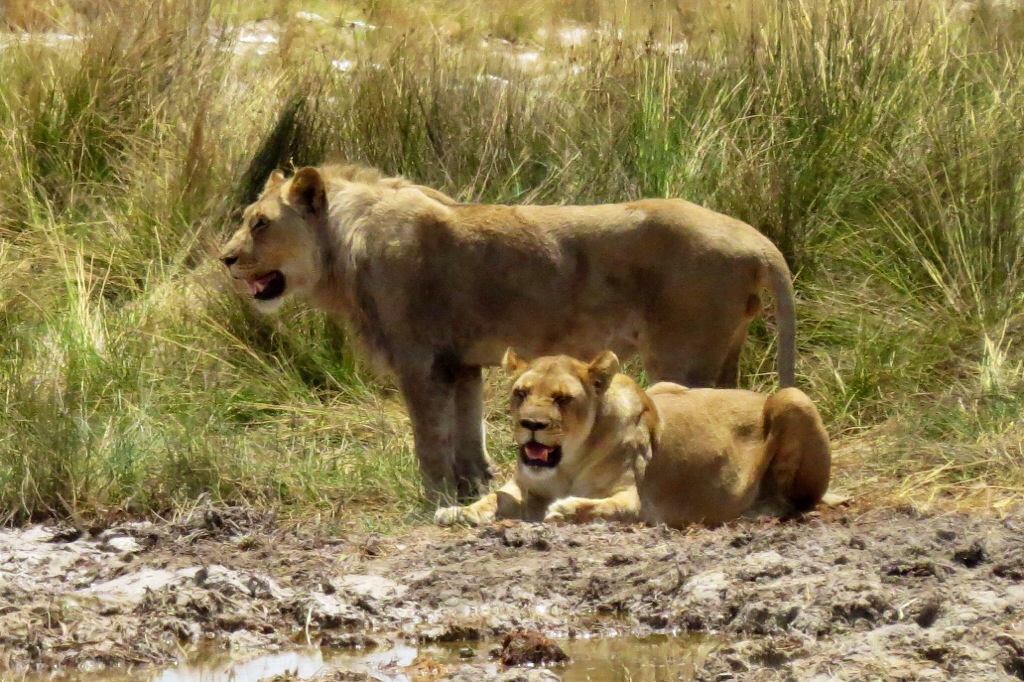
At one point a herd of Zebra came within about 300m of the water and the lionesses got wind of them…
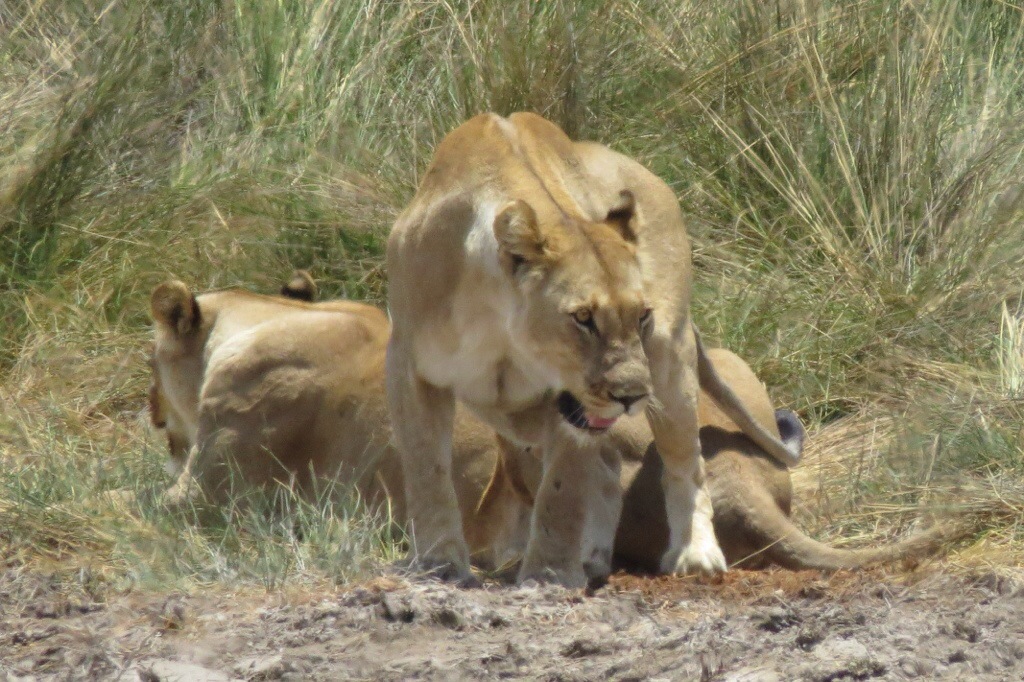
But the Zebra also seemed to get wind of the lions (they approached from slightly downwind) and scattered back the way they had come.
No drink for them this afternoon.
The male (naturally) didn’t bother to stir himself and just relaxed through all the surrounding tension.
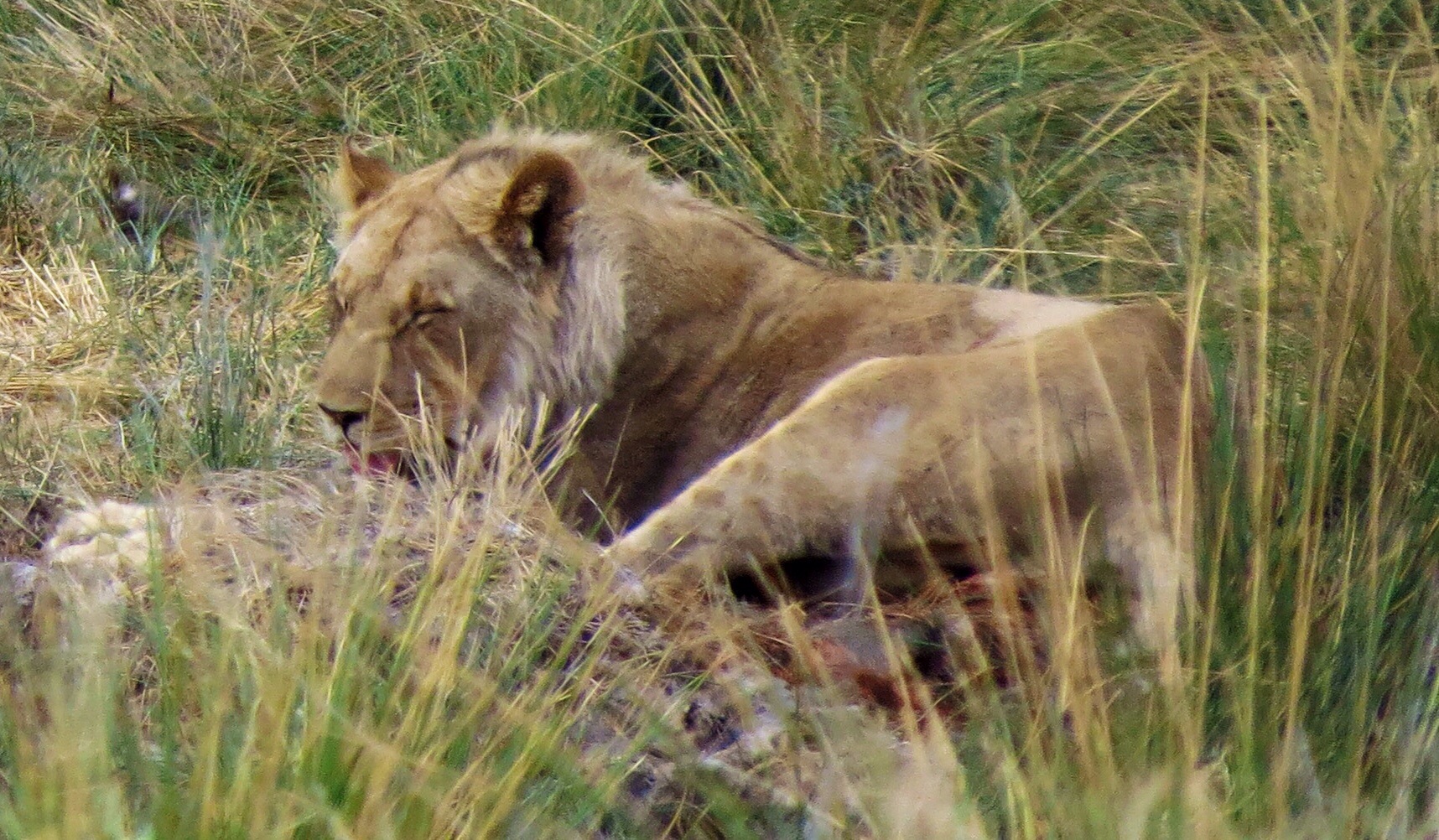
By about 3.30pm we were getting a bit restless (Land Rover seats are not built for comfort – mind you, I’m not sure what they are built for) when we noticed the lions splitting up and moving away from the water into the grass.
Most of them were no more than 15-20 metres from our car.
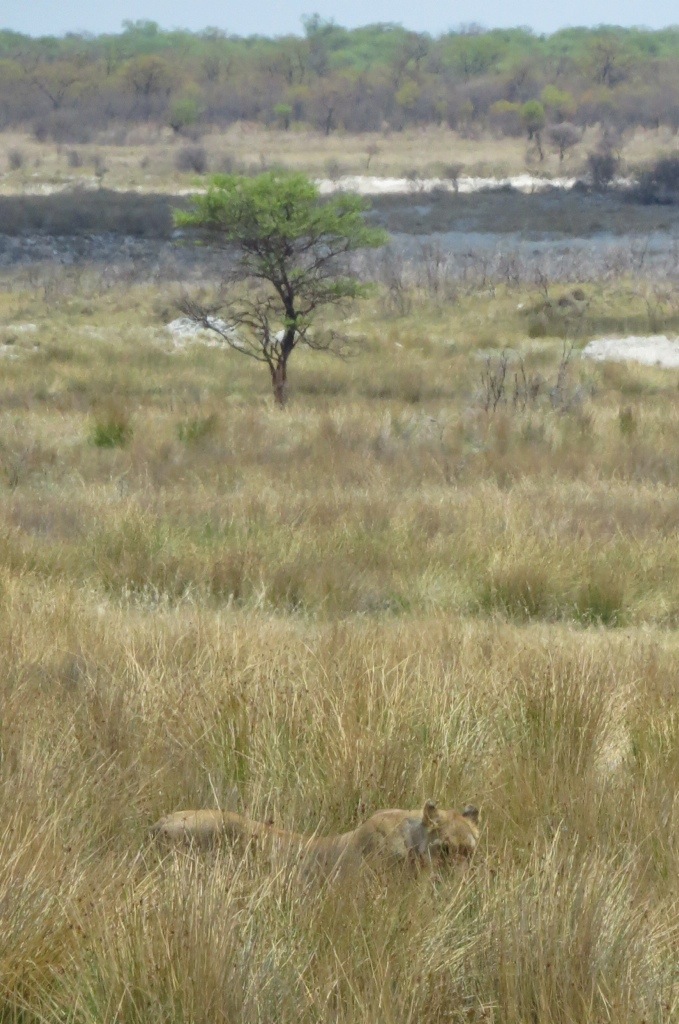
Something’s up.
Two lionesses sat one side of the water.
The other 4 went into the long grass.
Within 15 minutes a small herd of Springbok approached the waterhole (from upwind) – very cautiously.
Spot the 2 lions in the grass top right of the water in the grass in this picture…
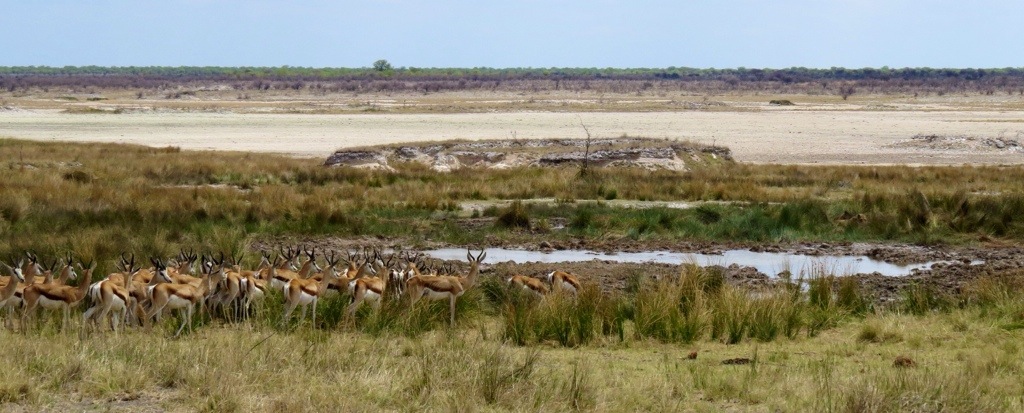
After 10 minutes about 30 Springbok were around the water, looking for a drink.
…through the water.
Still not a sound made (other than frantic splashing).
We could hardly keep up with the action with the camera.
It’s like American football – where’s the quarterback…who’s got the ball?
The quarterback emerged from the pond, splashed with mud.
She’d done her job – driven the Bok through the long grass.
Where the other’s had been concealed.
A kill.
Lions apparently kill quickly – either going for the throat or, with small prey like Springbok, putting the animal’s whole head in their mouth and suffocating it.
Then they share.
It’s a bloody business, and they obviously decide amongst themselves who gets the choicest cuts.
I guess someone always goes home with the trophy (I’m not sure how much eating there is on it though)?
Four hours of waiting.
Seven minutes of frenzy.
All within 30m of the car.
Covered in blood….
…Lunch is over…
…What’s next (one Springbok doesn’t go far between 6)…
For five hours we sat in the heat of the car.
Often wondering if we should move on: then wondering why would we bother, something always turns up.
Some other cars arrived at various times during the day – took a picture of the lion – ticked the box in their ‘I-spy Safari’ book – raced away to try and find something else.
Missed it all.
I wouldn’t have missed a second of it.
